How to Reset Safari to Default Settings on Your Mac
If Safari runs slow or fails to open a page on your Mac, we will show you how to reset the browser to its default state to fix those issues.
Safari helps you feel at home while browsing the web on a Mac. The latest iterations of Safari always bring improvements, but no browser is perfect. Over time, Safari tends to slow down, become sluggish, and feel unresponsive.
While Chrome and Firefox pack a reset button, this feature is missing from Safari. We will show you how you can reset Safari to default settings on your Mac.

First, Back Up Your Bookmarks
After you've used Safari for a while, you probably have a lot of sites saved in your Bookmarks and Favorites. It's a good idea to make a copy of your Bookmarks before you proceed. Since you'll remove every bit data related to Safari, you probably don't want to erase all your bookmarks.
To do this, launch Safari, select the File tab in the top menu bar, and click Export Bookmarks . You can either set a new name or let it use the default one if you don't mind it. Click Save to save a copy of those bookmarks.
You may also want to edit, organize, and manage those bookmarks that you've collected over years.
After you've reset Safari by following the methods below, you can import the HTML copy of your Bookmarks by going to File > Import From and selecting Bookmarks HTML File . Make sure to save the file somewhere safe in the meantime.
Clear the Browsing History in Safari
To start, you should run Safari's built-in history cleaner. This will remove cookies and other browsing data from everywhere you've visited. Thankfully, the process to remove your browsing history manually from Safari is quite straightforward.
Related: How to Clear Your Safari Browsing History and Data
After opening Safari, click on the Safari item in the top menu bar and select Clear History . A window will pop up; select All History from the dropdown list. Then click on the Clear History button to erase all that data from Safari.
Remove the Temporary Files and Cache
To improve your browsing efficiency, Safari stores the data for sites that you visit regularly as cache on your Mac and uses that to load elements faster than downloading them again. That cache takes up disk space and often contributes to Safari's performance woes.
It's thus a good idea to get rid of that old data when you're resetting Safari to its defaults. Here's how to clear Safari's temporary files and cache:
- While you have Safari running, open Safari > Preferences from the menu bar.
- A window will pop open. Head to the Advanced tab and select the check box for Show Develop menu in menu bar .
- The Develop menu will appear next to Bookmarks on the menu bar. Select Develop > Empty Caches or use Option + Cmd + E to quickly clear the web cache.
Delete All Cookies
Like other browsers, Safari stores site cookies whenever you visit websites. These cookies contain details about your interactions with the site, such as registration and form data, your cart contents, and similar. It's a good idea to remove those cookies when starting fresh.
Here's how you can clear all cookies from Safari:
- Launch Safari and in the menu bar at the top of the screen, go to Safari > Preferences .
- In the window that pops up, go to the Privacy tab and click the Manage Website Data button. That'll pop open a window showing the list of cookies in Safari.
- You can hold down Cmd to select cookies to remove individually, or click Remove All to delete the entire list.
Turn Off Website Access/Delete Safari Plugins
While Apple builds Safari for efficiency, some outside plugins and website access rules can cause Safari to slow down. It's best to ensure that those plugins ask you before Safari runs them. You can also confirm which sites can access your Mac's camera, microphone, and other settings.
With Safari open, go to Safari > Preferences in the menu bar on the top of the screen. Go to the Websites tab and check each item in the sidebar for website access. We recommend disabling Auto-Play , Camera , Microphone , Location , and Pop-Ups , unless you have some reason not to do so.
If you're using an older version of Safari that doesn't have these options, you can head to Safari > Preferences and click on Security > Plug-In Settings . Then set all the plugins to Ask before Safari runs them, and disable the ones you don't need.
Disable or Uninstall Safari Extensions
Unlike Chrome and Firefox, Apple allows only a handful of extensions to work with Safari. Even with this filtering, some of them might impact your browsing performance and slow everything down. Whether you use extensions for saving articles to Pocket or applying dark mode on every website, they could affect Safari.
You can disable these extensions by going to Safari > Preferences and clicking the Extensions tab. Uncheck each extension listed to disable it. To remove all of them, you'll need to select each extension and click on the Uninstall button in the adjacent pane.
You can always find and install new Safari extensions later after resetting the browser. Try to only install high-quality ones you absolutely need.
Reset Safari Using Terminal
Even after removing cookies, cache, browsing history, and extensions, Safari still has some underlying metadata. To wipe everything in a true sense, you can use the Terminal app.
Using the Terminal to reset Safari to its default state means you'll have to use a series of commands. Refer to our beginner's guide to the Mac Terminal for using it effectively.
To reset Safari using Terminal:
- Open the Terminal app (you can find it easily using Spotlight with Cmd + Space ).
- Next, open the Apple menu at the top-left corner of your screen. Click Force Quit and select Safari to completely close it.
- Enter the below commands commands, one line at a time. After you run each command, the Terminal will prompt for confirmation to delete said files. Type y to confirm, then hit Enter .
Reset Safari for a Fresh and Fast Browser Experience
Now you know how to effectively reset Safari to factory settings. It should feel faster after this—though all the sites you visit at first will take a couple of seconds to load completely, since they'll create new cookies and cache.
To get even more out of Safari, make sure you're applying the best Safari tweaks for a better experience.

Reset Safari on Mac without opening (using Terminal)
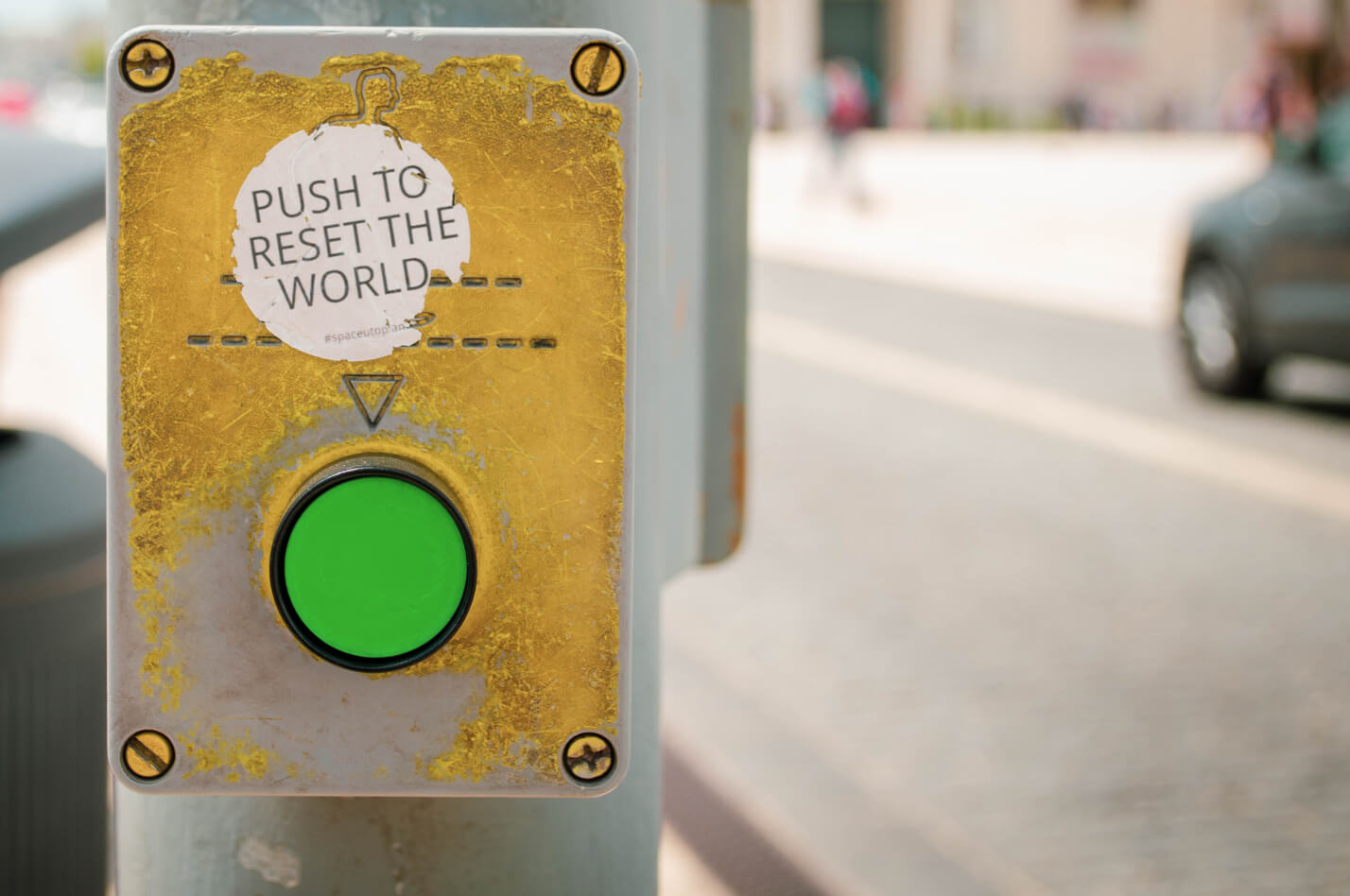
Safari is arguably the safest and fastest of browsers. Its Apple’s own application and comes preloaded on its devices. Yet not all users are equally excited about it. The reason? It needs to be configured frequently. One of the safest ways to reconfigure this is to reset Safari from the Terminal using the Command Prompt.
Why does Safari need resetting?
Over time, Safari fails to holdback pop-ups. Unmonitored dialog boxes that refuse to close may make your system vulnerable to malware or expose underage users to restricted sites. Or, while you sit down for work or leisure, you may be redirected to irrelevant pages repeatedly. In both cases, the browser stops working.
Try Kingpin Private Browser for Free »
How do you reset Safari from the Command Prompt?
You can safely do this by following the steps listed below. These do not need users to be particularly tech-savvy. So let’s get started.
Resetting Safari
#1. Open the Terminal application , like so:
Finder > Applications > Utilities
#2. The next step requires users to copy a series of commands and paste it onto the Terminal window .
The codes must be identical to the ones given below. Any modification is likely to damage the system beyond repair.
The codes are as follows:
mv ~/Library/Safari ~/Desktop/Safari-`date +%Y%m%d%H%M%S`; \ rm -Rf ~/Library/Caches/Apple\ -\ Safari\ -\ Safari\ Extensions\ Gallery; \ rm -Rf ~/Library/Caches/Metadata/Safari; \ rm -Rf ~/Library/Caches/com.apple.Safari; \ rm -Rf ~/Library/Caches/com.apple.WebKit.PluginProcess; \ rm -Rf ~/Library/Cookies/Cookies.binarycookies; \ rm -Rf ~/Library/Preferences/Apple\ -\ Safari\ -\ Safari\ Extensions\ Gallery; \ rm -Rf ~/Library/Preferences/com.apple.Safari.LSSharedFileList.plist; \ rm -Rf ~/Library/Preferences/com.apple.Safari.RSS.plist; \ rm -Rf ~/Library/Preferences/com.apple.Safari.plist; \ rm -Rf ~/Library/Preferences/com.apple.WebFoundation.plist; \ rm -Rf ~/Library/Preferences/com.apple.WebKit.PluginHost.plist; \ rm -Rf ~/Library/Preferences/com.apple.WebKit.PluginProcess.plist; \ rm -Rf ~/Library/PubSub/Database; \ rm -Rf ~/Library/Saved\ Application\ State/com.apple.Safari.savedState
After you’ve pasted it, hit Enter to complete changing the setting. To use Safari once more, restart your system and launch the browser.
These commands are all you need to erase the old browser settings and get a new Safari browser that can block pop-ups, dialog boxes, and redirects. What you achieve through this is essentially a factory reset. Safari goes back to its earliest default setting before you began to customize it.
Alternative solution
Another way to bypass these issues is to migrate to a secure browser or use a different browser for specific activities online. There are some great browsers out there, for instance, Kingpin that hides all your browsing behavior . With it set to confidential browsing by default, you can go around several web risks like phishing or loss of passwords.
Kingpin does not save cookies or the data you enter online. Once your browsing session is over, the browser is wiped clean. You can block ads and recommendations too. It always works on the Incognito mode which is especially useful when one is making online transactions or browsing sensitive content. An additional browser is a safer option today.
Three things to keep in mind before resetting Safari
- Check for updates on the Mac OS and install if they have been released: Safari must run on the latest version of Mac OS to utilize its full set of features
- Close all running applications: It ensures your data loss is minimal during the Safari reset process and other applications are not affected.
- Create a backup file for all your bookmarks: You must have a list of bookmarks that takes you swiftly to useful sites. By deleting all stored data, you risk erasing all bookmarks too. Here is how you can find your bookmark file.
Apple icon > Go to Folder > type ˜ /Library > open folder Safari > find file Bookmarks.plist
This file records all your saved bookmarks. Better create a backup document of them before you go all blitzkrieg on browsing data.
Common solutions like disabling wireless network and deleting browser history along with stored data are usually enough to run Safari smoothly on Mac. But the fixes mentioned above fall short in your case since Safari can’t even be launched without the various dialog boxes and windows opening automatically. Even force quitting the browser does not help at all. Some users suggest holding the Shift key down while launching Safari but the effect is not consistent across all systems and versions.
In this case, you need to take a different approach – resetting Safari from the Terminal using the Command Prompt. A step-by-step solution has already been provided above. Follow the code sequence and your browser should be up and running just like before.
All in all, Safari is prone to malfunctioning from time to time like many other browsers. However, its fixes are easy to apply. If you would rather avoid tampering with system setting you can always continue online activities with an additional browser like Kingpin.
Related Posts:

Trending Story: Messages App Tips & Tricks | Spring Wallpapers | Easter Wallpapers | iOS 17.4 New Emojis
How to Reset Safari on Mac to Default (Completely – Sonoma)
Key Takeaway: Resetting the Safari browser on your Mac can significantly improve its performance by clearing junk files such as caches, browsing history, website data, extensions, and plug-ins. While there's no Reset button, you can achieve this by individually clearing these aspects following simple steps outlined in the article.
Safari is arguably the best web browser for MacBook and Mac computers. This may be attributed to the numerous improvements it has received over the years—especially in security and privacy. However, your Safari browser may start running slowly with time.
IN THIS ARTICLE
This is often caused by the accumulation of junk and temporary files created by the browser over time. Resetting the browser clears such files, allowing it to run much faster. As you may be aware, the Safari browser on Mac no longer has a Reset button for this purpose.
However, you can still reset the browser to its defaults by individually clearing the history, caches, plug-ins, and extensions on the browser. Get to know how you can reset the Safari browser on your Mac in just a few steps.
How Do I Reset Safari Browser?
Since the unveiling of the OS X Mountain Lion 10.8 , Apple no longer adds a Reset button to the Safari browser. As such, you cannot just reset the Safari browser in a single click as you would other popular browsers.
Instead, you need to clear the following aspects individually:
- The Browsing History
- Website Data
- Browser Cache
- Extensions
- Plug-ins
Note : Clearing such temporary files on the Safari browser will cause you to lose important auto-fill data, including usernames and passwords.
Here are the five things you need to do to reset the Safari browser on your Mac:
Reset the Safari Cache
Whenever you visit a web page, the browser saves the media files on that page as caches in a temporary folder—within the Library folder. Leveraging this saved information, Safari can reopen such web pages much faster.
While this is a beneficial functionality, these files accumulate over time and may occupy a significant amount of disk space. If not checked, this may slow or even cause the browser to crash. As such, it is advisable to clear your Safari browser cache as follows:
Method 1: Clearing the Safari Cache from Its Preferences
To clear the cache files from Safari preferences, proceed as follows:
Step 1 : Launch the Safari browser from the Launchpad on your Mac. Step 2 : Click on Safari —located towards the top-left corner of the browser homepage. Step 3 : Select Settings/Preferences from the drop-down menu that comes up.

Step 4 : Now navigate to the Advanced tab, then click on the checkbox adjacent to the Show Develop menu on the menu bar to enable it. This should display a Develop tab on the menu bar.
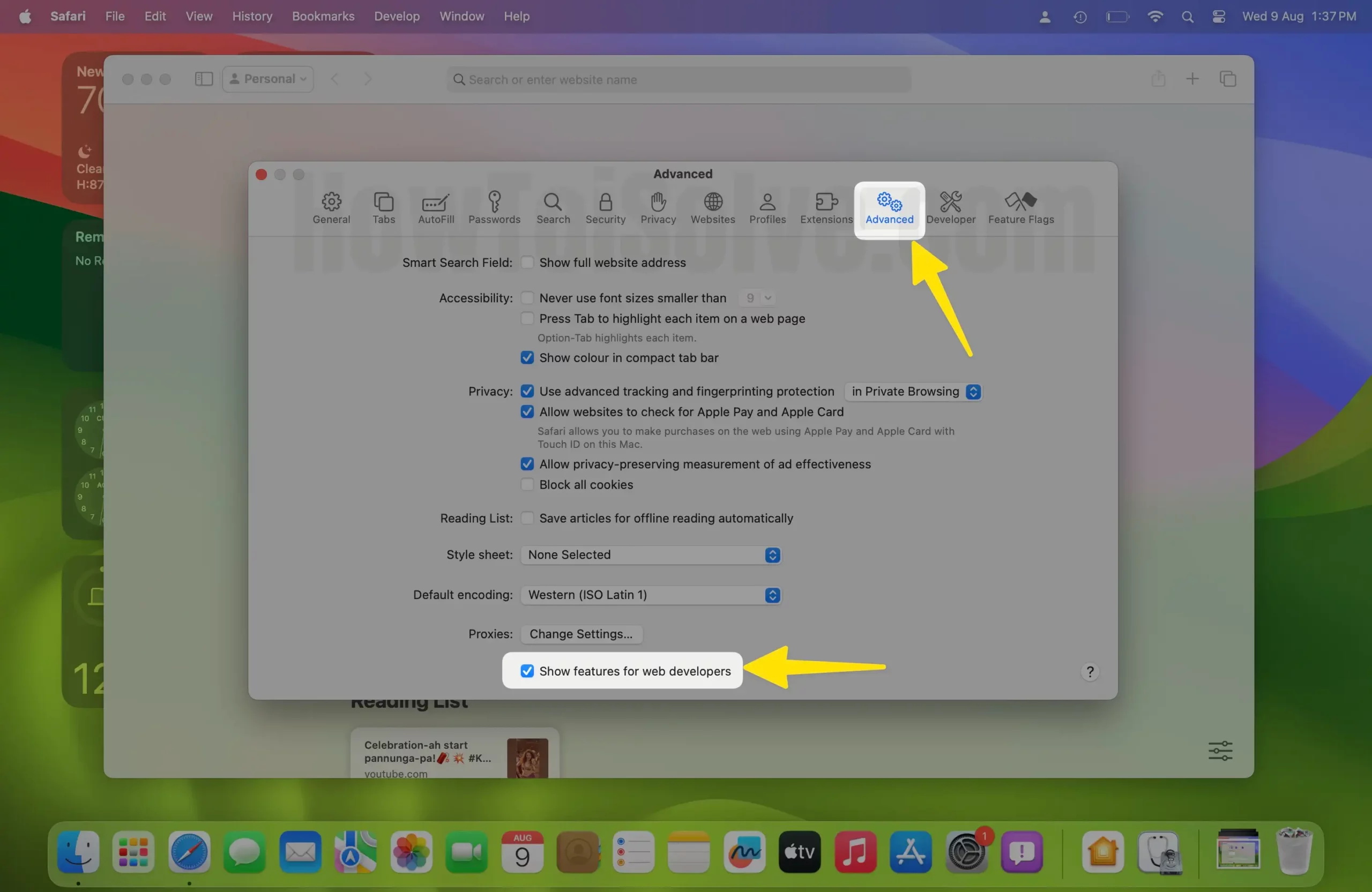
Step 5 : Click on this Develop menu command and choose the Empty Caches for all Profiles option (macOS Sonoma added the Feature of Create Profile in Safari & Save Cache for Different Profile).

Alternatively, you could also press the Command + E + Option key shortcut to clear the cache after enabling the Develop tab in Step 4 above. Once the Develop menu command is activated on your Safari browser, you can access it anytime you need to clear the cache.
Method 2: Manually Clear Safari Cache
If you are running macOS 10.14 or earlier macOS version on your Mac, you could also clear Safari Cache. These operating systems save all temporary files within the Library folder. To manually clear Safari Caches:
Step 1 : Open Finder Using Spotlight Search on Mac.
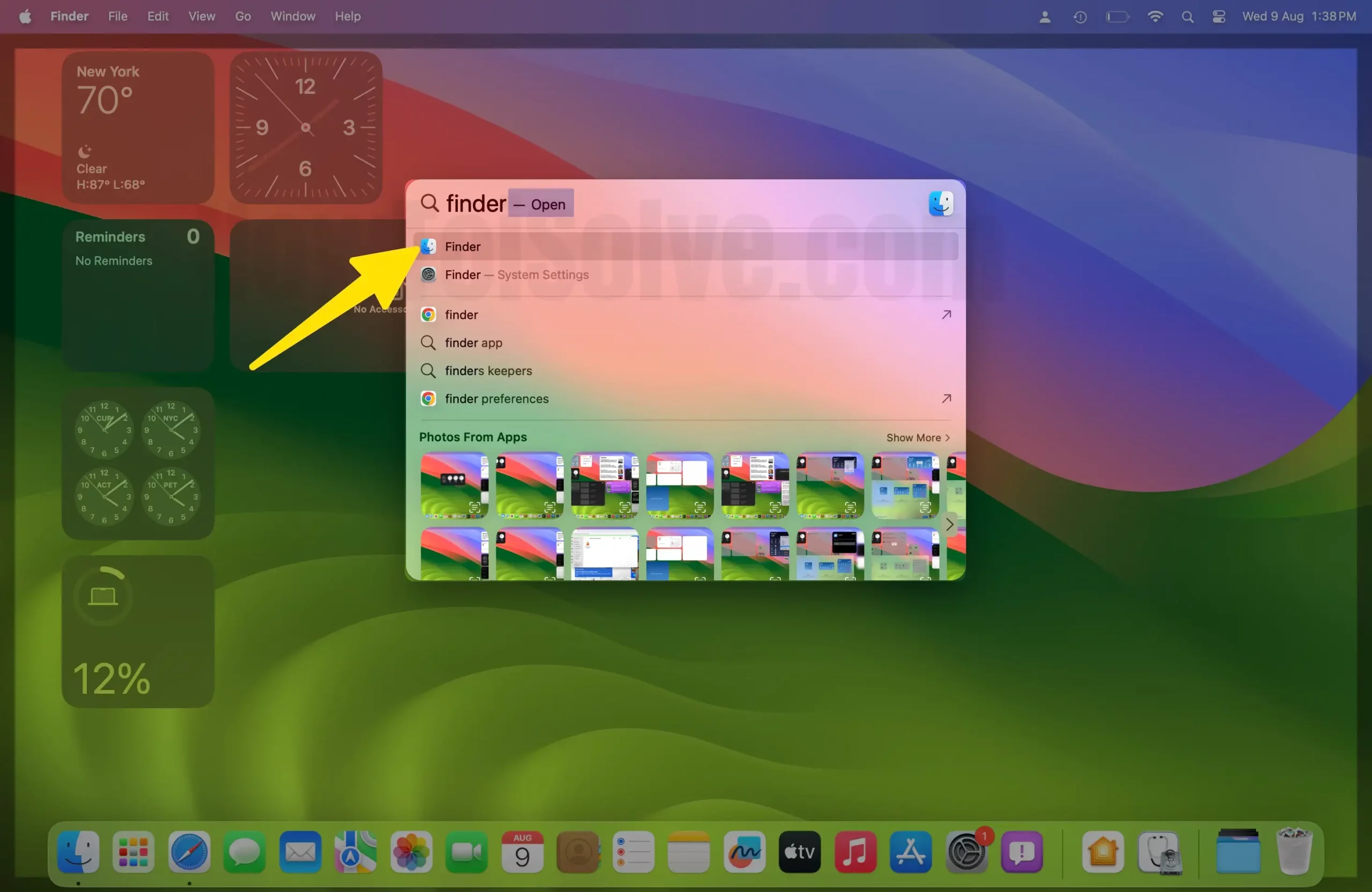
Step 2 : From the top menu Go > Go to Folder .

Step 3: Navigate to ~/Library/Caches hit the return and open the Caches folder.

Step 4 : Delete Only Safari Cache folders, use the search box in the finder window > Select Caches folder > Select Folders and Move to the bin .
Note : Be careful while deleting files from the Library folder, as removing essential files may end up damaging the system.
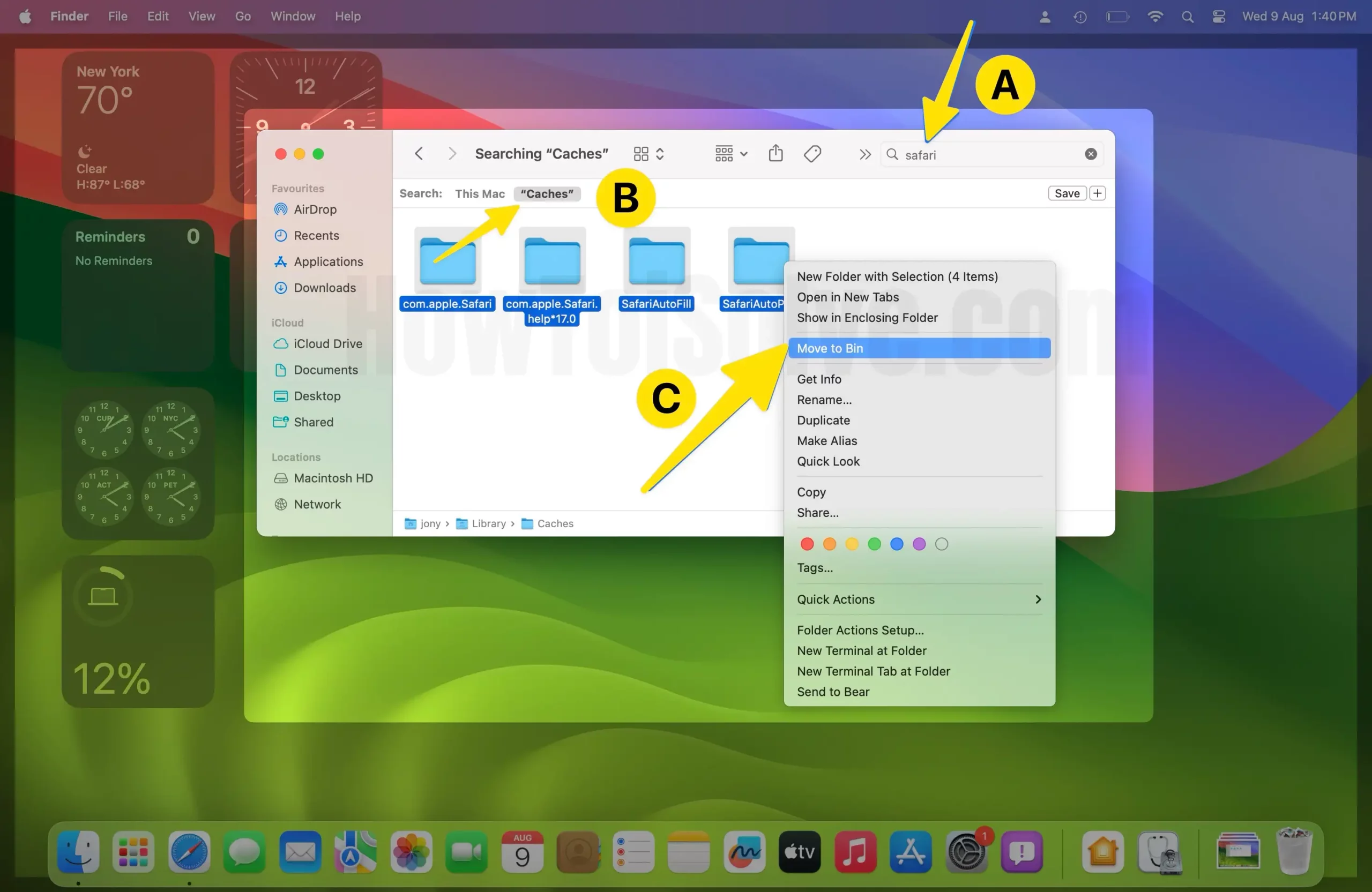
Or, select and then remove all the unnecessary files.
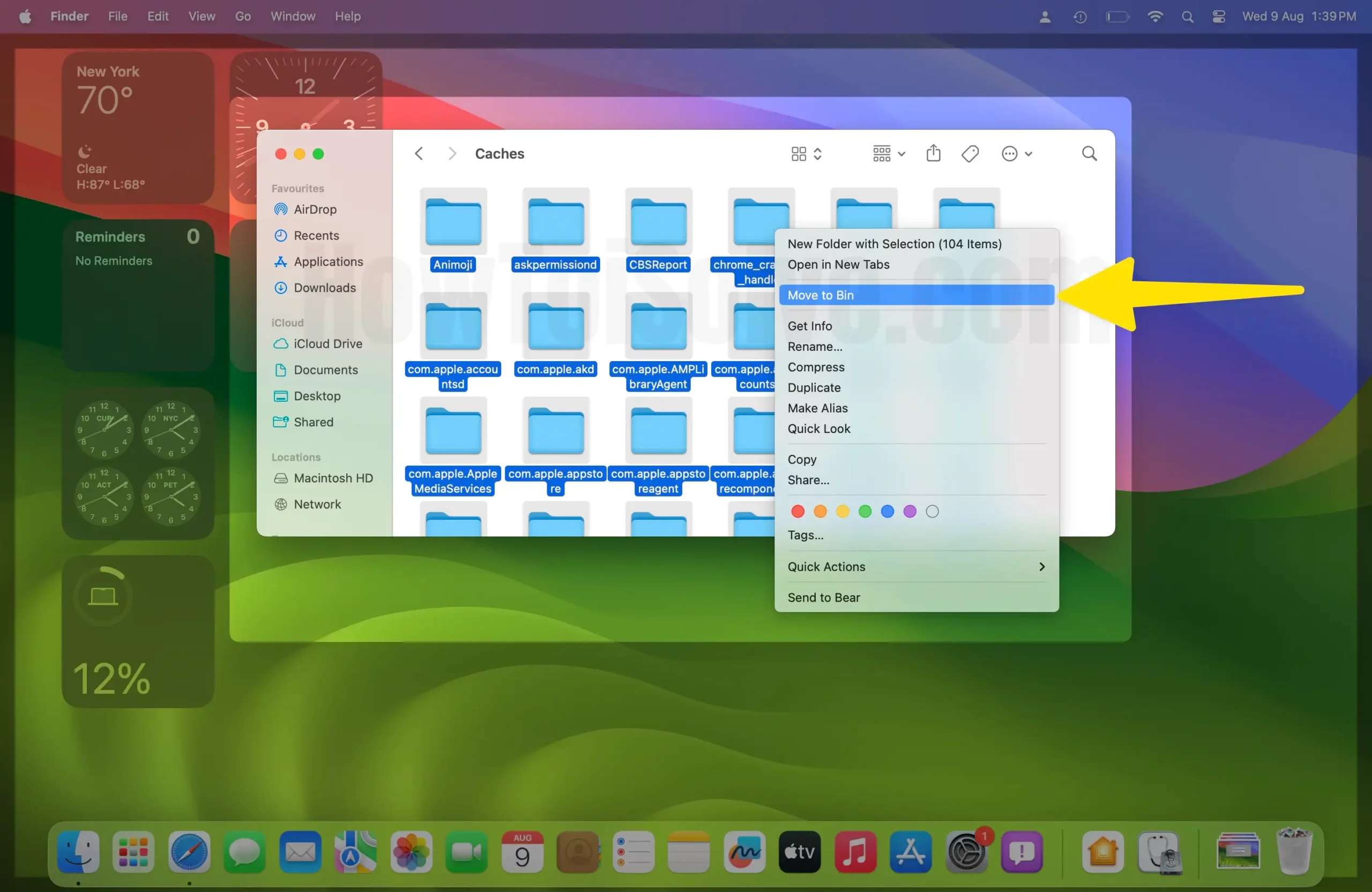
Clear Safari Browsing History
Just as is the case with other browsers, Safari keeps a history of the web pages you have visited in the recent past. To reset Safari on Mac, you need to clear this History as well. To clear the Safari browsing history on Mac:
Method 1: Manually Clear the Browsing History on Safari
The first option is to just wipe the history out manually, as illustrated below:
Step 1 : From the Launchpad , open the Safari browser. Step 2 : From the Menu bar , select the History tab.
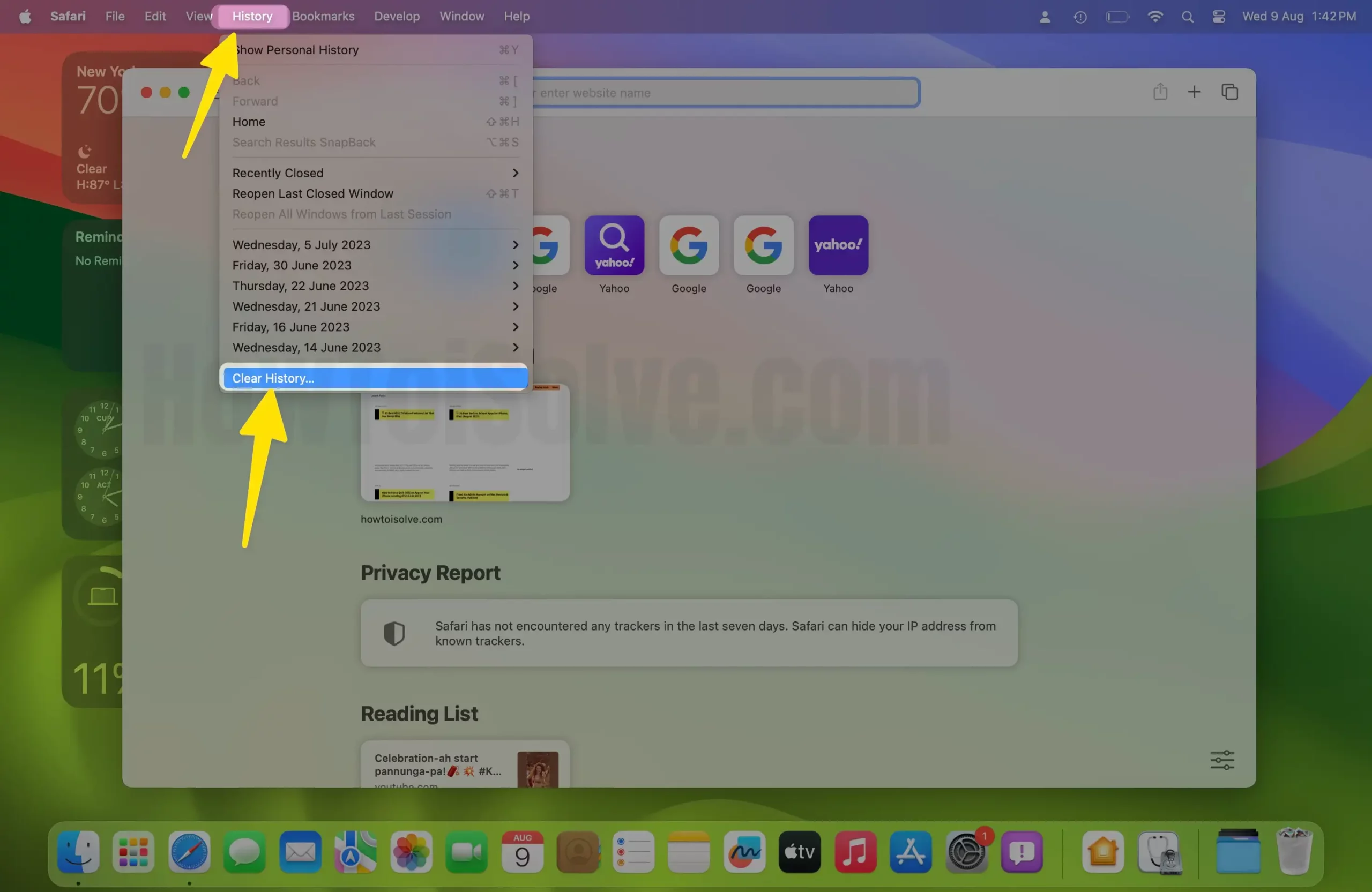
Step 3 : Choose the Clear History option from the drop-down menu that appears. Step 4 : Now select the time frame to clear, it is advisable to clear all history .
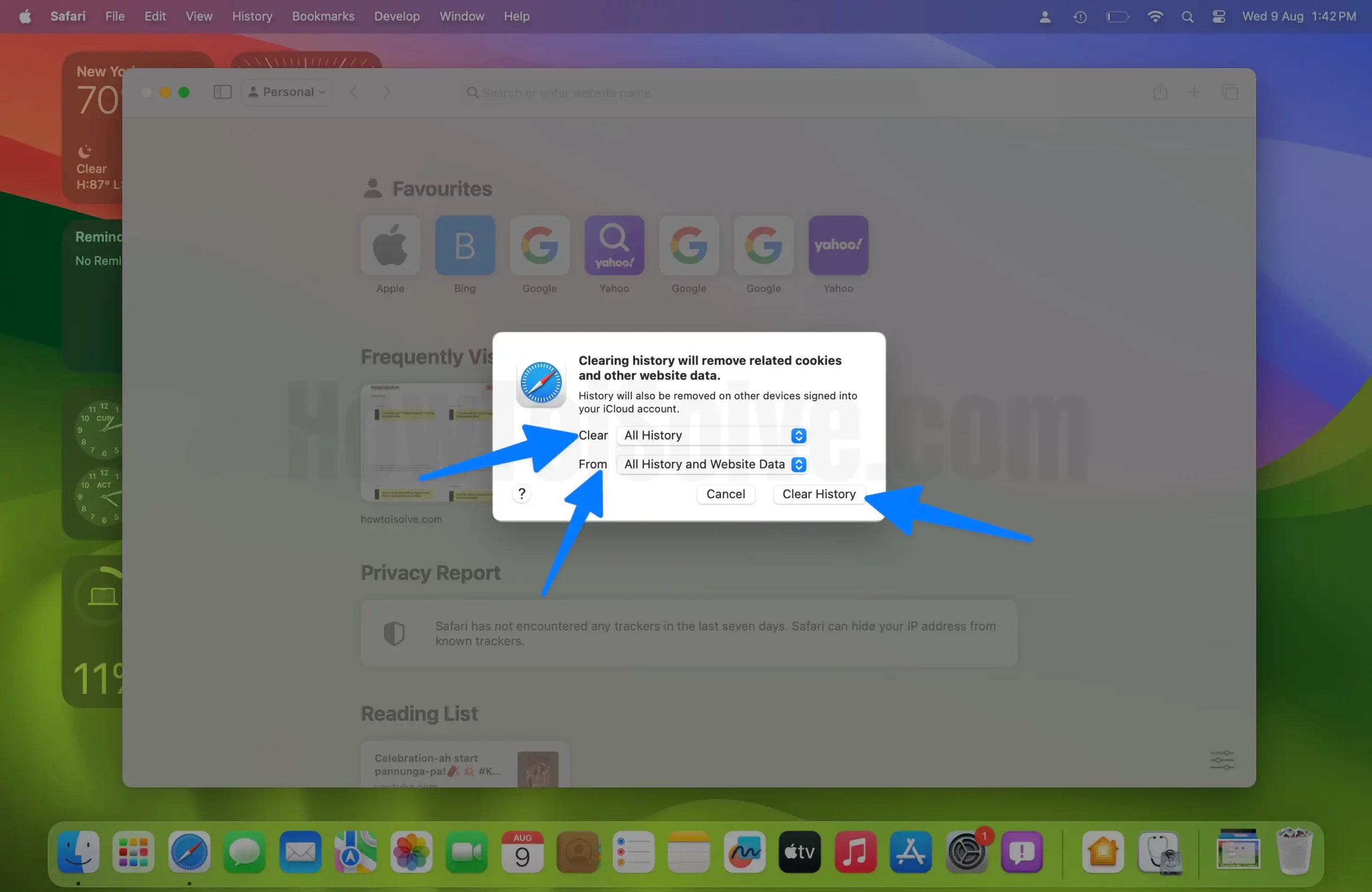
In Addition, we can clear the safari cache for specific profiles, Options showing ‘ From ‘. Select Profile and Clear Cache for Specific Profile.
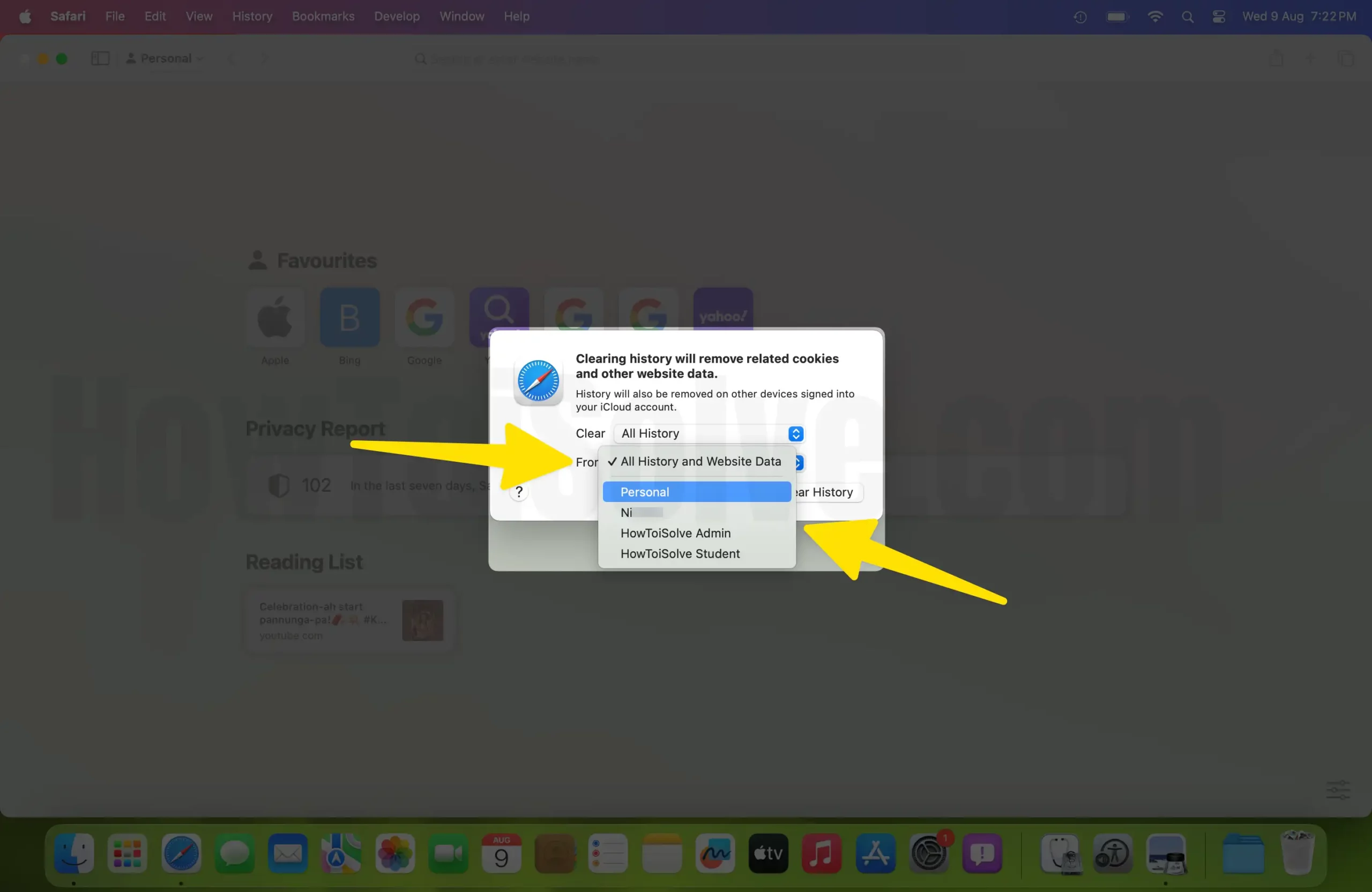
Step 5 : Finally, click on the Clear History button to initiate the process.
Note : If you happen to have enabled Safari in iCloud settings under the same Apple ID, a change in your browser history will be reflected across your other Apple devices using the same ID. Deleting Safari’s browsing history on one device will automatically clear the browsing history on the other Apple devices logged in under the same Apple ID.
Method 2: Configure Safari to Clear Browsing History Automatically
You could also set up the Safari browser in such a way that it automatically deletes your browsing history after a specified period. To do this:
Step 1: Open the Safari app on your Mac and then open Safari Settings/Preferences.

Step 2: Navigate to the General Settings tab on your Safari browser. Step 3: Select the Set up Remove history items option.

Step 4: Select your preferred clearing frequency for the automatic history removal. Step 5: Once set up, Safari will automatically be clearing your browsing history after the period you selected.
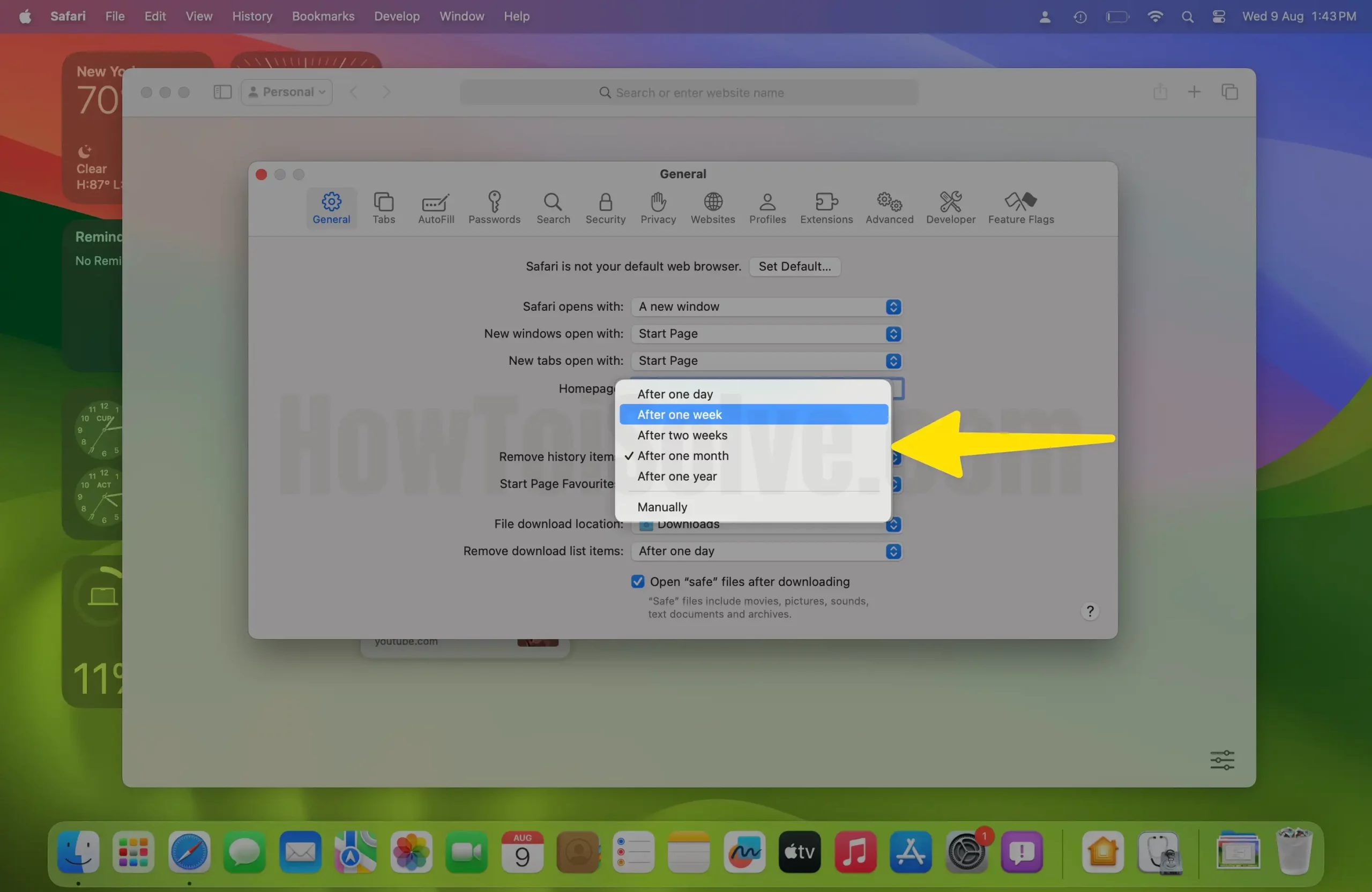
Reset Your Safari Website Data
Having cleared the cache and browsing history, now you should reset the website data to reset the Safari browser on Mac. To clear your Safari website data, you should:
Step 1: Launch the Safari browser on your Mac. Step 2: Click on Safari—towards the top-left corner of the Safari homepage. Step 3: Select the Settings/Preferences option and then navigate to the Privacy tab. Next, click on Manage Website Data
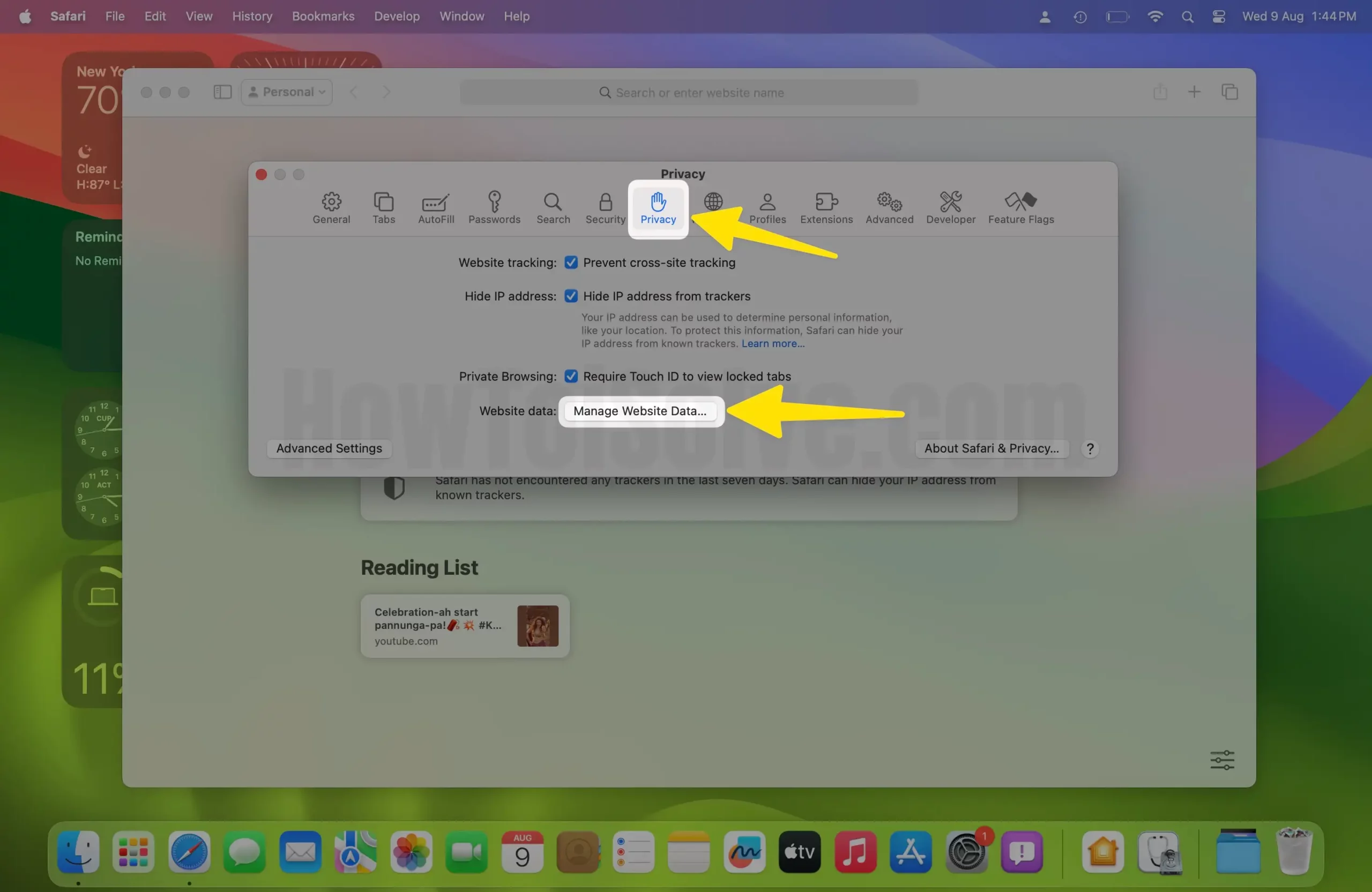
Step 4: before clicking Remove All —at the bottom-left corner.
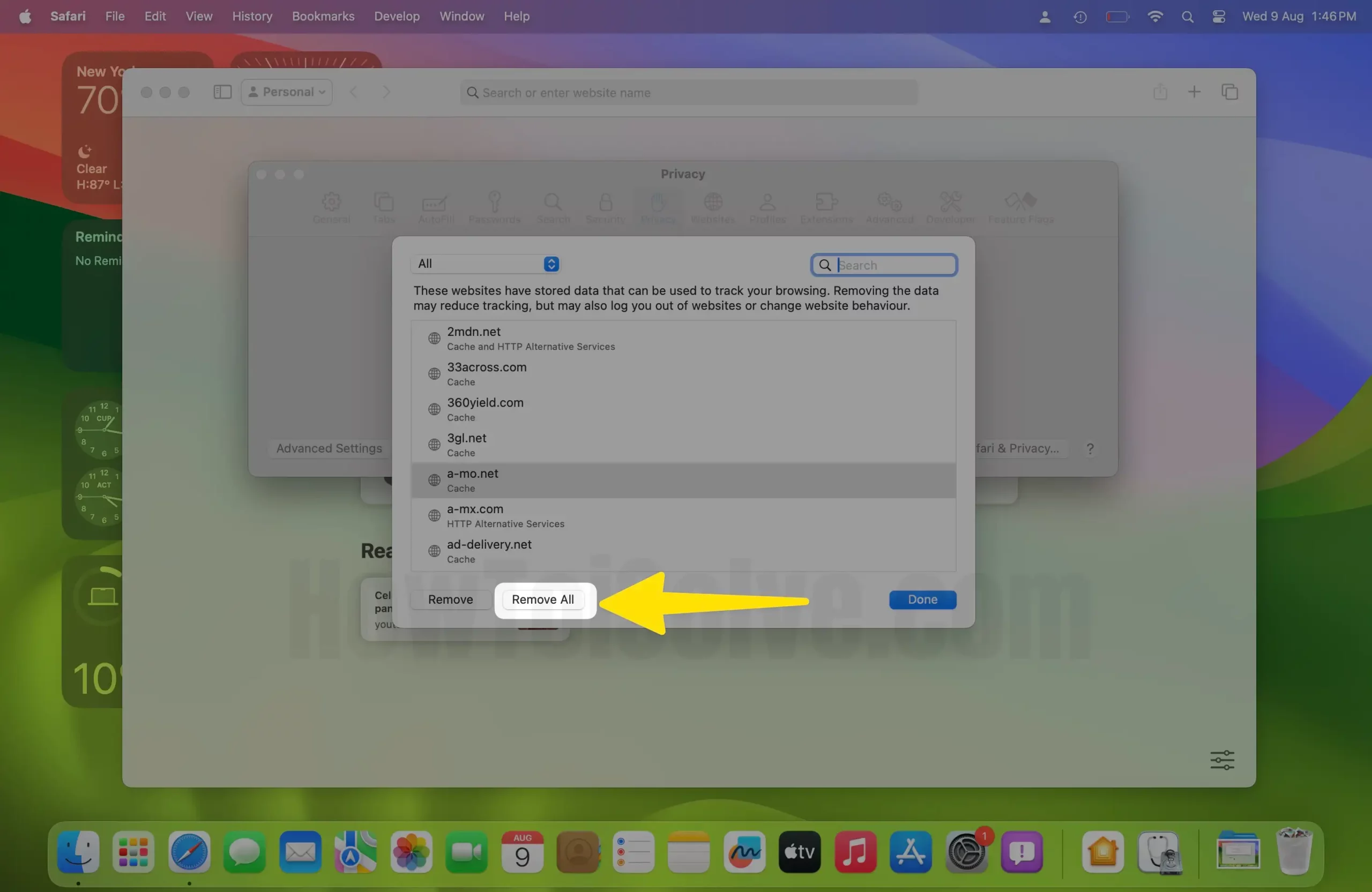
Step 5: Finally, click on the Remove Now button to confirm this operation.
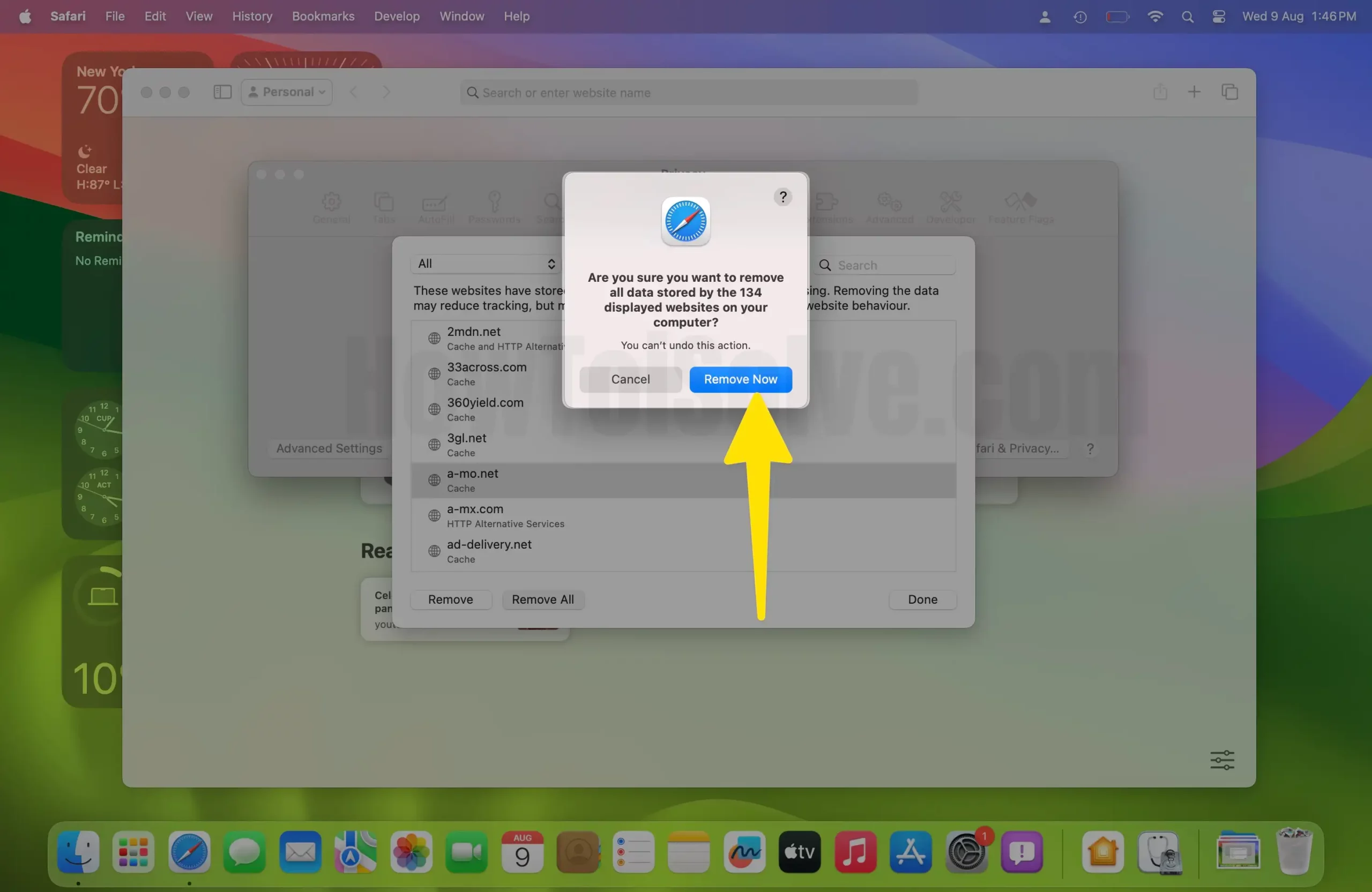
Reset, Uninstall, or Disable Safari Extensions and Plug-ins
Both extensions and plug-ins add to the functionality of the Safari browser. However, some may malfunction and affect the functioning of the browser. When that happens, you need to troubleshoot and uninstall or disable problematic extensions or plug-ins.
To fully reset Safari, you need to get rid of the extensions and plug-ins that have been added to the browser as well.
To Remove Extensions on Safari:
Launch the Safari browser then click on Safari —positioned on the top-left corner. Next, select the Settings/Preferences option then open the Extensions tab. This should display a list of extensions that are currently installed on Safari. Click on any one of them then click the Extensions button.
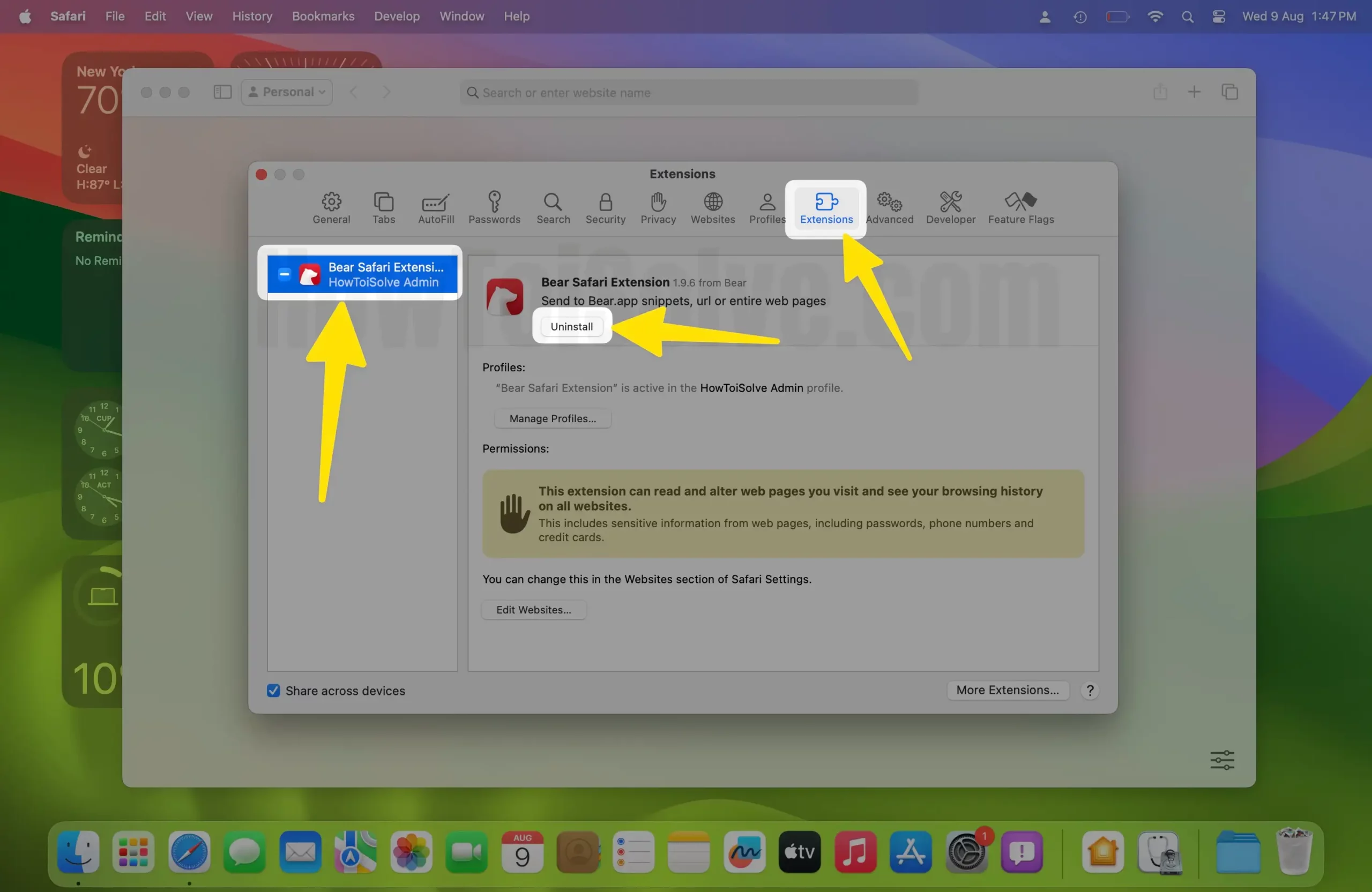
Follow on-screen prompts to uninstall the extension. Repeat this for each extension until you have uninstalled all the extensions on this list.
To Remove Safari Plug-Ins:
Launch the Safari browser, then click on Safari —on the top-left corner of the homepage. Select Preferences and then navigate to the Security tab. Click on the Allow Plug-ins option to untick it.
How Do You Reset Safari on Mac Terminal?
If you fancy running some commands in Terminal, you can use this method to reset the Safari browser to default settings on Mac. If you’d rather use Terminal to reset Safari on Mac, here is how you should go about it:
Step 1: Launch a new Terminal window on your Mac as follows: Applications > Utilities > Terminal Step 2: To avoid losing data, you could save your bookmarks before resting Safari. In this regard, you need to run the following command on the new Terminal window:
Step 3: You can now begin resetting Safari by force quitting the browser. To do this, run the following command on the Terminal:
Step 4: With this method, you also need to clear Safari cookies, Cache, and folders to reset the browser. You can do that by running the following commands, one after the other, on your Mac Terminal:
Press the Return key to run the command.
Hit the Return key to run it.
Press Return to run this command.
Step 5: Now that you’ve cleared your Safari cookies, cache, preferences, you can proceed to clear the more stubborn files. To accomplish this, run the following commands on your Mac Terminal, one after the other.
Note : Remember to press the Return key after entering each of the commands into Terminal and them wait for it to execute before running the next command.
These are the commands you should run to reset the Safari browser using Terminal:
Copy and paste each of the lines onto Terminal separately and run it before entering the next line.
Step 6: At this point, the browser should have been successfully reset to factory settings. Now you can restore the bookmarks you saved in step #2 above. However, this step is optional. If you’d like to restore your saved bookmarks, run the filling commands:
Press Return to execute this command. Once your Mac is done running this command, copy and paste the following onto your Mac Terminal:
You have successfully reset Safari on Mac Terminal. Launch the Safari app and start afresh as though it was newly installed onto your Mac.
Final Verdict
With time, the temporary files created by Safari may accumulate on your Mac or become corrupted. This may cause the browser to malfunction. For instance, it may cause the browser to become slow and sluggish, or even crash.
To fix such issues, you need to reset the browser to its default settings. Since Safari no longer has a built-in Reset button, you just have to do it manually. In this regard, you need to clear Safari preferences, extensions, plug-ins, cookies, and cache files separately.
This may sound painstakingly slow, but this guide includes the commands you can use to reset Safari on Mac Terminal.
Leave a Comment Cancel reply
- How to Use Copilot In Word
- Traveling? Get These Gadgets!
How to Reset Safari to Default Settings
Restoring default settings is a multistep process
:max_bytes(150000):strip_icc():format(webp)/ScottOrgera-f7aca23cc84a4ea9a3f9e2ebd93bd690.jpg)
What to Know
- First, remove the browser history: Select Safari in the menu bar > Clear History , then select All History > Clear History .
- Remove cookies: Safari > Preferences . Select the Privacy tab > Manage Website Data > Remove All .
- Clear cache: Safari > Preferences . Advanced > Select Show Develop menu in menu bar . Exit. Develop > Empty Caches .
This article explains how to reset Safari to default settings by removing Safari's history and cookies, clearing the cache, and disabling extensions. Instructions apply to Safari versions 11 through 14 and iOS.
Remove Browser History
The first step when resetting Safari is to remove your browser history. When you clear your browsing history, Safari removes data such as recent searches, the frequently visited site list, web page icons, the history of web pages you've visited, and more.
From Safari's menu bar, select Safari > Clear History
In the drop-down menu, select All History .
Select Clear History to complete the process.
To clear a particular website instead, navigate to History > Show History , select the website you want to clear, and press Delete .
Remove Cookies
When you remove all cookies from Safari, you'll lose personal registration data such as your name and address, shopping cart contents, preferred web page layouts, and more.
From Safari's menu bar, select Safari > Preferences .
Select the Privacy tab.
Select Manage Website Data .
Select Remove All .
Select Remove Now .
Select Done .
Clear Safari's Cache
When you clear Safari's cache, you're removing stored website data.
Select the Advanced tab.
Place a check next to Show Develop menu in menu bar , and then exit out of Preferences.
From Safari's menu bar, select Develop > Empty Caches .
Disable or Uninstall Extensions
Safari extensions are like mini-apps that add functionality to the browser. If you're trying to reset Safari, you'll want to disable or uninstall any extensions.
Select the Extensions tab.
Select an extension, and then deselect the checkbox next to the extension to disable it.
Many extensions have several sub-extensions, so you'll need to uncheck all of them.
After you've disabled an extension, you can uninstall it. Select Uninstall .
You'll see a message that the extension is part of an application, and that you'll need to remove the application. Select Show in Finder .
Finder will open with the app selected. Right-click on the application and select Move to Trash .
Enter your password and select OK . You've deleted the extension.
Clear Website Data on Safari for iOS
To clear Safari's settings on an iPhone or iPad:
Open the iOS device's Settings app.
Scroll down and select Safari .
Under Privacy & Security , select Clear History and Website Data .
Select Clear History and Data to confirm.
Get the Latest Tech News Delivered Every Day
- How to Clear Private Data, Caches, and Cookies on Mac
- How to Delete and Clear Cookies on an iPhone
- Speed Up Safari With These Tuneup Tips
- How to Manage Browsing History on Safari for iPad
- How to Manage Cookies in the Safari Browser
- How to Clear Your Search Bar History
- How to Clear Internet Cache in Every Major Browser
- How to Clear Cookies for a Specific Site
- How to Delete Cookies in Every Major Browser
- How to Clear Cache on Samsung S10
- 3 Ways to Clear Cache on an iPad
- How to Clear Your iPhone Cache
- Add More Features by Turning on Safari's Develop Menu
- How to Clear Search History on iPhone
- How to Manage Your Browsing History in Safari
- Managing History and Other Private Data in Safari for macOS
How to reset all of your Safari browser's settings on a Mac, including clearing your cache and removing plugins
- Knowing how to reset your Safari browser on a Mac can help speed up the browser and fix issues.
- However, resetting Safari will also cause you to lose browser-saved data, including login credentials and browser extensions.
- Here's what you need to know to reset the Safari browser on your Mac computer.
- Visit Business Insider's homepage for more stories .
Resetting your Safari browser on a Mac computer can help speed it up and get rid of any issues you may have encountered.
But before you start, be aware that it will delete your installed extensions, as well as any auto-fill data, including saved usernames and passwords.
So you may want to take note of those before getting started, so that you can get your browser back to the way that you're accustomed to using it.
Once that's done, here's how to reset the Safari browser on your Mac .
Check out the products mentioned in this article:
Macbook pro (from $1,299 at apple), how to reset safari on a mac.
Resetting your Safari browser consists of several steps (like clearing your cache and history), rather than a simple button. So it will take a while to accomplish. Here's what you need to do:
Clear your Safari history
Keep in mind that the process is different for Safari on an iPhone or iPad , in case you want to do a reset across all of your devices.
1. Launch Safari
2. In the top toolbar, select "Safari" and then "Clear History."
3. Select "All History" in the dropdown and then click "Clear History."
Clear your Safari cache
1. With Safari open, go up to the top toolbar.
2. Select "Safari" and then "Preferences."
3. Toggle over to the "Advanced" tab and tick the box next to "Show Develop menu in menu bar" — you should see "Develop" appear in the top toolbar.
4. Click "Develop" and then select "Empty Caches."
Get rid of your Safari extensions
1. Go back into your Safari Preferences (located in that top toolbar)
2. Toggle over to the "Extensions" tab
3. Go through all of your extensions and select "Uninstall"
Turn off plugins within Safari
1. With the Safari Preferences window still open, toggle over to the "Websites" tab
2. Untick the box next to each plugin (listed at the bottom of the left sidebar)
Delete those plugins
These are stored in two separate areas, so your work will feel a bit redundant, but it's necessary to get the job done.
1. Tap your Finder to open it (it's the half-toned face icon in your bottom toolbar).
2. Under the "Go" menu of the top toolbar, select "Go to folder."
3. In the pop-up search menu, type "~/Library" and hit "Go."
4. Locate and go through the "Internet Plug-ins" folder and delete your plug-ins (you may want to keep your Safari Preferences open to "websites" so you can view your installed plugins) by dragging them over to the Trash.
5. Go up to the "Go" tab in your top toolbar and select "Go to folder".
6. Enter "/Library" in the search bar and hit "Go."
7. Locate and open the "Internet Plug-ins" folder again.
8. Select and delete or drag your undesired plugins into the Trash.
Related coverage from How To Do Everything: Tech :
How to set your browser's homepage on a mac, with instructions for safari, chrome, and firefox, how to block pop-ups on a mac computer's safari browser, and avoid fraudulent websites, how to add websites to your favorites list on a mac's safari browser, making them easily accessible at any moment, how to save and delete webpages on the reading list in your mac computer's safari browser.
Watch: Apple just launched a $6,000 Mac Pro, available this fall
- Main content
- Editorial Process
- Why Trust Us?
- Affiliate Linking Policy
- Privacy Policy
- Terms of Service
Weekly Must-Reads View All
7 things to do if you spilled water on your macbook.
Quick steps to save your MacBook from water damage
How to Boot Your Mac Into Verbose Mode: 4 Best Ways
Boot your Mac into Verbose Mode with this step-by-step guide
How to Fix Your Mac Shutting Down Randomly: 16 Fixes to Try
Troubleshoot random shutdowns on Mac with effective solutions
How Much Space Does macOS Take On Your Mac?
Understand macOS size and analyze your Mac's storage usage
Popular Topics
- What to Do With Your Old MacBook? 13 Useful Ways to Reuse an Old Mac
- What Is the MacBook Flexgate Issue and How to Fix It
- What Is the MacBook Flexgate Issue
- Uninstall Java
- Safely Transfer Files from Mac to Mac
- Safari Bookmarks Disappeared on Mac: 10 Best Ways to Restore Them
- Repairing disk permissions
- Old MacBook
Trending Now View All

- Mac Tips and Tricks
How to Factory Reset Your Browser on Mac: Safari, Chrome, and Firefox
Hashir Ibrahim
Reviewed by
Last updated: October 18, 2023
Expert verified
To factory reset your browser on Mac, you must follow specific steps for each browser. Resetting Safari involves clearing history, cache, and cookies, removing extensions, deleting bookmarks, and removing plug-ins. Advanced users can also use Terminal commands to reset Safari.
To reset Chrome, click the three dots > Settings > Reset settings > Restore settings to their original defaults > Reset Settings . To reset Firefox, click the three horizontal lines > Help > More troubleshooting information > Refresh Firefox twice.
- Resetting browsers boosts performance, fixes errors, removes malware, declutters data, and restores default settings.
- The process clears cache, cookies, history, disables extensions, reverts settings, and may delete bookmarks and passwords.
- It’s crucial to back up essential data before proceeding, as a reset will erase personalized settings and saved information.
Ever felt your browser acting like it’s dragging a ton of bricks? Clogged with data, or just misbehaving? Just as you occasionally need a fresh start, so does your browser.
Whether you’re a Safari surfer, a Chrome cruiser, or a Firefox flyer, this concise guide is your quick fix to factory reset your browser on Mac. Let’s get started and get your Mac browsers to perform better.
Why Factory Reset Your Browser on Mac?
Browsers are prone to accumulating clutter over time. And just as our physical spaces benefit from periodic decluttering, our digital spaces need occasional refreshing, too.
Here’s why you might consider a factory reset for your browser on Mac:
- 🚀 Enhanced Performance : Over time, excessive cache, cookies, and browsing history can slow down your browser. A reset can make your browsing experience smoother and faster.
- 🔧 Fix Glitches : Encountered unexpected crashes, rendering issues, or unresponsive pages? Resetting can resolve such unexplained errors.
- 🛡️ Security : Malware and unwanted extensions can compromise your browser. Starting fresh eliminates potential threats.
- 🕵️ Simplified Troubleshooting : Not sure if an extension is causing an issue? Resetting provides a clean slate, making it easier to pinpoint problems.
- 📚 Data Overload : Overloaded bookmarks, saved passwords, and filled auto-forms can be overwhelming. Begin anew for a more organized digital experience.
- 🌱 Fresh Experience : If you’ve tinkered too much with settings and are missing the default browsing experience, a reset can take you back to the browser’s original state.
Remember, while a factory reset offers numerous advantages, backing up vital data is essential, as the process will erase your personalized settings and saved information.
What Happens When You Reset Your Browser on Mac?
Resetting your browser is like giving it a digital detox. But what exactly happens under the hood when you hit that reset button? Let’s dive into the nitty-gritty:
- 🌪️ Cache Clearing : All the cached images, files, and site data that browsers store for faster loading get wiped out. This means websites might take slightly longer to load the first time post-reset.
- 🍪 Cookie Cleanup : All cookies are deleted. You’ll need to re-login to sites where you were previously auto-logged in.
- 📜 History Erasure : Your browsing history, including the websites you visited and search queries, is removed.
- 🔌 Extension Exits : Extensions, plugins, and add-ons get disabled or removed, depending on the browser. You might need to reinstall or re-enable them.
- ⚙️ Reset Settings : Any custom settings (homepage, tab behavior, download location, etc.) revert to their default state.
- 🔐 Bookmarks & Saved Passwords : Depending on the browser and reset options chosen, these might be retained or deleted. It’s always wise to back up this data.
- ⬇️ Download List Deletion : The list of downloaded files within the browser gets cleared. (The actual downloaded files on your Mac remain unaffected.)
- 👾 Personalized Themes & Appearance : If you’ve customized the look of your browser, it will return to the default appearance.
How to Factory Reset Your Browser on Mac
In this section, I’ll walk you through the steps to factory reset different browsers on your Mac. The specifics vary slightly between browsers like Safari, Chrome, and Firefox. So, I’ve shared the steps for these three popular browsers. Let’s dive in!
a. Factory Reset Safari on Mac
Previously, factory resetting Safari on Mac was a one-click affair. However, the Reset Safari button is no longer available to Mac users. Due to this, it now takes several steps to factory reset Safari on Mac.
Here are the steps to follow:
Step 1: Clear Safari History
Here’s how to delete Safari history on your Mac :
- Launch Safari by clicking its icon in the Dock.
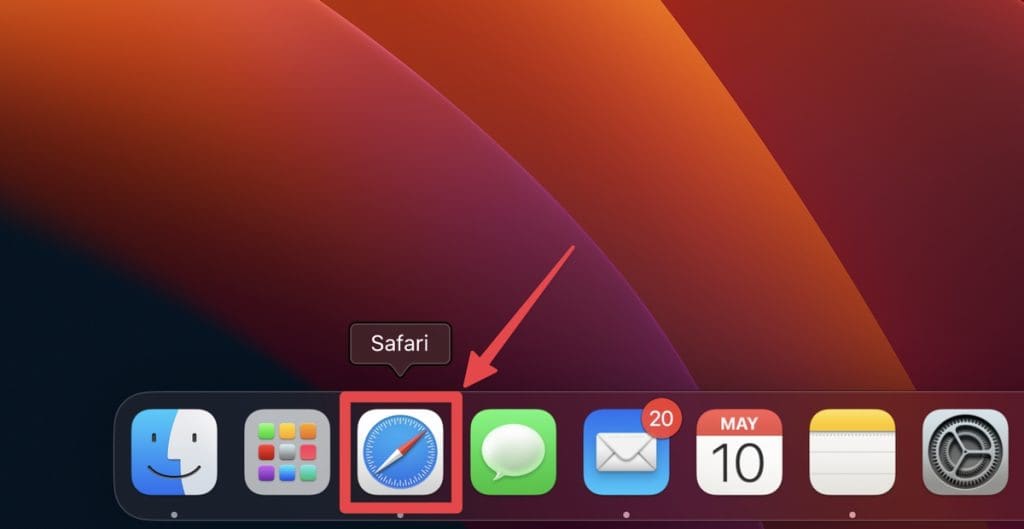
- Once Safari is open, click History in the menu bar, and select Clear History… . It’s at the bottom of the menu, and you may have to scroll down.

- A dialog box will appear, asking you to specify the time range for which you want to delete history. You can select last hour, today, today, and yesterday, or all history.
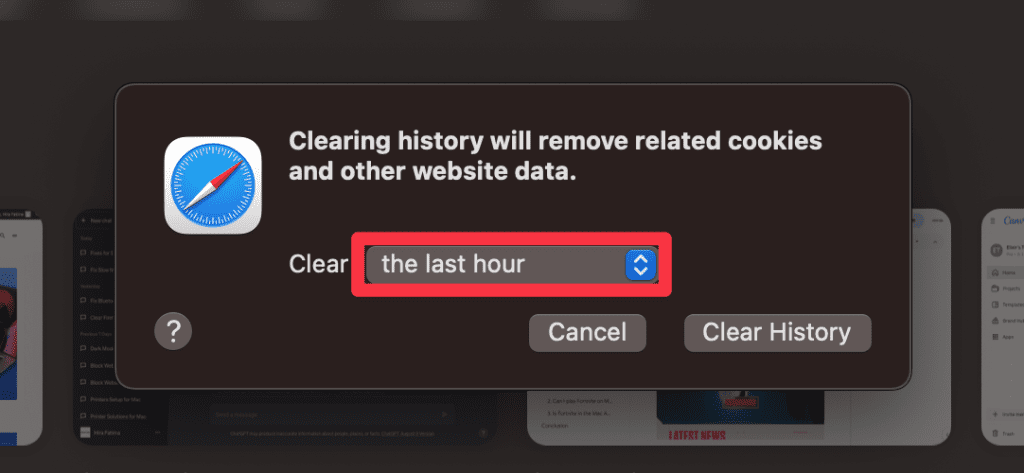
- Select all history from the menu and click the Clear History button. This will also clear your browser cache and cookies for the specified time range.
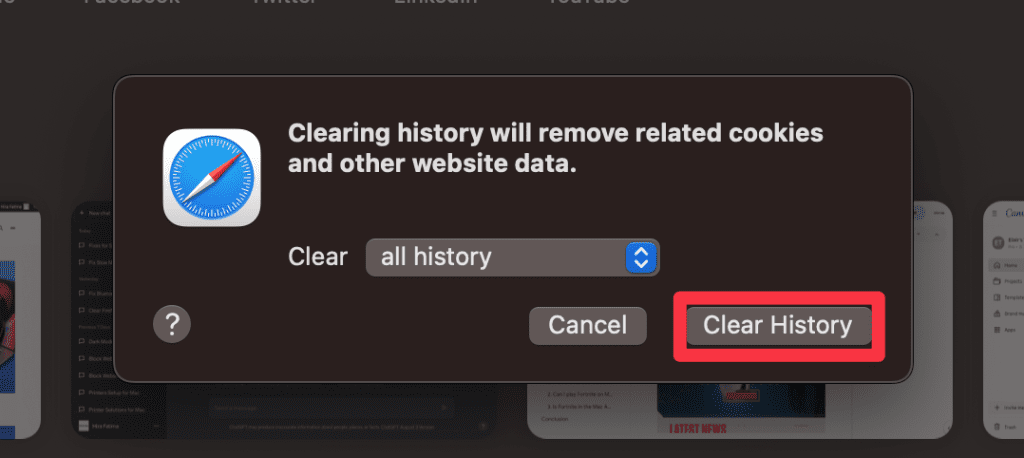
- For the changes to take effect, close all Safari windows and relaunch the application.
Step 2: Clear Safari Cache and Cookies
Here’s how to clear cookies on Mac in Safari:
- Click Safari in the menu bar and select Settings .
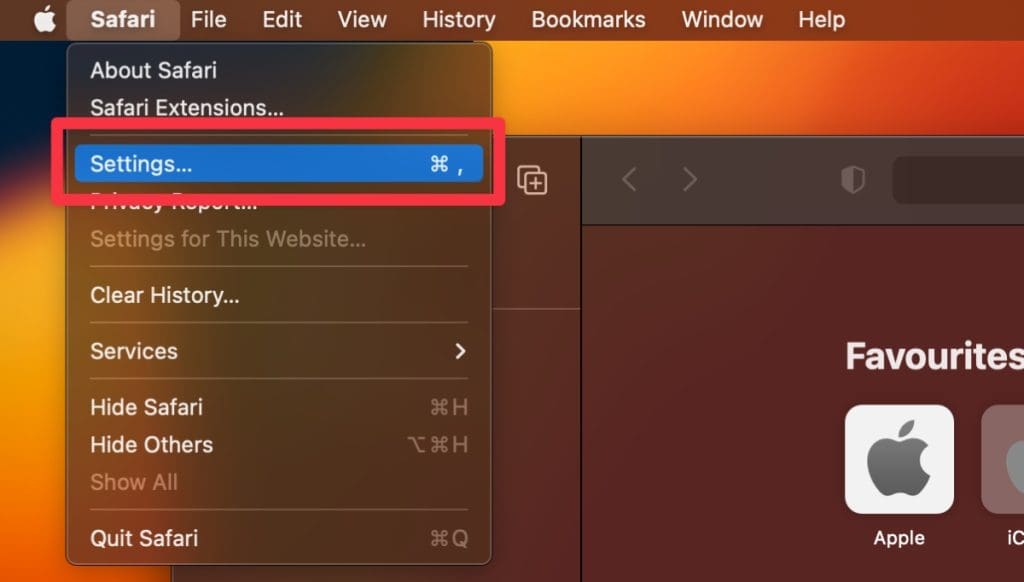
- Select the Privacy tab and click the Manage Website Data button.
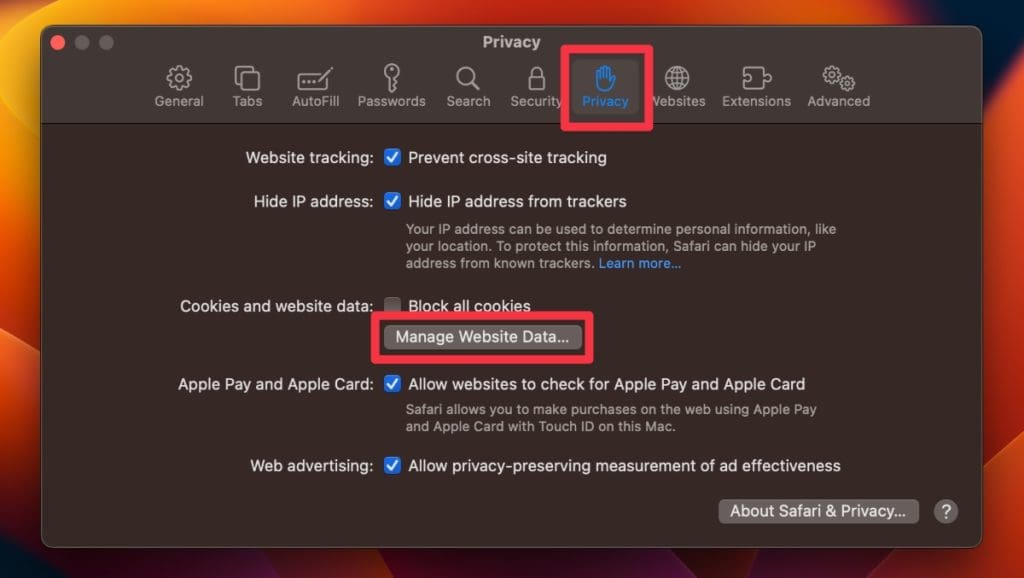
- Click Remove All to clear all website cookies completely.
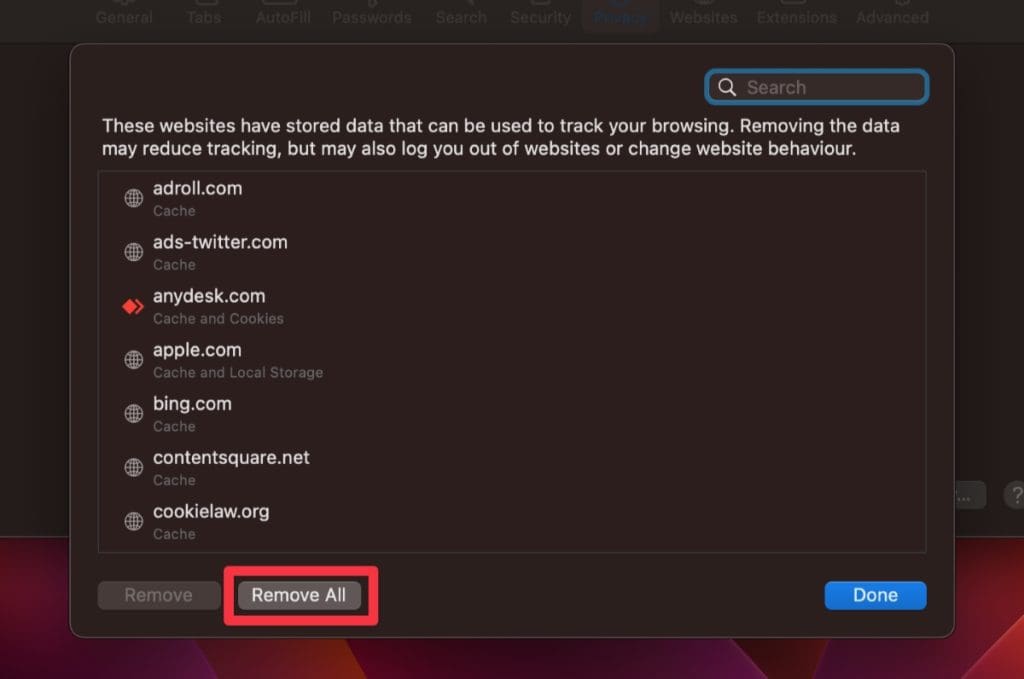
- You’ll be prompted to confirm if you choose to remove all cookies. Click Remove Now to proceed.
- Alternatively, you can select individual websites and tap Remove .
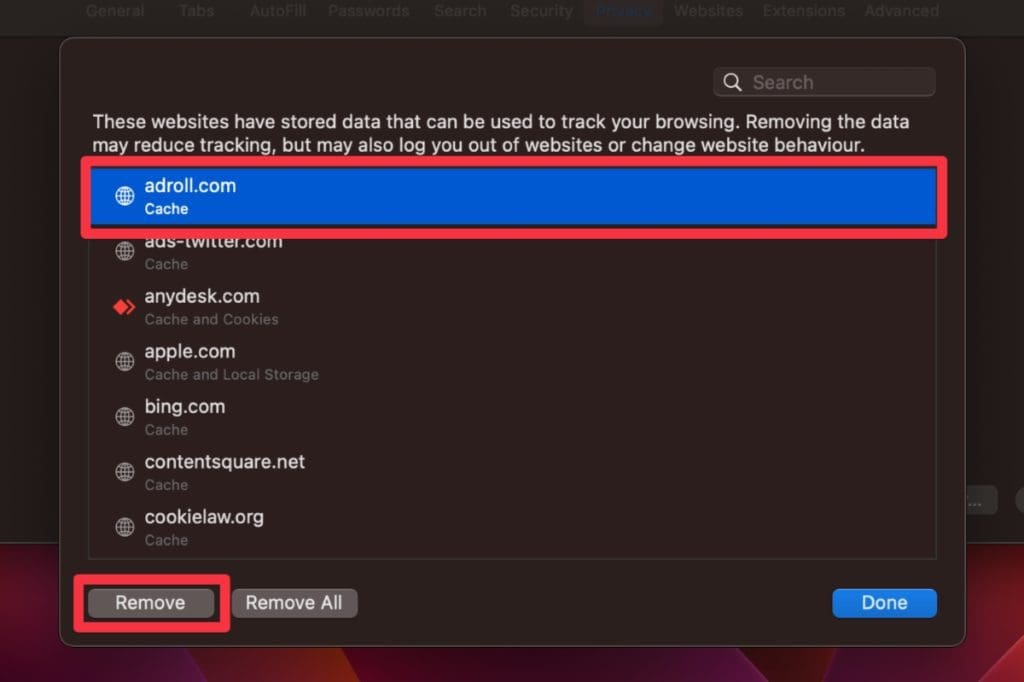
- Click Done when you have deleted all cache files.
To clear Safari cache on your Mac , follow these steps:
- Go to Safari in the menu bar and select Settings .
- Select the Advanced tab and check the box next to the Show Develop menu in menu bar if it is unchecked.
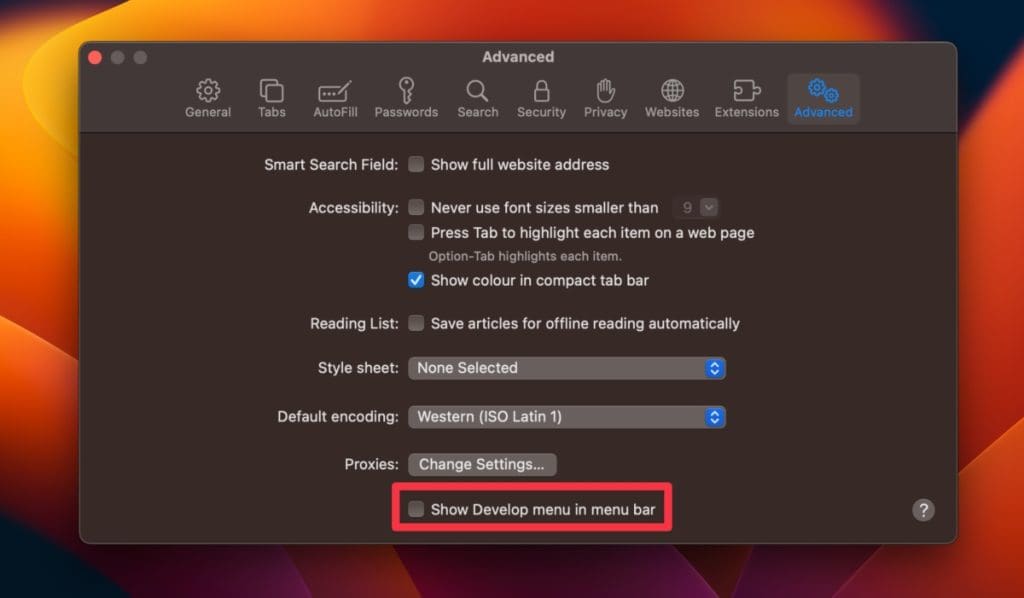
- Once the Develop menu is enabled, you’ll find it in the menu bar at the top of your screen.
- Click Develop in the menu bar and select Empty Caches from the dropdown menu.
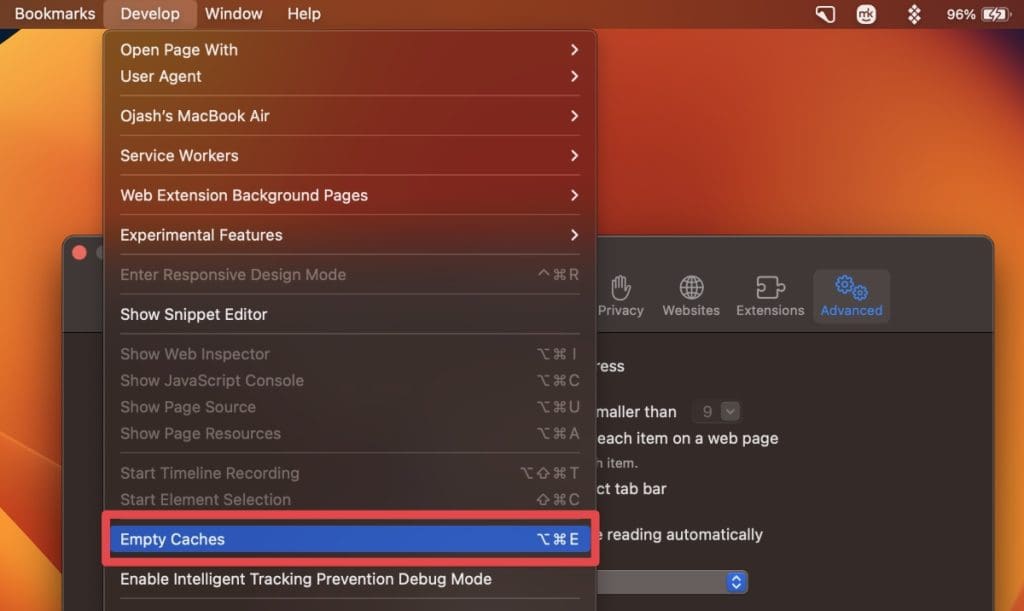
This will clear all your Safari cache on Mac.
Step 3: Remove Safari Extensions
Here’s how to remove browser extensions on Mac from Safari:
- Open Safari on your Mac.

- Click the Extensions tab to view all the installed extensions.
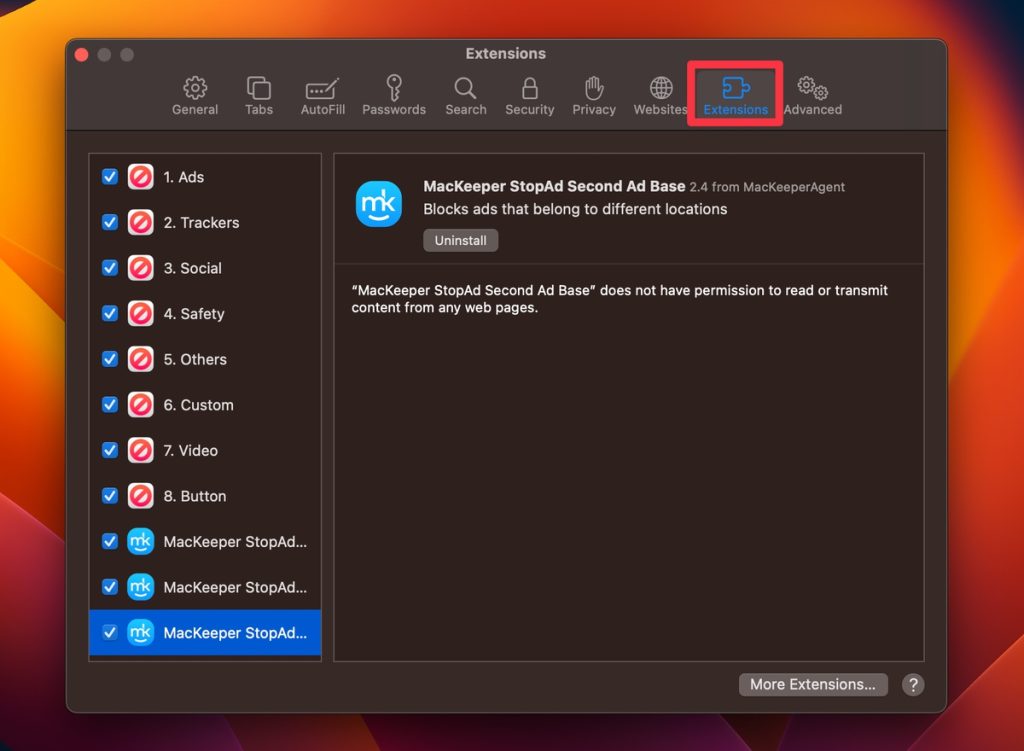
- Find the extension you want to remove and click it.
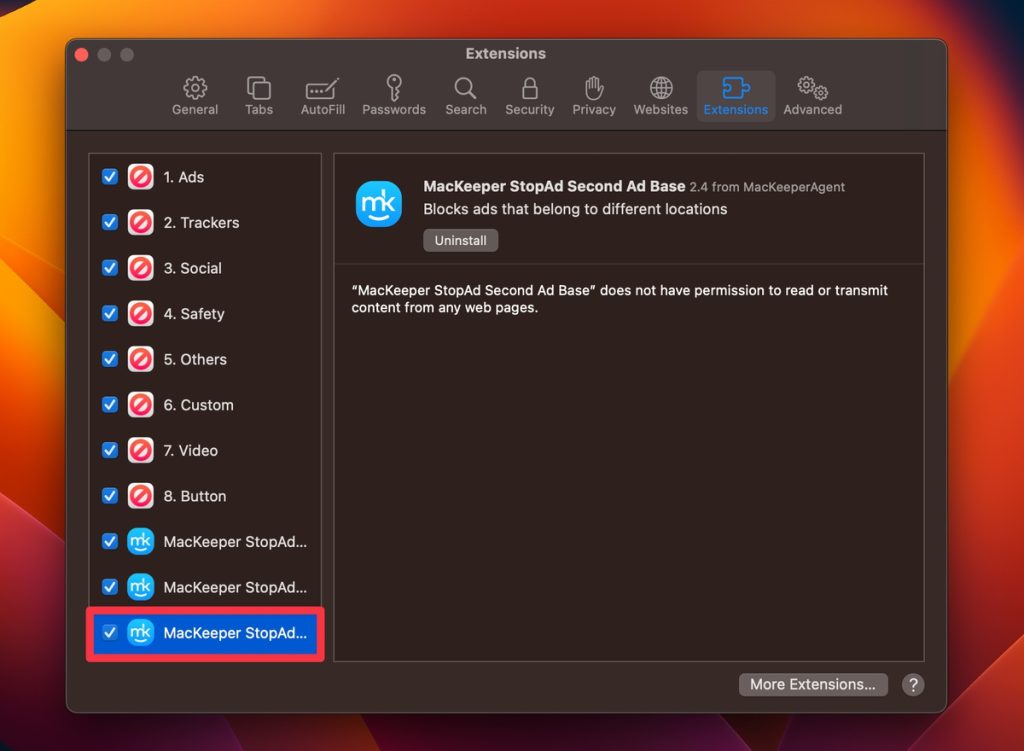
- Click the Uninstall button to confirm that you want to remove the extension.
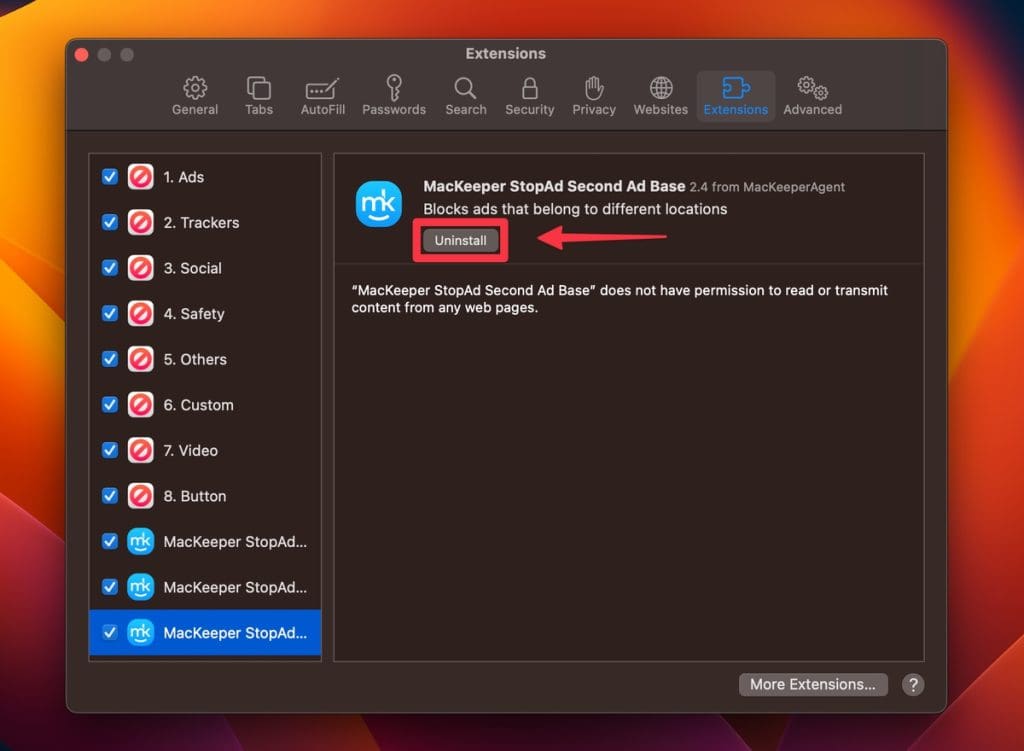
Step 4: Delete Safari Bookmarks
There are two methods to delete bookmarks on Mac in Safari:
- Launch Safari from your Dock.
- Click Bookmarks in the menu bar and select Edit Bookmarks .
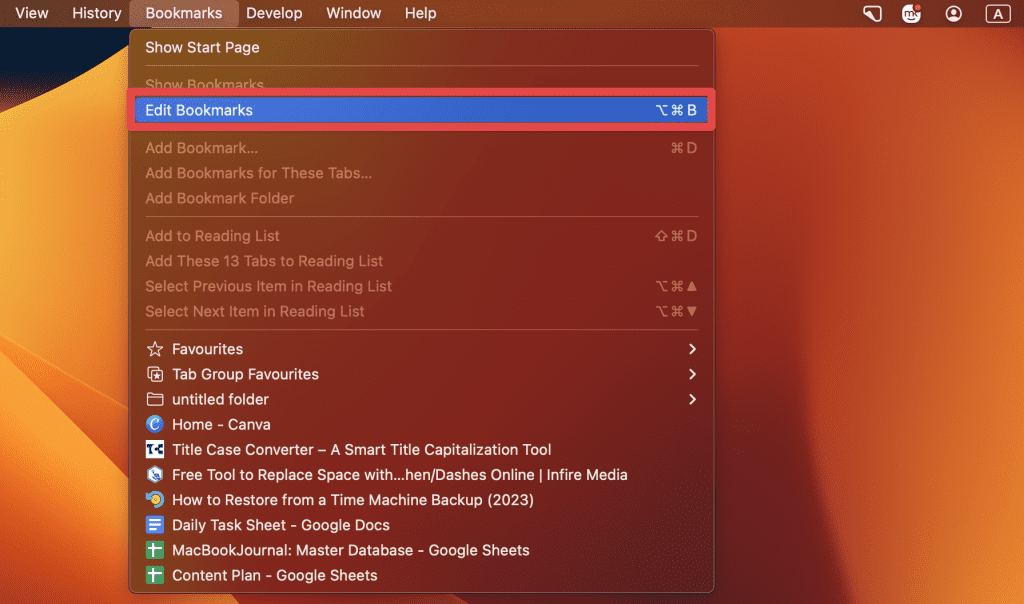
- A new window will appear, showing all your bookmarks. Right-click a bookmark you want to remove and select Delete .
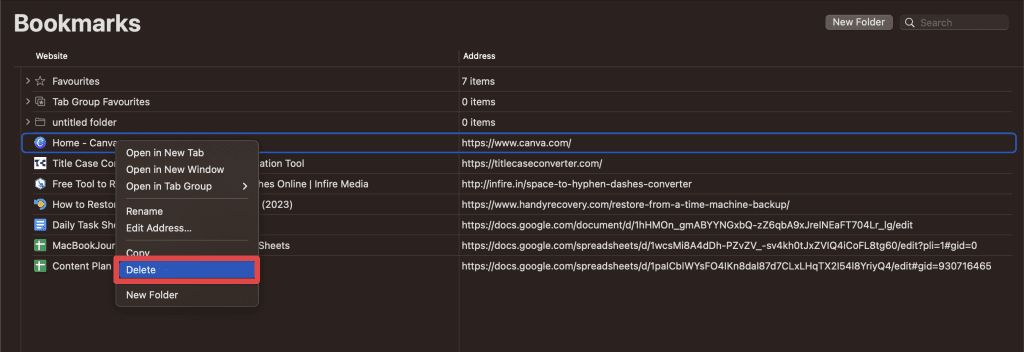
To remove several bookmarks at once on your Mac, hold down the Command ⌘ key while clicking the bookmarks you wish to delete, and press the Delete key.
- Click the sidebar icon in the Safari toolbar (next to the green expand icon).
- A sidebar will appear on the left of your Safari window. At the bottom of the sidebar, select Bookmarks .
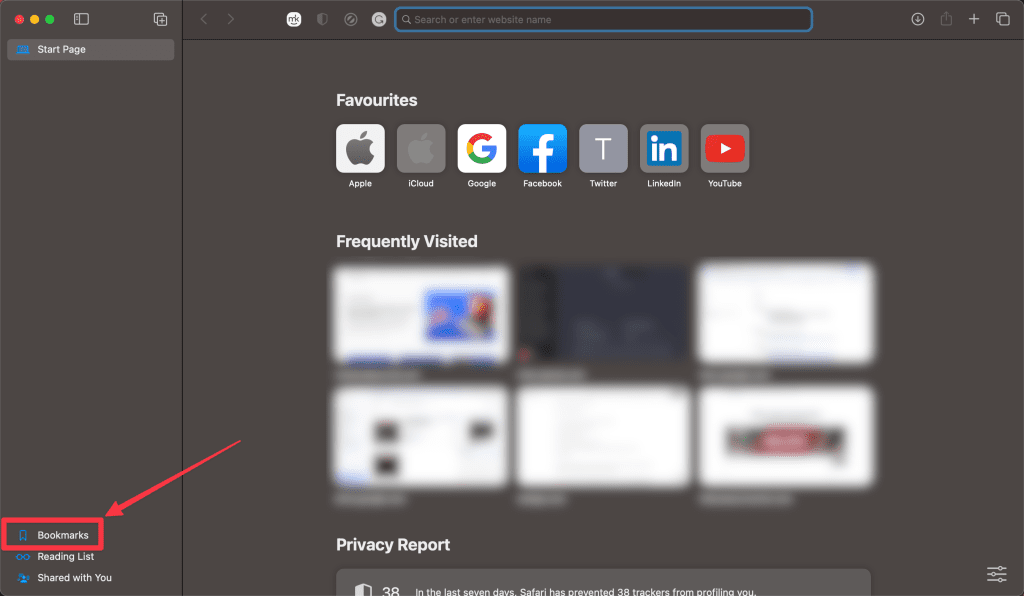
- Right-click the bookmarks you aim to remove and click Delete .
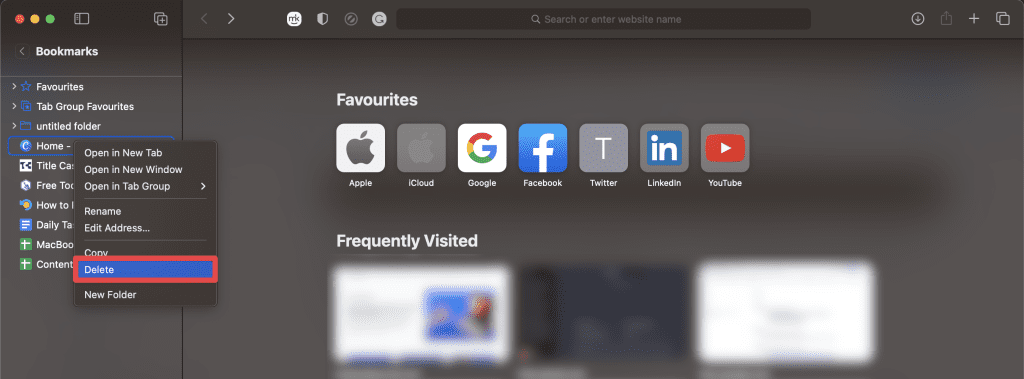
Step 5: Delete Safari Plug-ins
Follow these steps to delete Safari plug-ins on Mac:
- Ensure Safari is completely closed.
- Click the Finder icon in your Dock.
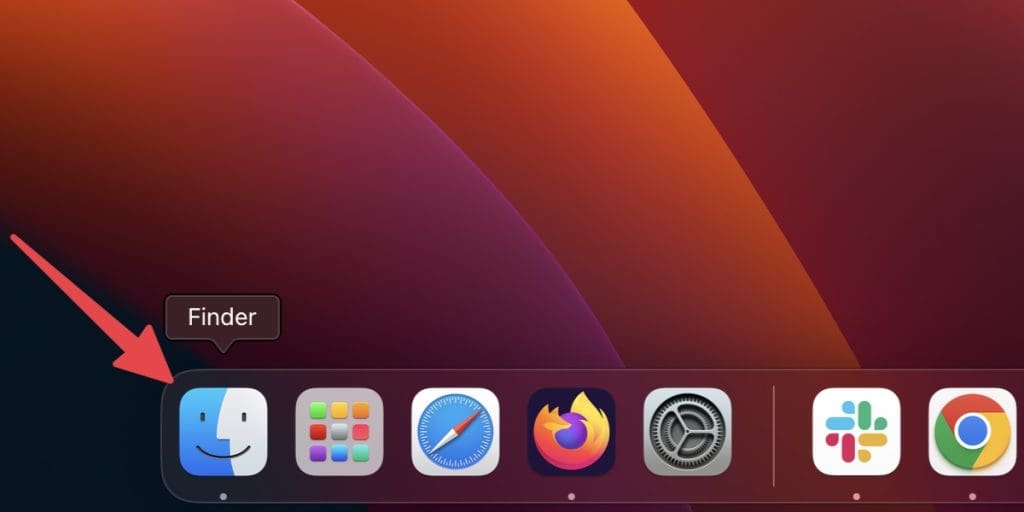
- In the Finder menu, click Go and select Go to Folder .
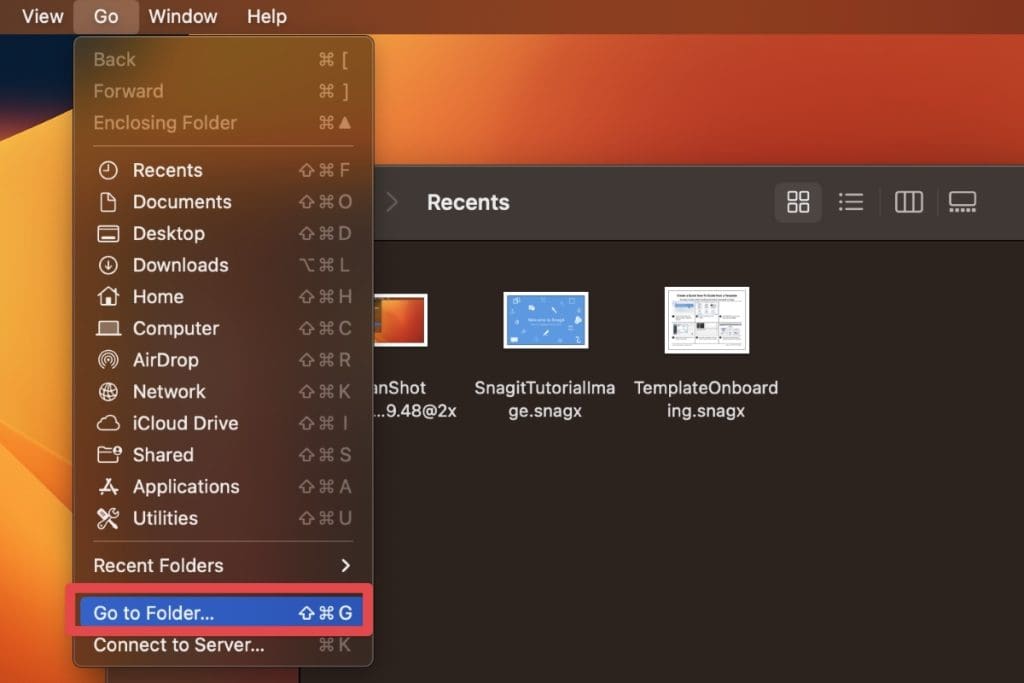
- Type the following path:

- In this folder, you’ll find various plug-ins. Drag the ones you wish to remove to the Bin.
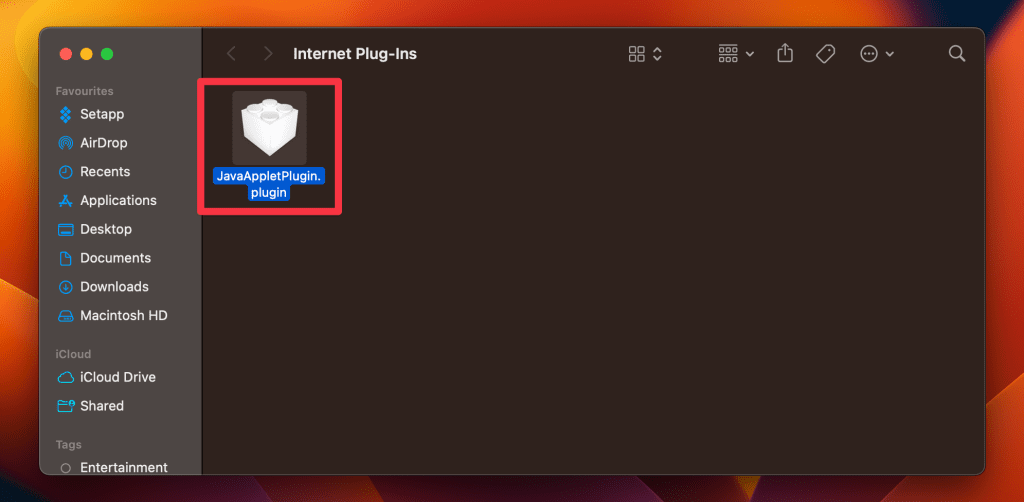
It’s important to be cautious and only delete the ones you recognize and are sure about to avoid affecting Safari’s functionality.
- As a final step, right-click the Bin icon and select Empty Bin to remove those plug-ins permanently.

For Advanced Users: Reset Safari Using Terminal
If you’re comfortable with Terminal, you can employ various commands to factory reset Safari on your Mac. Follow these instructions carefully to reset Safari using Terminal :
- Ensure that Safari is not running.
- Navigate to Finder > Applications > Utilities and launch Terminal . You can also search for it in Spotlight search.

- Enter each of the commands below individually. After pasting each command, press Enter and follow any on-screen prompts:
🚨 Caution: The rm -Rf command can be dangerous and permanently deletes files. If you’re unsure or uncomfortable with Terminal, manually navigate to the Library and move the files mentioned in the paths above to the Bin. This manual method is considered safer.
b. Factory Reset Chrome on Mac
Over time, Chrome can slow down with all the added extensions and stored data. If you’re facing issues or just want a fresh browser experience, a factory reset is a good idea.
Below, I’ll walk you through the steps to reset Chrome on your Mac:
- In Chrome, click the three vertical dots and go to Settings .
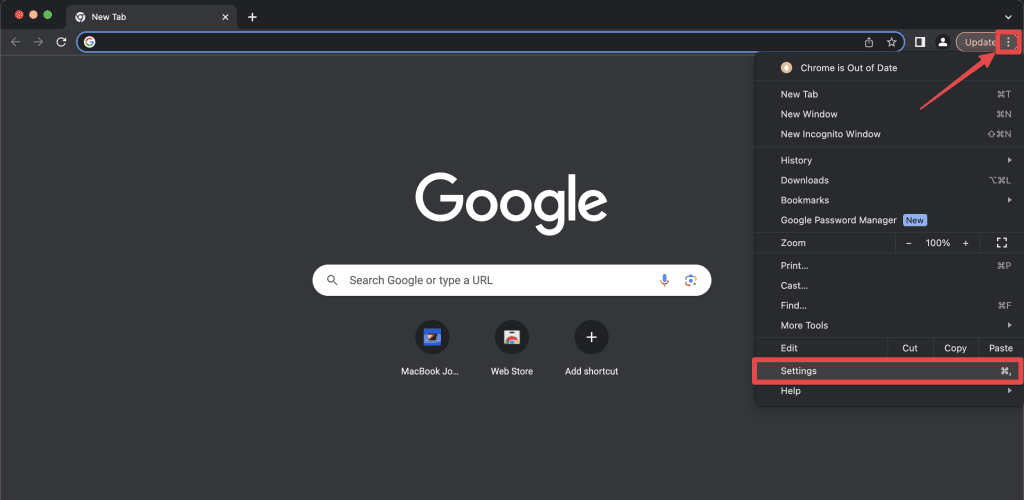
- In the next window, click Reset settings in the left sidebar and select Restore settings to their original defaults .
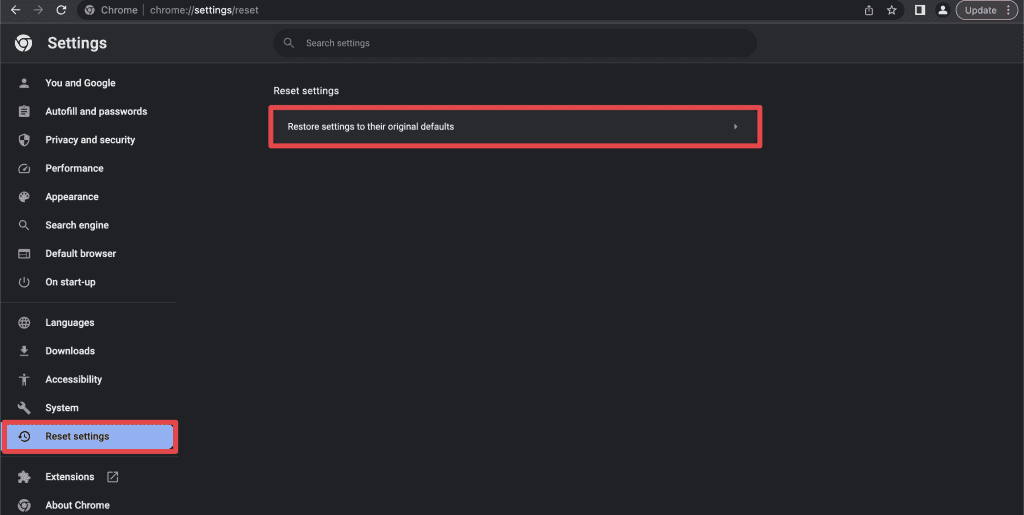
- A pop-up window will appear. Click Reset settings, and it will restore your Chrome settings to default.
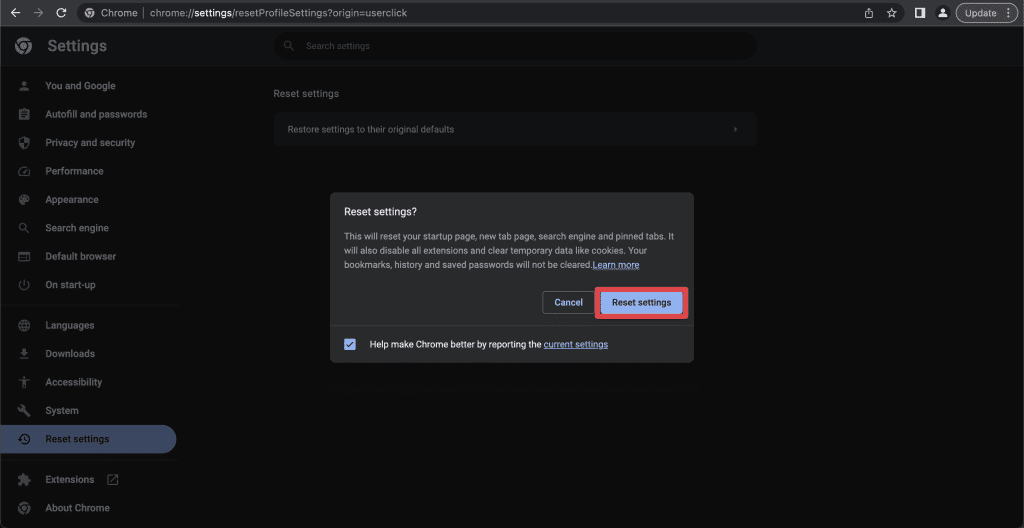
c. Factory Reset Firefox on Mac
Just like any browser, Firefox can accumulate clutter over time. If you’re noticing lags or unwanted extensions or simply want to start from scratch, resetting is the way to go. In this section, I’ll guide you through the process of resetting Firefox to its original state on your Mac:
- In Firefox, click the three horizontal lines and go to Help .
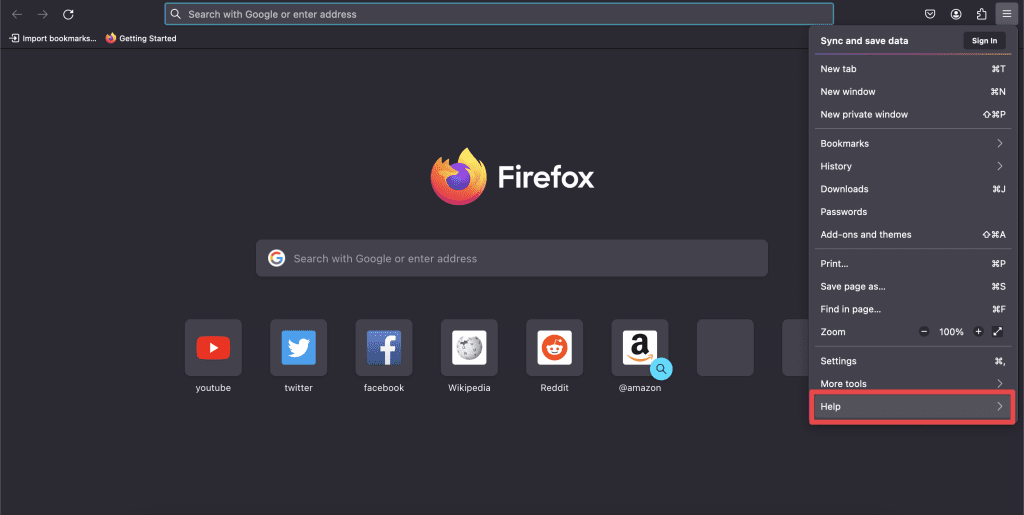
- Select More troubleshooting information .
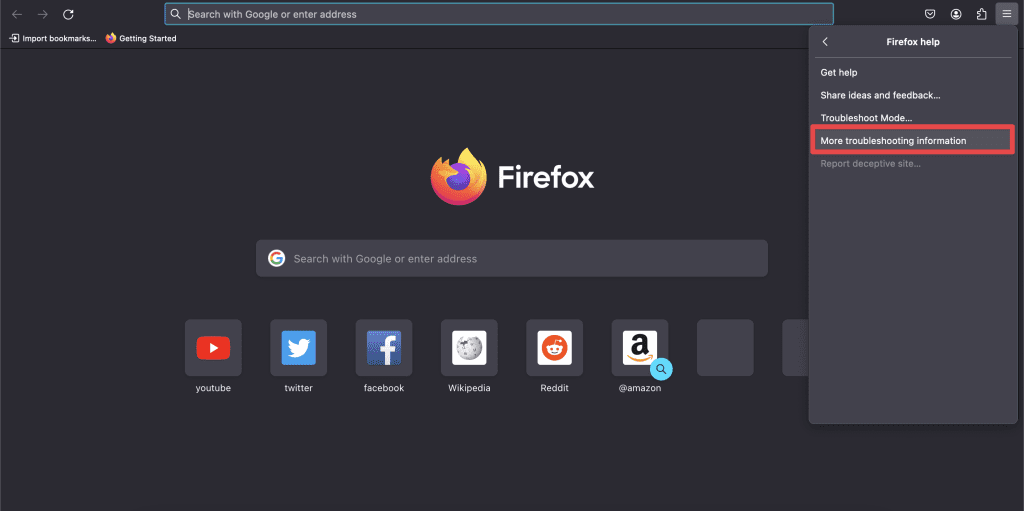
- On the right, you’ll see Refresh Firefox . Click it.

- When you click Refresh Firefox, a pop-up will appear at the top of the page. Click Refresh Firefox again.

Start With a Clean Slate on Your Mac Browser
Resetting your browser can achieve a smoother, faster, and more secure online experience. Whether using Safari, Chrome, or Firefox on your Mac, knowing how to return to a fresh state ensures you’re always in control of your digital environment.
Here are some more tips to enhance your browsing experience on Mac:
- Pop-ups and ads are a nuisance. Learn how to block ads on Mac .
- Some websites may be malicious and slow down your browser. You can block websites on Safari on Mac , along with other browsers.
- If your Safari bookmarks disappeared on Mac , you can restore them from Bookmarks Library, backup, or iCloud.
Frequently Asked Questions
Will i lose all my bookmarks and saved passwords when i reset my browser.
When you reset your browser, you will lose bookmarks and saved passwords if you don’t create a backup before resetting. Many browsers offer options to retain this data during a reset. Always back up important information before proceeding to ensure no essential data is lost.
How often should I reset my browser?
You should only reset your browser when encountering persistent issues or noticeable slowdowns. For optimal performance, consider doing it once a year or when problems arise, ensuring you always back up essential data first.
Is clearing cache and cookies different from a full browser reset?
Yes, clearing cache and cookies is different from a full browser reset. Clearing cache and cookies only removes temporary data, improving loading times. On the other hand, a full browser reset reverts settings, disables extensions, and provides a more thorough refresh, giving the browser a clean slate to operate from.
Can I undo a browser reset on Mac?
No, you cannot undo a browser reset on Mac. Once you’ve reset your browser, the action is typically irreversible. Before resetting, always back up essential data like bookmarks and passwords to avoid potential loss.
Will resetting my browser log me out of all my accounts?
Yes, resetting your browser typically clears sessions and cookies, which means you’ll likely be logged out of most, if not all, of your online accounts. You’ll need to re-enter your credentials the next time you visit those sites.
I'm Hashir, a tech journalist with a decade of experience. My work has been featured in some of the top tech publications like MakeUseOf and MakeTechEasier. I have a bachelor's degree in IT, a master's in cybersecurity, and extensive knowledge of Apple hardware, specifically MacBooks. As the senior writer at MacBook Journal, I write in depth guides that help you solve any issues you have with your mac and unbiased reviews that help you make the right buying decisions.
Hi there! I'm Ojash, a tech journalist with over a decade of experience in the industry. I've had the privilege of contributing to some of the world's largest tech publications, making my mark as a respected Mac expert. My passion lies in exploring, using, and writing about MacBooks, and I enjoy sharing my expertise to help others make informed decisions and get the most out of their MacBook experience. Join me as we delve into the fascinating world of MacBooks together!
You May Also Like

11 Things to Do Before You Give Away, Trade-In, or Sell Your Mac
Prepare your Mac for a new owner with some essential steps

We Surveyed 11,200 Parents About How They Use Parental Controls and Here’s What We Found
Insights from 11,200 parents on how they use parental controls

How to Download macOS on Your Mac: 7 Quick Steps
Written by Hashir Ibrahim Reviewed by Ojash Last updated: September 6, 2023

How to Edit a PDF on Your Mac: 4 Best Methods
Written by Hashir Ibrahim Reviewed by Ojash Last updated: October 10, 2023
How to reset Safari settings on Mac
Safari is the top web browser for Macs, but over time it may slow down due to excess temp and junk files. Resetting the browser can improve performance and eliminate this issue. To reset Safari on a Mac , follow the steps to remove temporary components and plugins. Keep in mind that resetting will erase auto-fill data like saved passwords.
Safari offers a familiar browsing experience on Macs. The latest updates enhance Safari, yet it still has room for improvement. Over time, it may slow down and become unresponsive. Unlike Chrome and Firefox, Safari lacks a reset button.
In this article, we’ll show you how to reset Safari by clearing caches, history, extensions, and plugins. Note that if you have Safari synced with iCloud using the same Apple ID, changes will reflect on other Apple devices.
Quick Navigation:
Part 1: Clear Safari Browser Cache
- Part 2: The easiest way to clear Safari cache using Mac Cleaner
Part 3: Delete Safari Browsing History
Part 4: how to delete safari extensions, part 5: remove safari plugins, part 6: delete cookies in safari.
- Part 7: Change Homepage in Safari
Part 8: Reset Safari with Terminal
Safari stores media files from web pages as cache in a temp folder in the Library folder for faster retrieval. However, this accumulates disk space over time. Clearing the cache regularly can save gigabytes of space on your Mac.
Clear Safari cache through Preferences
- Open Safari browser
- Go to Safari Preferences
- Switch to Advanced and enable the “Show Develop menu in the menu bar”
- Access the Develop menu
- Use Develop -> Empty Caches or Command+Option+E shortcut
- The cache-clearing process will be completed in seconds. Once you enable the developer menu, it will be easily accessible for future use.
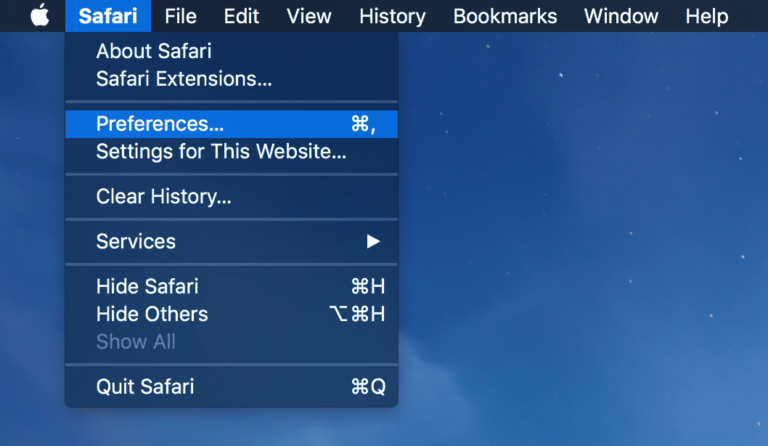

Manually Clear Safari Cache
For Macs running macOS 10.14 or earlier, you can manually clear the Safari cache in the Library folder.
- Go to ~/Library -> Caches
- Select and delete unnecessary files.
CAUTION: Exercise caution when deleting files from the Library folder as important files may be damaged. If unsure, use the first method or a cache-cleaning app instead.
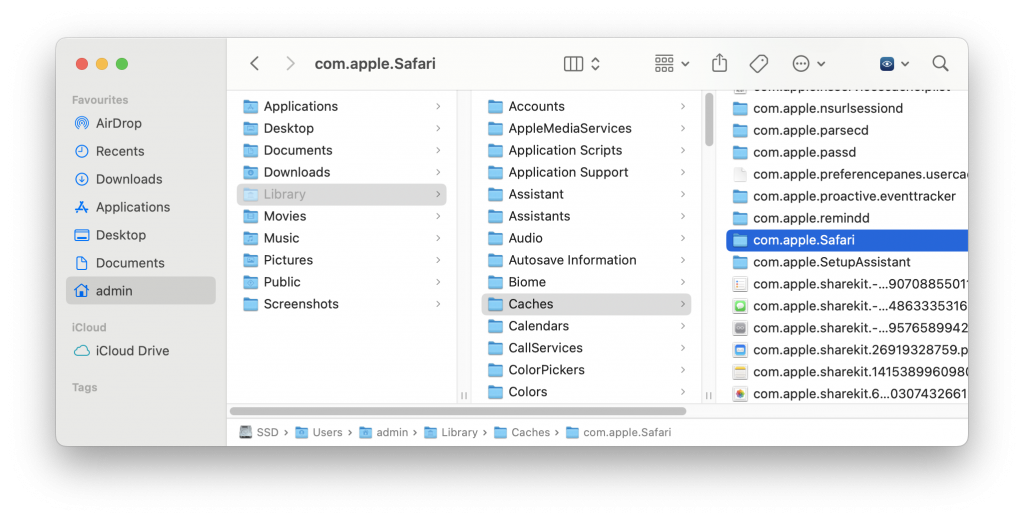
Part 2: The easiest way to clear Safari cache using Mac Cleaner
Mac Cleaner is a storage optimization software that helps you free up space on your computer by deleting unnecessary files. It also helps uninstalls apps and removes extensions for better storage optimization. Not only does it clean files, but it can also perform various operations to speed up your Mac.
Using Mac Cleaner is a great solution if your computer is slowing down, as it optimizes both storage and performance. Clear Safari Browsing History: Safari, like other browsers, stores a record of visited pages. To maintain privacy, follow these steps to clear Safari history :
Try it Free
Step #1: Download, Install, and Open Mac Cleaner
To get Mac Cleaner, visit its download page using a browser, then click “D ownload Now .” This downloads a DMG file, which you open to run the installer. Follow the on-screen instructions to install the software, which will automatically open after installation. Move on to the next step.
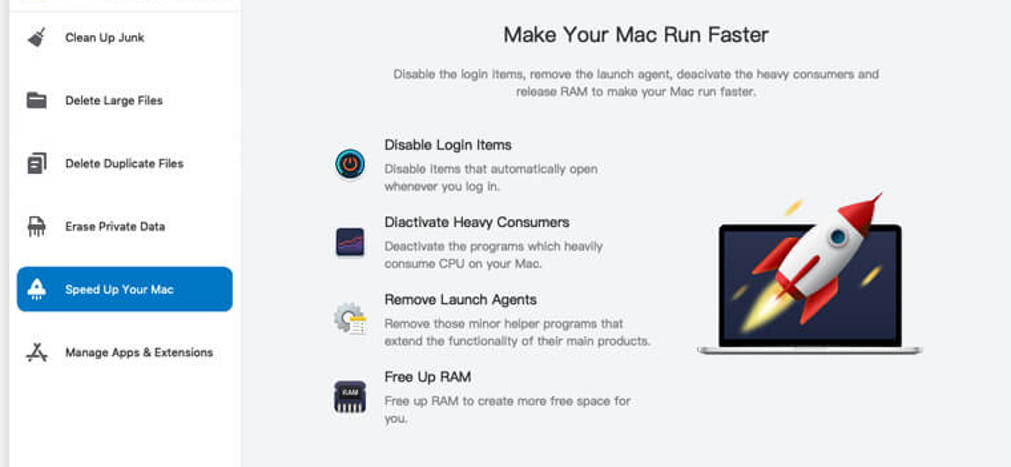
Step #2: Pick a Module
Mac Cleaner has 6 modules, each with specific functions. Choose a module that best suits your needs. The modules are:
- Clean Up Junk – deletes unnecessary files
- Delete Large Files – deletes files larger than 50MB
- Delete Duplicate Files – removes duplicate files
- Erase Private Data – removes private data such as browsing history
- Speed Up Your Mac – improves performance
- Manage Apps & Extensions – uninstalls apps and removes extensions.
To select a module, simply click on it from the left-hand side of the window. Pick the one that fits your needs.
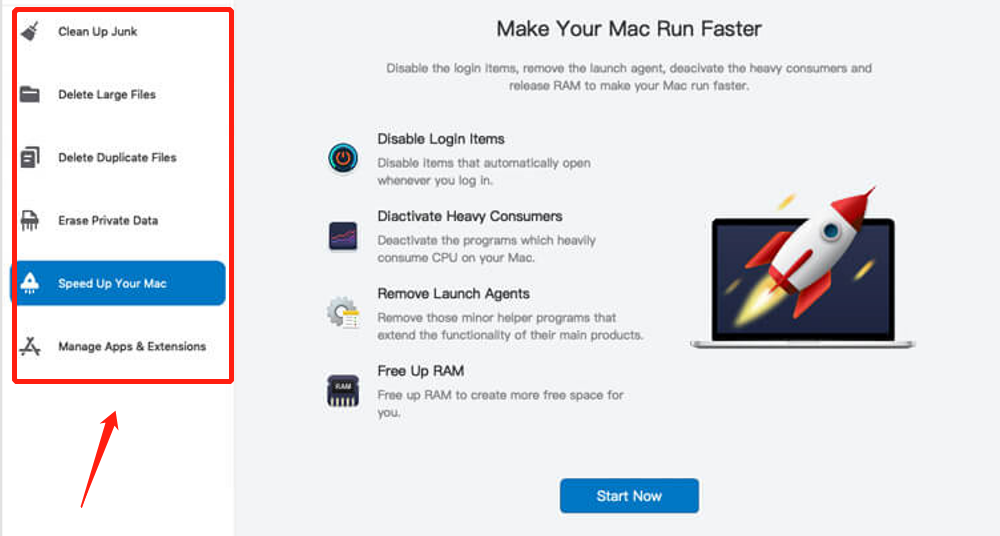
Step #3: Click the Scan/Start Now/View Items Button
To use each Mac Cleaner module:
- Clean Up Junk : Choose between Quick Clean or Deep Clean and hit Scan.
- Delete Large Files : Simply click Scan.
- Delete Duplicate Files : Choose a directory to scan and hit Scan.
- Erase Private Data : Just click Scan.
- Speed Up Your Mac : Click Start Now.
- Manage Apps & Extensions : Pick between Uninstall Applications or Remove Extensions, then click View Items.
After selecting a module, a description of its features will appear in the center of the interface. Read it if desired. To start the process, hit the Scan, Start Now, or View Items buttons, depending on the module. For some modules, like Clean Up Junk, you may need to make an additional selection before scanning.
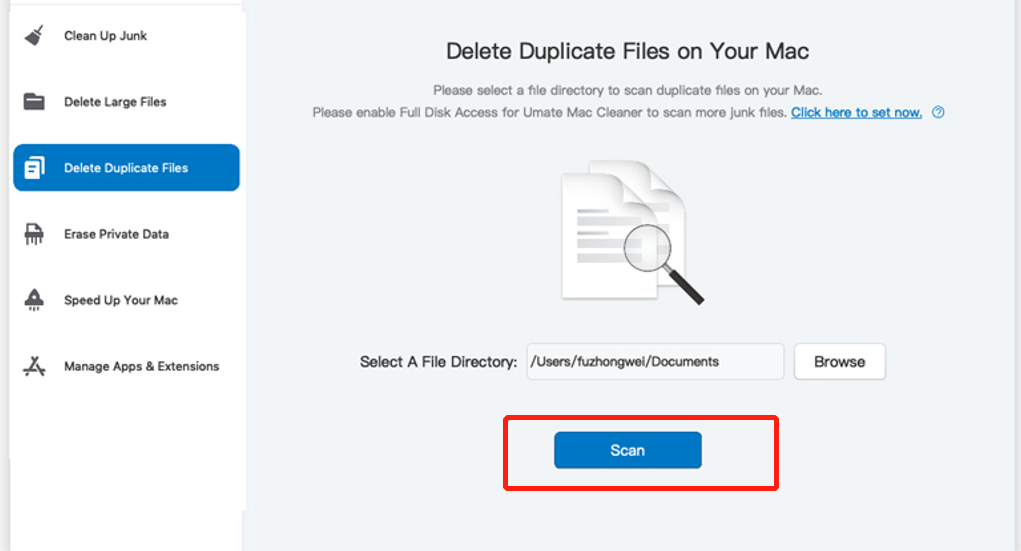
Step #4: Choose an Item/s
On the next screen, the items displayed will vary based on the module selected. Here’s what to expect for each module:
- Clean Up Junk : The left list will display file categories (e.g. System Junk, Downloads, Trash Bin, Unused Disk Images) and selecting one will show junk files on the right side. Select the files to delete.
- Delete Large Files : The list will show folders, disk images, archives, etc.
- Delete Duplicate Files : The list will show images, audio, video files, etc.
- Erase Private Data : The list will show: Online Traces (browsing & Wi-Fi history); Usage Traces (Finder search & usage history); Chat Data (iMessage chat history); Photo Junk (Face & Photo cache); Mail Attachment (email app files & cache);
- Speed Up Your Mac : The list will show: Disable Login Items (items that auto-open on login); Deactivate Heavy Consumers (programs consuming too much CPU); Remove Launch Agents (unnecessary programs & processes); Free Up RAM (eliminates RAM-hungry processes);
- Manage Apps & Extensions : The list will show either extensions or installed apps.
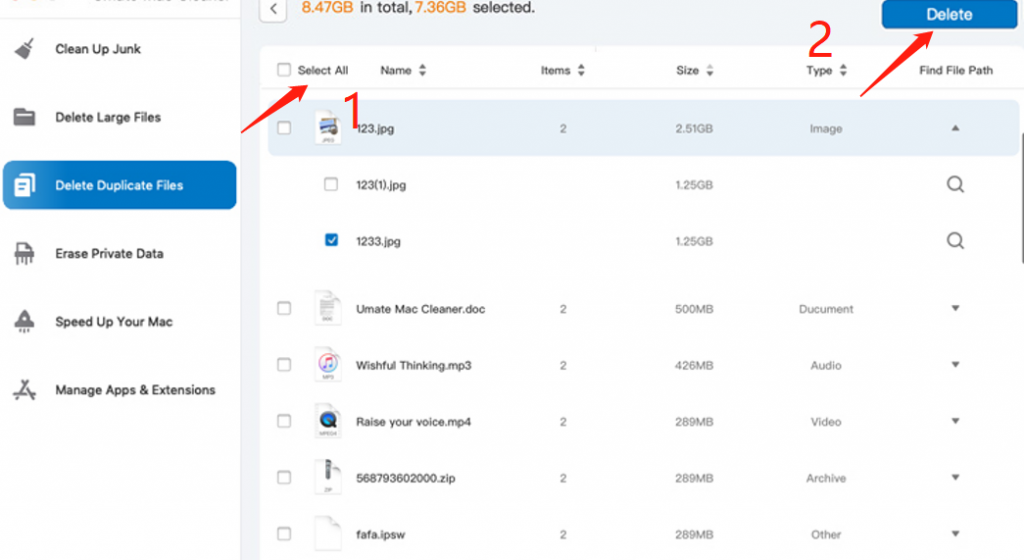
Step #5: Click the Blue Button
After you’ve chosen the items, click the blue button on the top right corner of the software. The button’s label will depend on the module. Regardless, it will complete the process. The software will then perform the action automatically. Mac Cleaner is useful as all its modules can help optimize the “Other” category in your Mac storage.
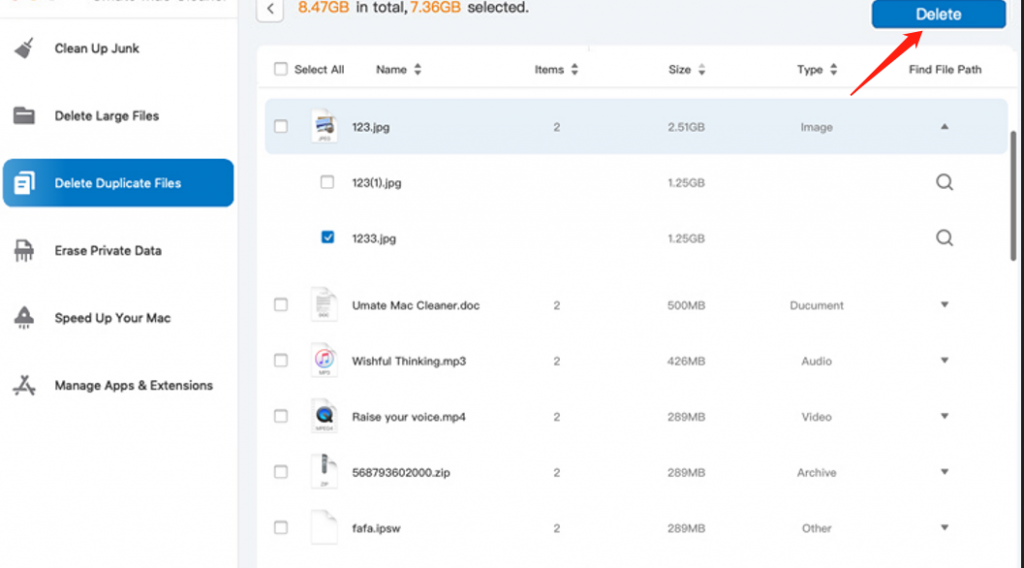
To protect privacy, use these steps to clear Safari’s record of visited pages:
- Launch Safari browser
- Choose the “ History -> Clear History ” command
- Select a time frame to clear
- Hit the “ Clear History ” button
- Safari’s browsing history is now erased from your Mac.
Clear Safari Browsing History Easily removes all cookies and browsing data by using Safari’s built-in history cleaner. Here’s how: Open Safari, go to Safari in the top menu bar, select Clear History, select All History from the dropdown, and click Clear History.
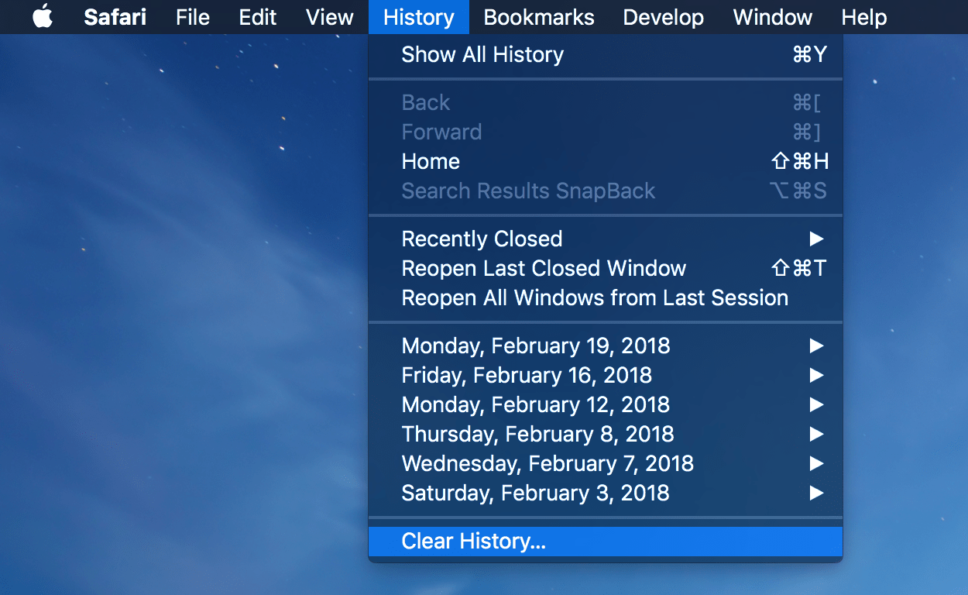
- Launch Safari
- Select the Extensions section
- Choose the extension to remove and click Uninstall
- Repeat for all unneeded extensions
- Confirm the removal by clicking Show in Finder
- Locate the extension in the Applications folder and drag it to Bin.
Turn Off/Remove Safari Extensions To improve your Safari browsing performance, you should check if any extensions are slowing it down. Some extensions, even if approved by Apple, can still affect your browsing speed.
To disable extensions, go to Safari > Preferences, and click on the Extensions tab. Deselect the checkbox next to the extensions you want to turn off. To completely remove an extension, select it and click the Uninstall button. When resetting Safari, consider installing only necessary and high-quality extensions.
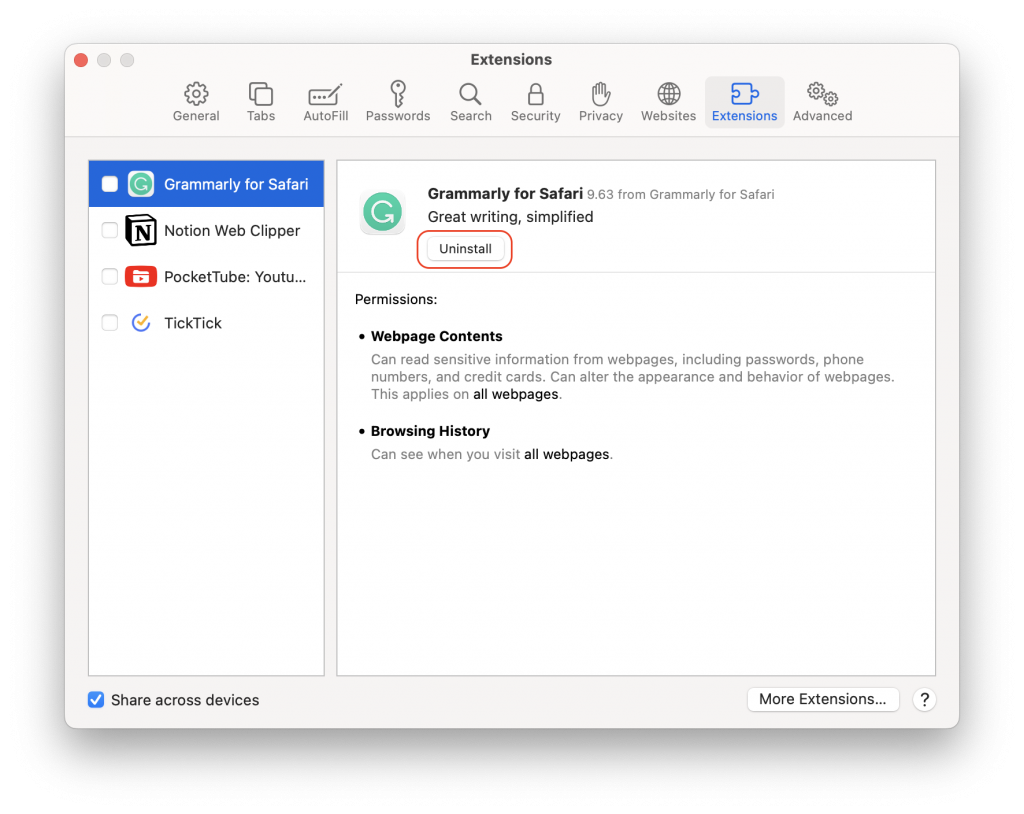
Removing Safari Plugins Plugins can impact Safari’s speed and stability, leading to performance issues and file loading problems. To complete a Safari reset, remove any unneeded plugins.
Steps to remove Safari plugins: Close Safari. Locate ~/Library/Internet Plug-Ins/. Preview installed plugins and identify Safari plugins. Delete unneeded plugins to the Trash.
Turn Off/Delete Safari Plugins and Limit Website Access To optimize Safari’s performance, limit access by plugins and websites. You can control which plugins run and which sites can access your device’s camera, microphone, etc.
- Open Safari and go to Safari > Preferences in the menu bar.
2. Go to the Websites tab and check the sidebar for website access.
3. Disable Auto-Play, Camera, Microphone, Location, and Pop-Ups, unless needed.
Safari stores website cookies, like other browsers, when you visit sites. These cookies store information about your interactions with the site, such as form data, cart contents, etc. To start fresh, it’s recommended to remove them.
To clear all cookies in Safari:
Open Safari and go to Safari > Preference s in the top menu bar. In the Preferences window, go to the Privacy tab and click the Manage Website Data button. This will open a window displaying all Safari cookies. You can select individual cookies to remove using Cmd or click Remove All to erase the entire list.
Part 7: Change Homepage in Safari:
To set your preferred website as the homepage in Safari, follow these steps:
- Open Safari
2. Go to Safari > Preferences from the menu bar
3. In the General tab, type the URL of your desired homepage in the homepage field.
4. Press Enter, then save the changes.
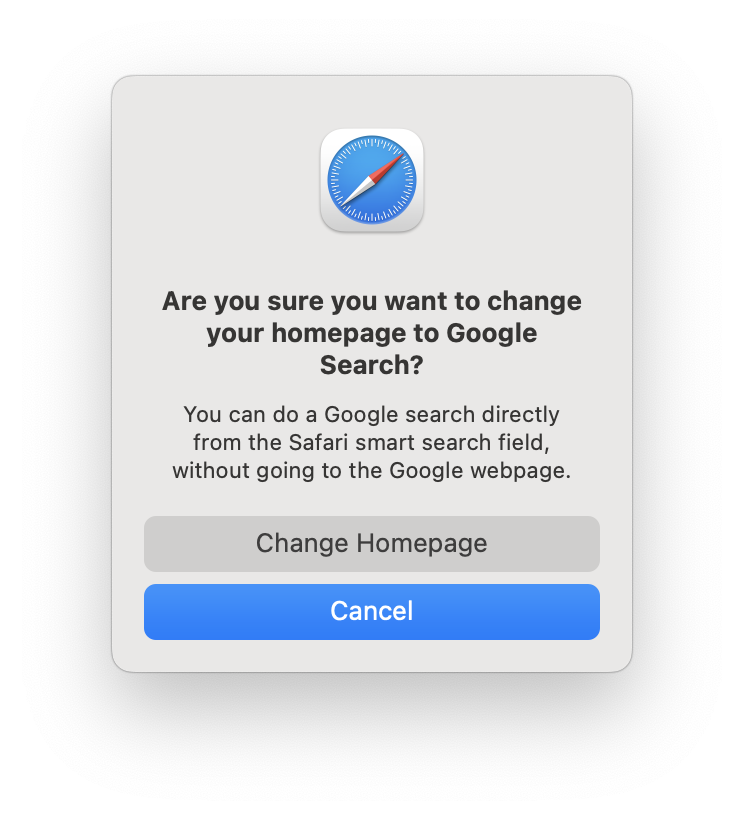
Access the Terminal app (use Cmd + Space in Spotlight to locate it). Close Safari from the Apple menu on the top-left corner by choosing Force Quit, then select Safari. Type in each of the following commands line by line. The terminal will prompt to confirm the deletion of each file, enter ‘y’ to confirm, and hit Enter.
In conclusion
Reset Safari for Optimal Performance You’ve learned how to reset Safari to its default settings for improved speed. You may experience a slight delay on some websites as they regenerate new cookies and cache, but overall, we provided a 4-step guide to manually reset Safari .
Alternatively, you can use MacCleaner Pro for the automatic clearing of browser caches, logs, and cookies. Keep in mind that if iCloud Keychain and Contacts are linked, this data will be synced back to the cloud upon using Safari. Safari should run faster. For a top-notch Safari experience, consider implementing the best Safari modifications.
Latest Articles
- Perfect Microsoft Access Alternative for Mac Users
- How to Convert FLAC to MP3 on Mac and Windows
- Troubleshooting Apple Music Not Working on Your Mac
- How to Pause Watch History YouTube [2023 Full Guide]
- How to Delete Your iCloud Account: A Step-by-Step Guide
- PNG Vs JPG: A Battle of The Popular Image Formats
- Troubleshooting Tips: How to Connect Beats to Mac
Proven Tips: How to Reset Safari Browser on Mac
Quick Navigation
- Method 1: How to reset Safari on Mac without opening it [Fast & Safe]
Method 2: How to manually restore Safari to default settings
This post will show you how to reset Safari to default on Mac. The process can sometimes fix some errors (you may fail to launch the app, for example) when trying to use the Safari browser on your Mac. Please continue to read on this guide to learn how to reset Safari on Mac without opening it.
When Safari keeps crashing, won't open or doesn't work on your Mac, how do you fix Safari on Mac? You may reset Safari to default to fix the problems. However, as Apple has removed Reset Safari button from the browser since OS X Mountain Lion 10.8, one click to reset Safari is no longer available on OS X 10.9 Mavericks, 10.10 Yosemite and latest systems. To reset Safari browser on Mac, there are two methods you can use.
Method 1: How to reset Safari on Mac without opening it [Fast & Safe]
Generally, you have to open Safari browser to reset it back to default settings. However, when Safari keeps crashing or won't open, you may need to figure out a way to reset Safari on Mavericks, Yosemite, El Capitan, Sierra, High Sierra without opening the browser.
Instead of resetting Safari on the browser, you can reset Safari to factory settings with Macube Cleaner , a Mac cleaner to clear unwanted files on Mac, including Safari browsing data (caches, cookies, browsing history, autofill, preferences, etc.). Now, you can follow these steps to reset Safari on macOS Sierra:
Step 1: Download Macube Cleaner on your Mac. After installation, open the top Mac cleaner.
Free Download Free Download
Step 2: Choose System Junk and click Scan. When the scanning is done, choose App Cache > find Safari caches > click Clean to clear cache on Safari.
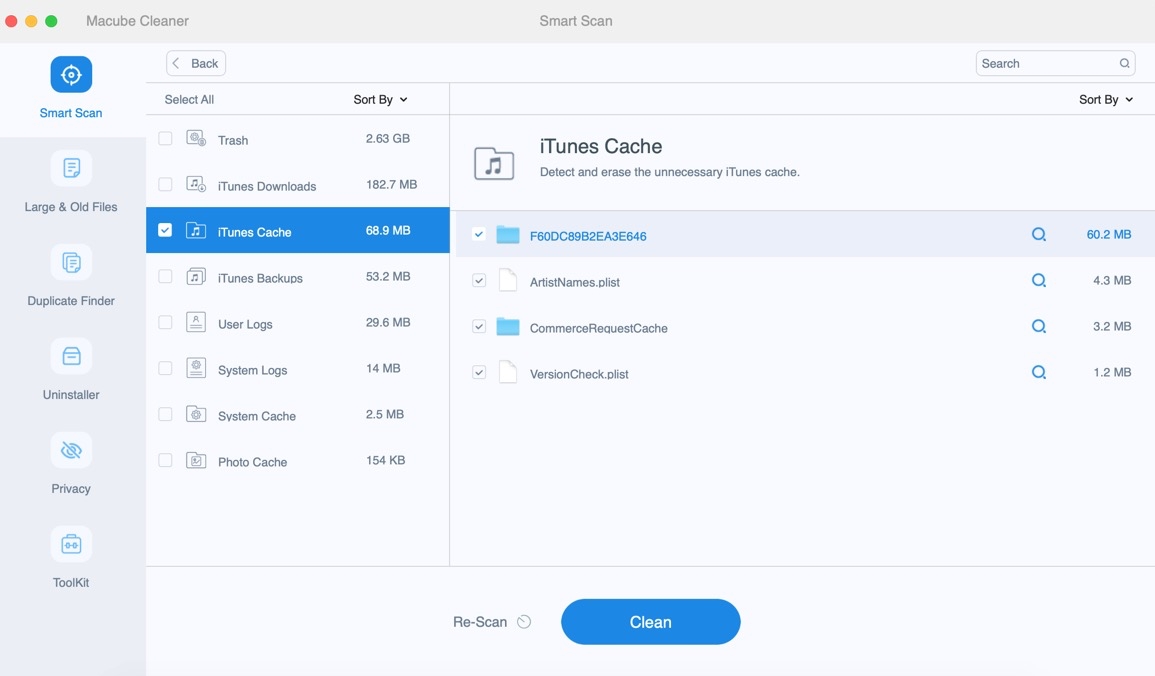
Step 3: Choose Privacy > Scan. From the scanning result, tick and choose Safari . Click Clean button to clean and remove all browser history all (browsing history, download history, download files, cookies and HTML5 Local Storage).
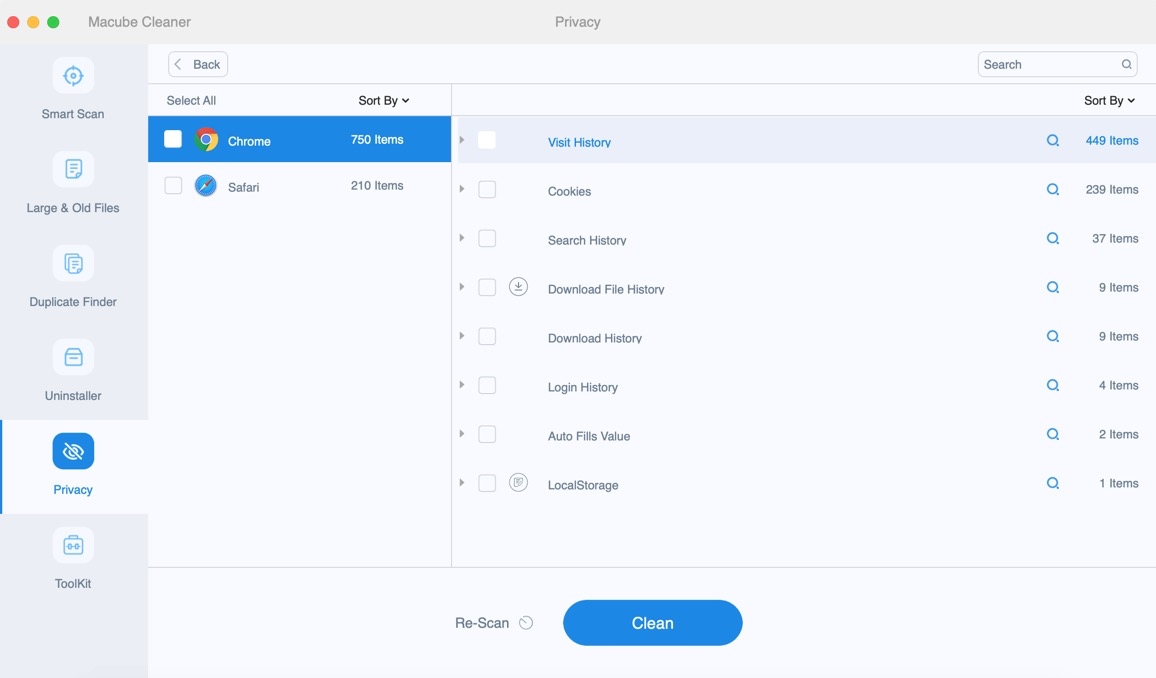
You have restored Safari to its default settings. Now you can open the browser and see if it is working right now. Also, you can use Macube Cleaner to clean up your Mac and free up space: remove duplicate files/image, clear system caches/logs, uninstall apps completely and more.

- You can also reset Safari on iMac, MacBook Air, MacBook Pro by using Terminal command. But you should not use Terminal unless you know what you are doing. Otherwise, you may mess up the macOS.
Although the Reset Safari button is gone, you can still reset Safari on Mac in the following steps.
A Manually reset Safari step-by-step [Security & Complexity]
Step 1: Clear history
Open Safari. Click History > Clear history > all history > Clear History.

Step 2: Clear cache on Safari browser
On Safari browser, navigate to the top left corner and click Safari > Preference > Advanced.
Tick Show Develop menu in menu bar. Click Develop > Empty Caches.
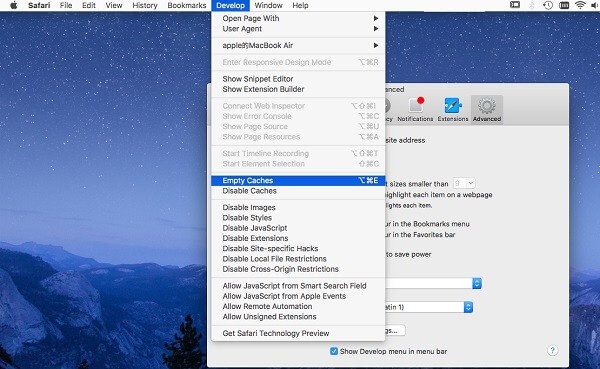
Step 3: Remove stored cookies and other website data
Click Safari > Preference > Privacy > Remove All Website Data.
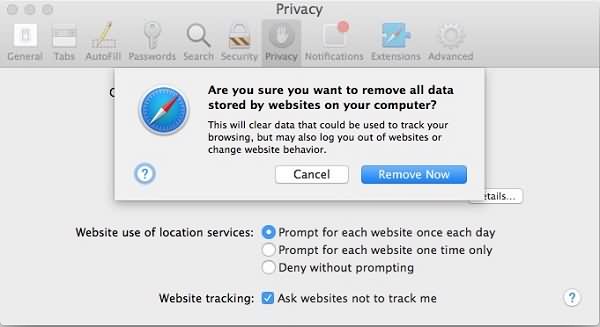
Step 4: Delete Extension & plug-ins
A Safari plug-in or extension is a small software program that enhances the functionality of the Safari web browser. It allows users to customize their browsing experience by adding new features or modifying existing ones. Let’s take a look at how to delete it.
1. Choose Safari > Preferences > Extensions.
2. In the pop-up window, you will see a list of installed extensions. To completely reset Safari, select each extension and click Uninstall.
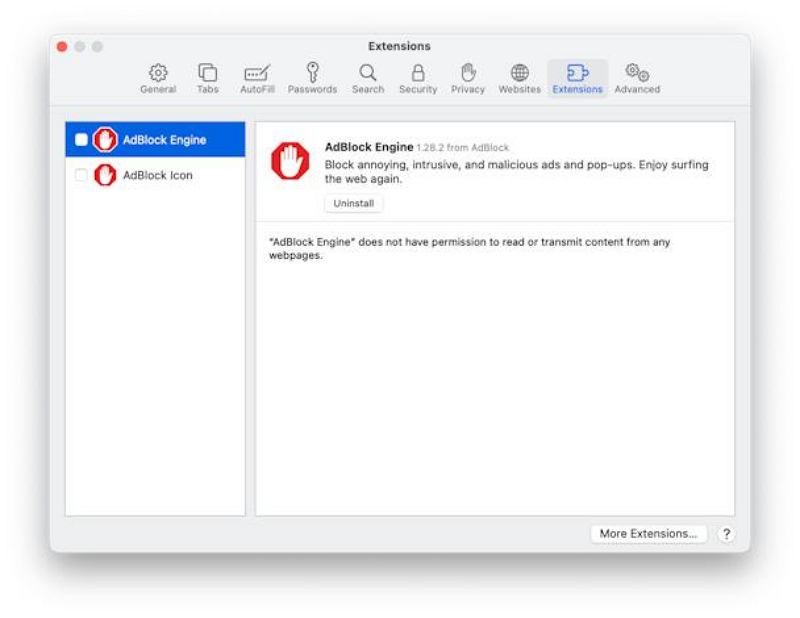
Then, you need to manually delete Safari plug-ins from the Library folder. Don't worry, the following method is not a complete removal of the plugin, and you can still easily restore it when you still want to download it.
- If you can't see it, try holding down the Option key as you click; or in the Go menu, select Go to Folder and enter ~/Library
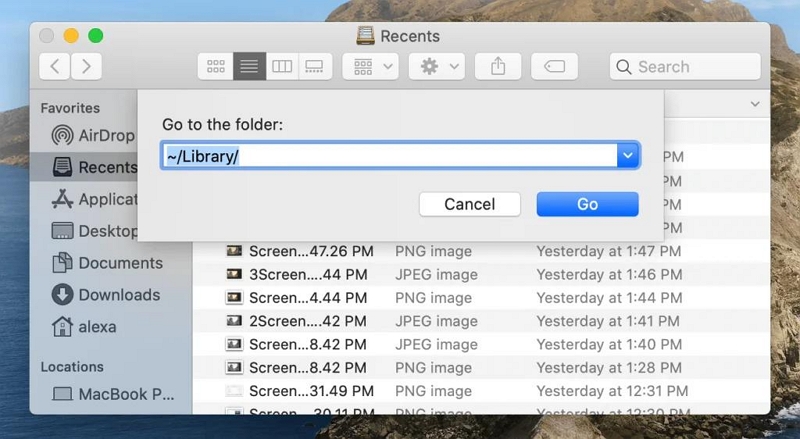
2. Click the Internet Plug-ins folder and drag the plug-ins you want to delete to the Trash.
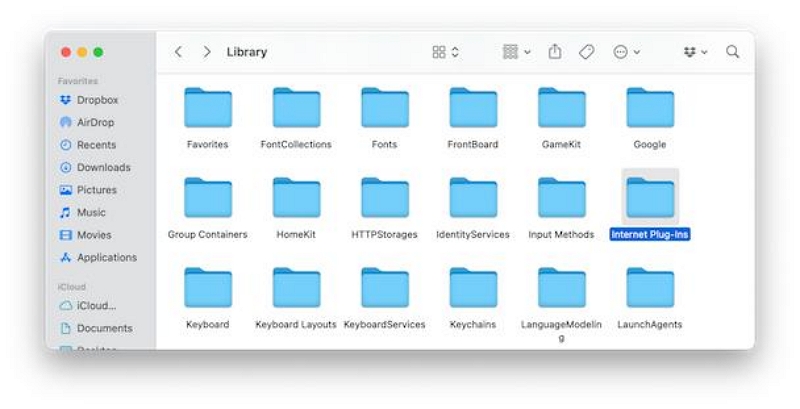
3. Open Finder > Go > Computer again.
4. Click the name of your Mac and select the Library folder or click the Go > Go to Folder, and then type /Library.
5. Click the Internet Plug-ins folder and drag the plug-ins you want to delete to the Trash.
Step 5: Delete Preferences on Safari
Click Go tab and hold down Option, click Library. Find the Preference folder and delete files named with com.apple.Safari.
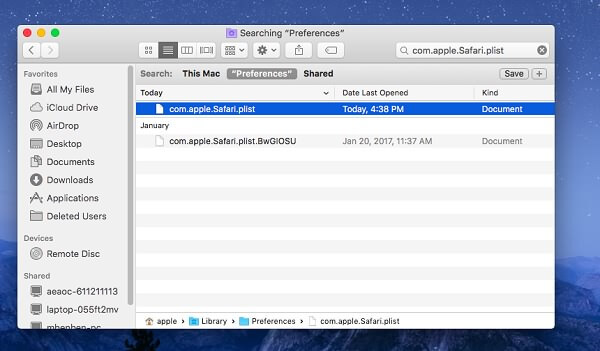
Step 6: Clear Safari window state
In the Library, locate Saved Application State folder and delete files in com.apple.Safari.savedState folder.
- Safari on your iMac, MacBook should start working after the reset. If not, you may reinstall Safari by updating macOS to the latest version.
B Reset Safari on Mac using Terminal [Fast & Risky]
If you use Terminal frequently and are a professional computer user, you can run several Terminal commands to reset Safari. Please be careful, as incorrect terminal commands may cause the system to crash.
Go to Applications > Utilities > Terminal > Paste the following commands. Execute the following commands sequentially in the Terminal, typing each line separately. Once you run a command, the Terminal will request confirmation to delete the specified files. Press “y” to confirm and then press Enter. mv ~/Library/Safari ~/Desktop/Safari-`date +%Y%m%d%H%M%S` rm -Rf ~/Library/Caches/Apple\ -\ Safari\ -\ Safari\ Extensions\ Gallery rm -Rf ~/Library/Caches/Metadata/Safari rm -Rf ~/Library/Caches/com.apple.Safari rm -Rf ~/Library/Caches/com.apple.WebKit.PluginProcess rm -Rf ~/Library/Cookies/Cookies.binarycookies rm -Rf ~/Library/Preferences/Apple\ -\ Safari\ -\ Safari\ Extensions\ Gallery rm -Rf ~/Library/Preferences/com.apple.Safari.LSSharedFileList.plist rm -Rf ~/Library/Preferences/com.apple.Safari.RSS.plist rm -Rf ~/Library/Preferences/com.apple.Safari.plist rm -Rf ~/Library/Preferences/com.apple.WebFoundation.plist rm -Rf ~/Library/Preferences/com.apple.WebKit.PluginHost.plist rm -Rf ~/Library/Preferences/com.apple.WebKit.PluginProcess.plist rm -Rf ~/Library/PubSub/Database rm -Rf ~/Library/Saved\ Application\ State/com.apple.Safari.savedState
Using the terminal to reset Safari is fast, but it may cause risks. Therefore, this article recommends using the zero-risk and efficient Macube Cleaner to reset Safari to meet your needs.
Part 3:FAQs
Q1: can i restore my bookmarks after resetting safari.
Certainly! You can recover your bookmarks after resetting Safari on your Mac by following these steps:
- Open Safari on your Mac.
- Click on the “File” menu located in the top-left corner of the screen.
- Select “Import From” and then choose “Bookmarks HTML File”.
- Navigate to the location where you previously saved your bookmarks before resetting Safari.
- Select the HTML file containing your bookmarks.
- Click on the “Import” button, and your bookmarks should be restored.
Alternatively, if you have enabled iCloud syncing for your Safari bookmarks, you can also restore them by enabling the “Safari” option in iCloud settings on your Mac. This will sync your bookmarks from iCloud to your Safari browser.
Q2: How do I fix Safari problems on iPhone and iPad?
- Refresh the page.
- Install software updates and restart your device.
- Review Safari extensions.
- Try opening a private browsing window.
- Verify Safari settings.
- Verify iCloud Private Relay settings.
- Confirm if any VPN or security software is affecting the connection.
- Verify network settings.
I hope you have learned something about resetting Safari in this note. In order to prevent you from encountering problems that affect the use of Safari again, please remember to clean your computer regularly. Macube Cleaner can help you quickly clean software and Mac storage space. If you have more questions about Safari, you are welcome to browse other articles on our website. I believe we can answer your confusion.
Hot Articles
- How to Enable/Disable/Clear Cookies in Safari/Chrome/Firefox on Mac
- 8 Reliable Fixes-How To Quit Safari On Mac When It’s Unresponsive!
- How To Delete Recently Closed Tabs On Browsers Chrome/Safari/Firefox [Step by Step]
- How To Turn Off Private Browsing History On Mac [Safari/FireFox/Chrome]: Step-by-step!
Macube Cleaner
Speed up and troubleshoot your Mac super easily with a Macube full-featured free trial!
Macube Cleaner is downloading now...
Install -- Scan your Mac -- Clean it up

How to fully reset Safari on your Mac

Being the default browser shipped with every Mac, you are very likely using Safari as your main way of accessing the Web.
Therefore, if something goes wrong where Safari either loads and runs slowly, crashes on startup, or is otherwise not functioning correctly, then you might find yourself in a bit of a frustrating situation.
If you need to reset aspects of Safari in order to regain functionality, then even though the options for doing so are somewhat scattered, you can still use them to regain use of your browser.
Remove site history
Safari has its built-in tools for clearing temporary data that may be causing problems.
To do this, go to the Safari menu and choose the option to Clear History and Website Data.

If the problem you are experiencing only happened in the last hour or the past day, then you can try choosing the option here for encompassing that timeframe, otherwise you can remove all history data in this menu.
Alternatively, if you are finding problems happening only with one Web site you visit, then you can remove this data on a per-site basis:
- Go to the Privacy section of Safari’s preferences.
- Click the Details button that appears under the “Remove All Website Data” button.
- Search for your site, and then remove only it from the list.
Clear Safari’s Web caches
Apple has somewhat hidden the options for clearing Safari’s caches (temporary local storage for a number of different settings and configurations), but they are still available to clear.
First, go into Safari in the Apple menu bar and then select Settings.

Once you’re in Settings, go to the Privacy option. Here, you’ll find a button for Manage Website Data – press it, then choose to clear however far back you wish to go.

Disable Extensions
Extensions give additional functions to Safari, but may also cause some problems if they contain bugs.
Therefore, try going to the Extensions section of Safari’s preferences and sliding the setting to “Off.”
Alternatively, you can try disabling Extensions on an individual basis (each should have a checkbox for enabling/disabling), but first turning them off globally and then testing Safari will help indicate whether these are contributing to the problem.
Also be sure you use the Updates button in these preferences to check for and install any new versions of your extensions.
Remove the Safari Preferences File
First, go into Finder, then select ‘Go’ and ‘Go to Folder’ from the Apple menu.

Type ~/Library/Preferences/ and press Enter. Find the file named com.apple.Safari.plist and move it to the Trash. This will reset your Safari preferences to default.
Finally, restart your device
The last thing that you need to do to fully reset Safari is to shutdown your Macbook, and then restart it.
Once you do this, you should find that your Safari browser – along with history and preferences – has been reset.
How to Restart Mac (from Terminal)
How to add a printer on a Macbook air
At Mac Issues, we're dedicated to helping you learn how to use your Macbook properly. With tutorials, how-to troubleshooting guides & real reviews, hopefully we can make your day that little bit easier.
Read more from Mac Issues

Thanks for Visiting MacIssues.com.
MacIssues is dedicated to helping you make the most of your Macbook.
© MacIssues.com 2024. Not affiliated with Apple Inc.
How To Reset Safari In Mac

- Software & Applications
- Browsers & Extensions
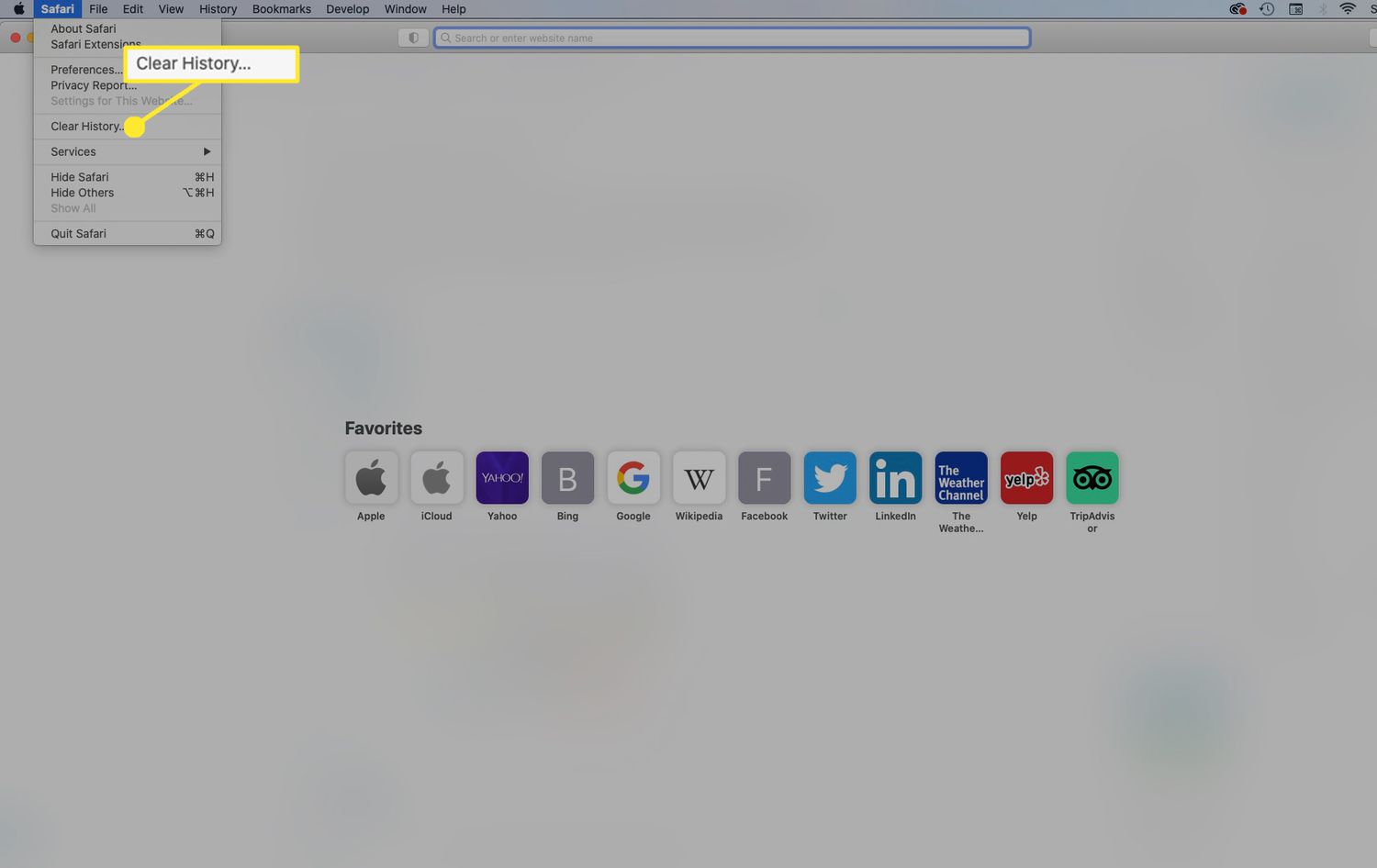
Introduction
Resetting Safari on your Mac can be a helpful solution when you encounter issues such as slow performance, unexpected crashes, or unresponsive web pages. By resetting Safari, you can clear out accumulated data, remove problematic extensions, and restore the browser to its default settings. This process can effectively resolve various browsing issues and enhance the overall performance of Safari.
Whether you're experiencing frequent crashes, encountering persistent pop-up ads, or noticing unusual behavior while browsing, resetting Safari can often provide a fresh start and resolve these issues. It's important to note that resetting Safari will clear your browsing history, cookies, and other website data, so it's essential to back up any important information before proceeding with the reset.
In this guide, we'll walk you through the step-by-step process of resetting Safari on your Mac. By following these instructions, you can effectively troubleshoot common browsing issues and ensure that Safari functions smoothly and efficiently. Let's dive into the details and learn how to reset Safari to optimize your browsing experience.
Step 1: Open Safari Preferences
To initiate the process of resetting Safari on your Mac, the first step is to access the Safari Preferences . This can be done by launching the Safari browser and locating the "Safari" option in the top menu bar. Upon clicking on "Safari," a drop-down menu will appear, and you should select "Preferences" from the list. Alternatively, you can use the keyboard shortcut "Command + ," to directly open the Preferences window.
Upon accessing the Preferences window, you will be presented with a range of customizable settings and options for Safari. This is where you can modify various aspects of the browser, including privacy settings, security preferences, and extensions. The Preferences window is a central hub for managing Safari's behavior and appearance, making it a crucial starting point for the process of resetting the browser.
Once you have opened the Preferences window, you are ready to proceed to the next step in the process of resetting Safari. This initial step sets the stage for the subsequent actions that will ultimately lead to a refreshed and optimized browsing experience. By accessing the Preferences window, you gain access to the underlying settings and configurations that govern Safari's functionality, allowing you to make informed adjustments to enhance the browser's performance.
In the following steps, we will delve deeper into the process of resetting Safari, leveraging the options and tools available within the Preferences window to ensure a comprehensive and effective reset. By navigating through the Preferences window and making the necessary adjustments, you can pave the way for a smoother and more efficient browsing experience with Safari on your Mac.
With the first step completed, you are now prepared to move on to the subsequent stages of the reset process, each of which plays a pivotal role in restoring Safari to its default state. As we progress through the remaining steps, you will gain a deeper understanding of the intricacies involved in resetting Safari and optimizing its performance for seamless browsing.
Next, we will explore the second step in the process, which involves navigating to the Advanced tab within the Safari Preferences window. This step is essential for enabling additional options that are instrumental in the comprehensive reset of Safari on your Mac. Let's continue our journey toward resetting Safari and revitalizing your browsing experience.
Step 2: Choose the Advanced Tab
After accessing the Safari Preferences window, the next crucial step in the process of resetting Safari on your Mac is to navigate to the Advanced tab. This tab houses a range of advanced settings and options that are integral to the comprehensive reset of the browser.
Upon entering the Advanced tab within the Safari Preferences window, you gain access to a plethora of advanced configurations that govern the behavior and functionality of the browser. These settings delve into the intricacies of Safari's operations, allowing for fine-tuned adjustments that can significantly impact the browsing experience.
One of the key features within the Advanced tab is the option to enable the Develop menu. This menu provides access to a variety of developer-oriented tools and functionalities that are typically hidden from the standard Safari interface. By enabling the Develop menu, you unlock a suite of powerful tools that can aid in troubleshooting and optimizing the browser's performance.
Enabling the Develop menu is essential for the subsequent steps in the reset process, as it grants access to critical options that facilitate the comprehensive restoration of Safari to its default state. These options include the ability to clear caches, disable extensions, and reset various aspects of the browser that may be contributing to performance issues.
In addition to enabling the Develop menu, the Advanced tab also offers the option to manage website data. This feature allows you to view and remove specific data stored by websites, including cookies, cached files, and other site-specific information. By managing website data, you can effectively clear out accumulated browsing data that may be impacting Safari's performance.
Furthermore, the Advanced tab provides access to a range of other advanced settings, such as those related to security, privacy, and website permissions. These settings offer granular control over how Safari interacts with websites and handles various types of content, empowering you to tailor the browser's behavior to align with your preferences and security requirements.
By choosing the Advanced tab within the Safari Preferences window, you position yourself to leverage the advanced configurations and options that are pivotal to the comprehensive reset of Safari on your Mac. This step sets the stage for the subsequent actions that will ultimately lead to a refreshed and optimized browsing experience, ensuring that Safari functions smoothly and efficiently.
With the Advanced tab explored and its significance in the reset process elucidated, you are now prepared to proceed to the next step, where you will enable the Develop menu and unlock a suite of powerful tools that will aid in the comprehensive restoration of Safari. Let's continue our journey toward resetting Safari and revitalizing your browsing experience.
Step 3: Enable the Develop Menu
Enabling the Develop menu within Safari is a pivotal step in the process of resetting the browser on your Mac. The Develop menu unlocks a suite of powerful tools and functionalities that are instrumental in troubleshooting, optimizing, and customizing the browsing experience. By enabling this menu, you gain access to a range of developer-oriented features that are typically hidden from the standard Safari interface, empowering you to delve into the inner workings of the browser and make informed adjustments to enhance its performance.
To enable the Develop menu, you will navigate to the Advanced tab within the Safari Preferences window, as outlined in the previous step. Once in the Advanced tab, you will find the option to "Show Develop menu in menu bar." By checking this option, you effectively enable the Develop menu, causing it to appear in the Safari menu bar alongside other standard options.
The Develop menu offers a wealth of tools and functionalities that cater to developers, power users, and individuals seeking to optimize their browsing experience. One of the key features within the Develop menu is the ability to access the Web Inspector, a powerful tool that allows you to inspect, debug, and modify the structure and behavior of web pages. The Web Inspector provides invaluable insights into the underlying code and elements of web pages, enabling you to diagnose issues, optimize performance, and customize the display of content.
In addition to the Web Inspector, the Develop menu grants access to options for disabling caches, disabling extensions, and resetting various aspects of the browser. These options are instrumental in the comprehensive reset of Safari, as they allow you to clear out accumulated data, remove problematic extensions, and restore the browser to its default settings. By leveraging the functionalities within the Develop menu, you can effectively troubleshoot common browsing issues and ensure that Safari functions smoothly and efficiently.
Enabling the Develop menu within Safari empowers you to harness the full potential of the browser, providing access to advanced tools and functionalities that are essential for the comprehensive reset and optimization of Safari on your Mac. By enabling this menu, you position yourself to leverage a suite of powerful features that can aid in troubleshooting, customizing, and enhancing the browsing experience, ultimately leading to a refreshed and optimized Safari browser .
With the Develop menu enabled, you are now prepared to proceed to the next step in the reset process, where you will utilize the functionalities within the Develop menu to initiate the comprehensive reset of Safari on your Mac. Let's continue our journey toward resetting Safari and revitalizing your browsing experience.
Step 4: Reset Safari
Resetting Safari on your Mac involves a series of critical actions that collectively restore the browser to its default state, effectively clearing out accumulated data, removing problematic extensions, and optimizing its performance. This process is instrumental in troubleshooting common browsing issues and ensuring that Safari functions smoothly and efficiently. By following the steps outlined below, you can initiate the comprehensive reset of Safari and revitalize your browsing experience.
Clear Browsing History and Data
The first step in resetting Safari involves clearing the browsing history and data. This action effectively removes the record of websites visited, searches conducted, and other browsing activities. To accomplish this, you will navigate to the "History" menu in the Safari menu bar and select "Clear History." Upon doing so, a window will appear, allowing you to choose the time range for which you wish to clear the history. Selecting "Clear History" will remove the specified browsing history, contributing to the comprehensive reset of Safari.
Remove Website Data and Cookies
In addition to clearing the browsing history, it is essential to remove website data and cookies to further optimize Safari. This action involves accessing the "Privacy" tab within the Safari Preferences window and clicking on "Manage Website Data." Here, you can view and remove specific data stored by websites, including cookies and cached files. By removing this data, you effectively clear out accumulated browsing data that may be impacting Safari's performance, contributing to the comprehensive reset of the browser.
Disable Extensions and Plug-Ins
Another critical step in resetting Safari is to disable extensions and plug-ins that may be contributing to browsing issues. This action involves accessing the "Extensions" tab within the Safari Preferences window and unchecking the boxes next to each installed extension. Additionally, you can navigate to the "Security" tab to manage website plug-ins and disable any that may be causing issues. By disabling extensions and plug-ins, you eliminate potential sources of browsing problems, paving the way for a refreshed and optimized browsing experience.
Reset Safari Settings
The final step in the reset process involves resetting Safari's settings to their default configurations. This action is carried out by navigating to the "General" tab within the Safari Preferences window and clicking on "Reset Safari." A window will appear, allowing you to choose which settings to reset, including clearing the cache, removing cookies, and resetting the top sites. By selecting the desired options and proceeding with the reset, you effectively restore Safari to its default state, resolving common browsing issues and optimizing its performance.
By following these steps to reset Safari on your Mac, you can effectively troubleshoot common browsing issues and ensure that the browser functions smoothly and efficiently. This comprehensive reset clears out accumulated data, removes problematic extensions, and restores Safari to its default settings, ultimately revitalizing your browsing experience and enhancing the overall performance of the browser.
In conclusion, resetting Safari on your Mac is a valuable troubleshooting technique that can effectively address a range of browsing issues and optimize the performance of the browser. By following the step-by-step process outlined in this guide, you can initiate a comprehensive reset that clears out accumulated data, removes problematic extensions, and restores Safari to its default settings, ultimately revitalizing your browsing experience.
Through the process of resetting Safari, you gain the ability to clear browsing history and data, remove website data and cookies, disable extensions and plug-ins, and reset Safari's settings to their default configurations. These actions collectively contribute to the restoration of Safari to a pristine state, free from the clutter and issues that may have been impacting its performance.
Upon completing the reset process, you can expect to experience a smoother and more efficient browsing experience with Safari. The removal of accumulated data and cookies, coupled with the disabling of problematic extensions and the restoration of default settings, can lead to improved stability, faster page loading times, and a more responsive browsing interface.
Furthermore, the ability to access the Develop menu and leverage advanced tools within Safari empowers you to take control of the browser's behavior and optimize its performance according to your preferences. This level of customization and fine-tuning ensures that Safari aligns with your specific browsing needs, providing a tailored and optimized experience.
It's important to note that resetting Safari will clear your browsing history, cookies, and other website data, so it's essential to back up any important information before proceeding with the reset. Additionally, after completing the reset, you may need to reconfigure certain preferences and re-enable desired extensions to tailor Safari to your specific requirements.
By incorporating the insights and techniques presented in this guide, you are equipped to effectively troubleshoot common browsing issues and ensure that Safari functions smoothly and efficiently. The comprehensive reset process enables you to revitalize your browsing experience, setting the stage for seamless and enjoyable interactions with the Safari browser on your Mac.
In essence, resetting Safari serves as a valuable maintenance practice, allowing you to refresh the browser and optimize its performance, ultimately enhancing your overall browsing experience and productivity. Embracing the process of resetting Safari empowers you to take proactive steps in maintaining a smooth and efficient browsing environment, ensuring that Safari remains a reliable and effective tool for accessing the web on your Mac.
Leave a Reply Cancel reply
Your email address will not be published. Required fields are marked *
Save my name, email, and website in this browser for the next time I comment.
- Crowdfunding
- Cryptocurrency
- Digital Banking
- Digital Payments
- Investments
- Console Gaming
- Mobile Gaming
- VR/AR Gaming
- Gadget Usage
- Gaming Tips
- Online Safety
- Software Tutorials
- Tech Setup & Troubleshooting
- Buyer’s Guides
- Comparative Analysis
- Gadget Reviews
- Service Reviews
- Software Reviews
- Mobile Devices
- PCs & Laptops
- Smart Home Gadgets
- Content Creation Tools
- Digital Photography
- Video & Music Streaming
- Online Security
- Online Services
- Web Hosting
- WiFi & Ethernet
- Browsers & Extensions
- Communication Platforms
- Operating Systems
- Productivity Tools
- AI & Machine Learning
- Cybersecurity
- Emerging Tech
- IoT & Smart Devices
- Virtual & Augmented Reality
- Latest News
- AI Developments
- Fintech Updates
- Gaming News
- New Product Launches
- Fintechs and Traditional Banks Navigating the Future of Financial Services
- AI Writing How Its Changing the Way We Create Content
Related Post
How to find the best midjourney alternative in 2024: a guide to ai anime generators, unleashing young geniuses: how lingokids makes learning a blast, 10 best ai math solvers for instant homework solutions, 10 best ai homework helper tools to get instant homework help, 10 best ai humanizers to humanize ai text with ease, sla network: benefits, advantages, satisfaction of both parties to the contract, related posts.
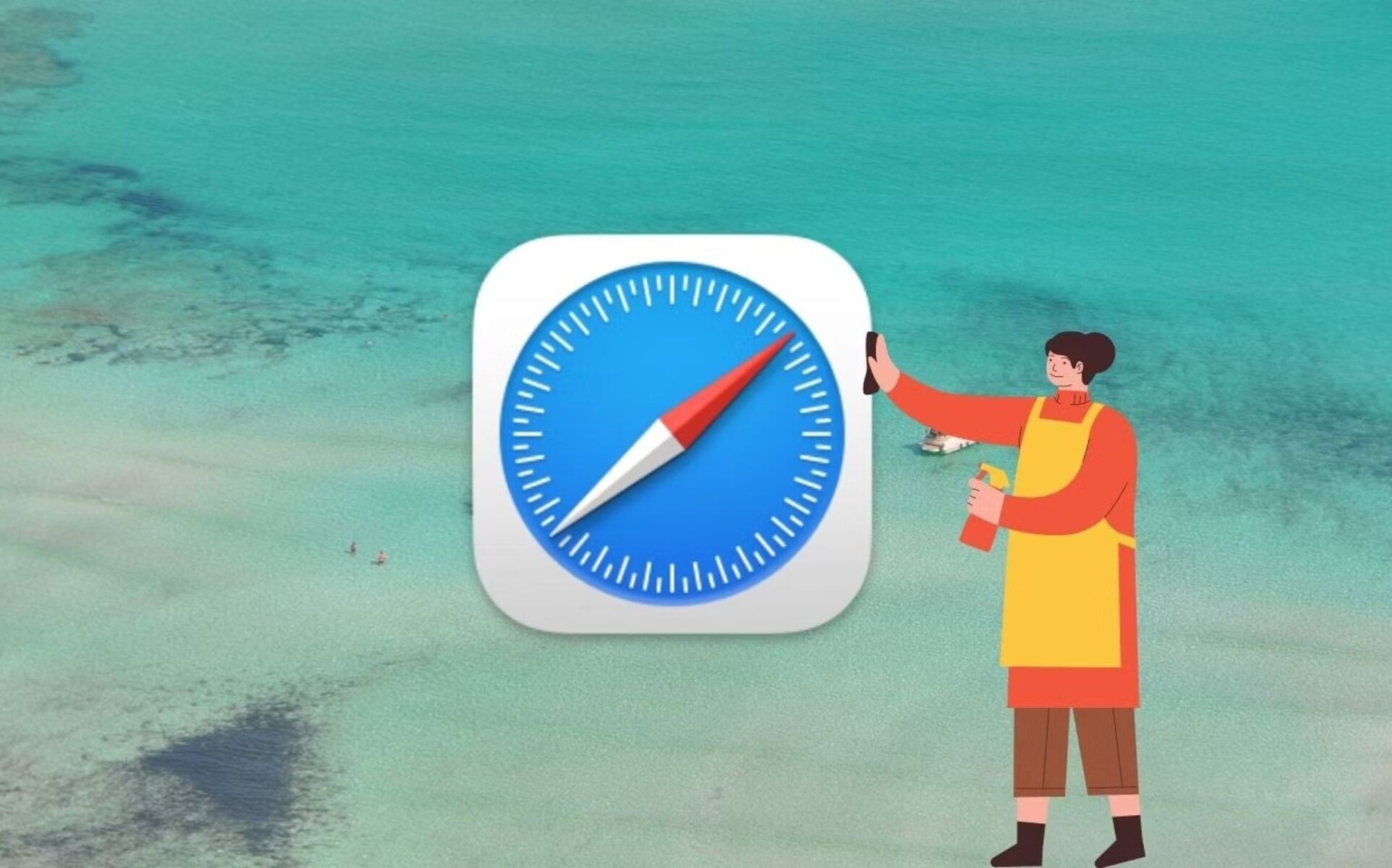
How To Reset Safari 8.0.4
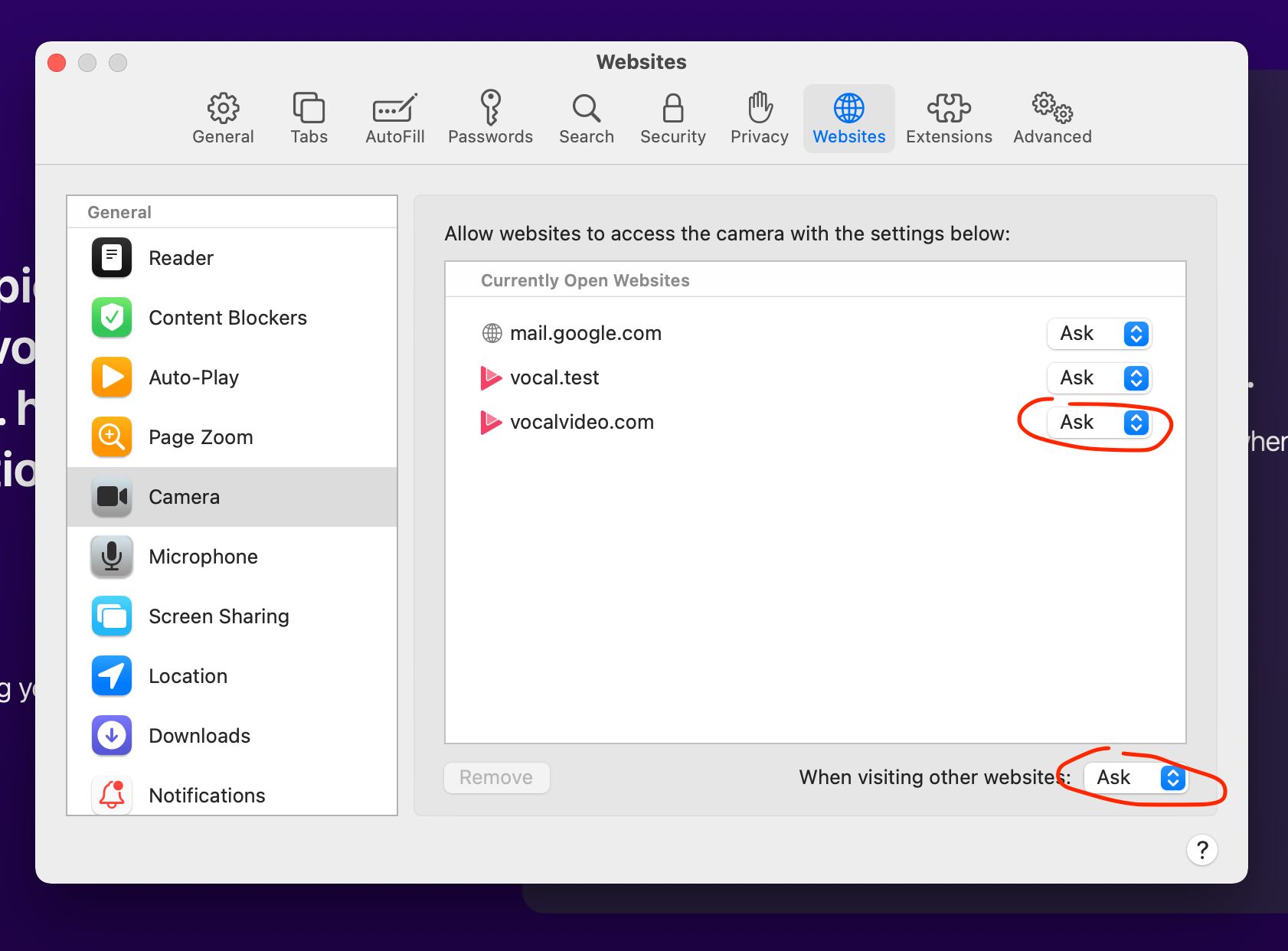
How To Allow Camera Access On Safari Mac

What Does It Mean When Safari Cannot Connect To The Server
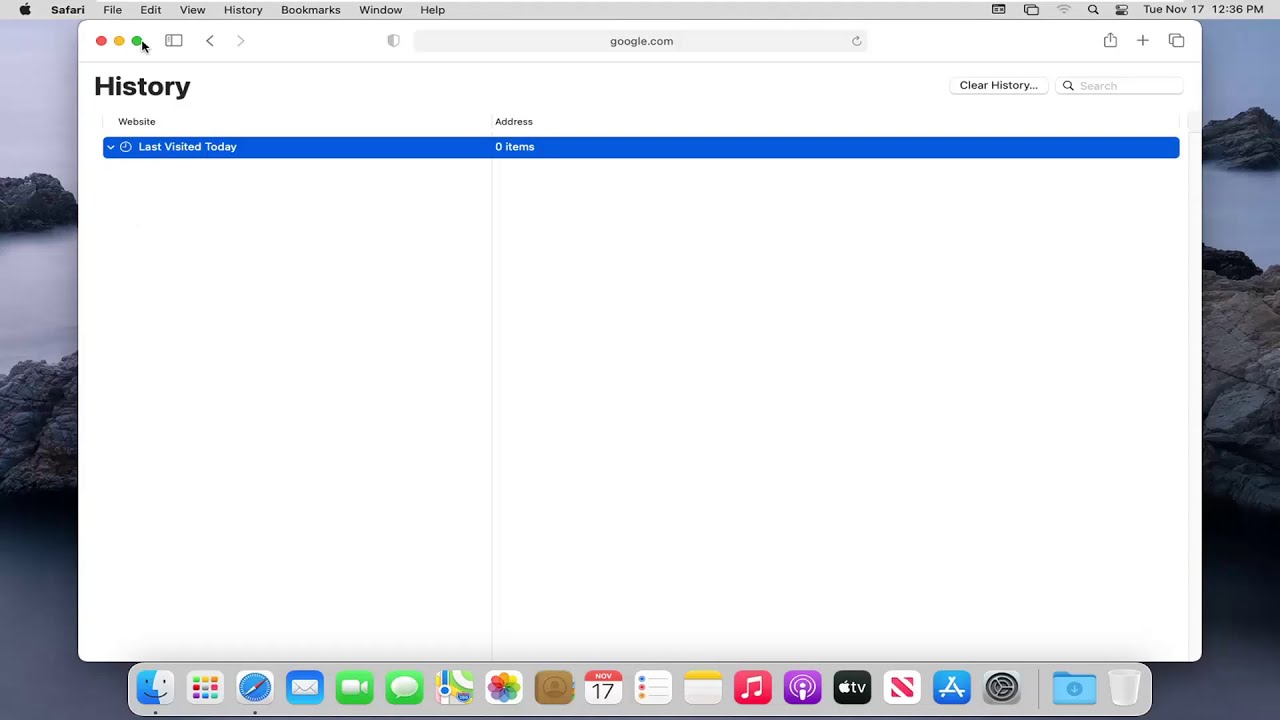
How To Check History On Safari On Mac
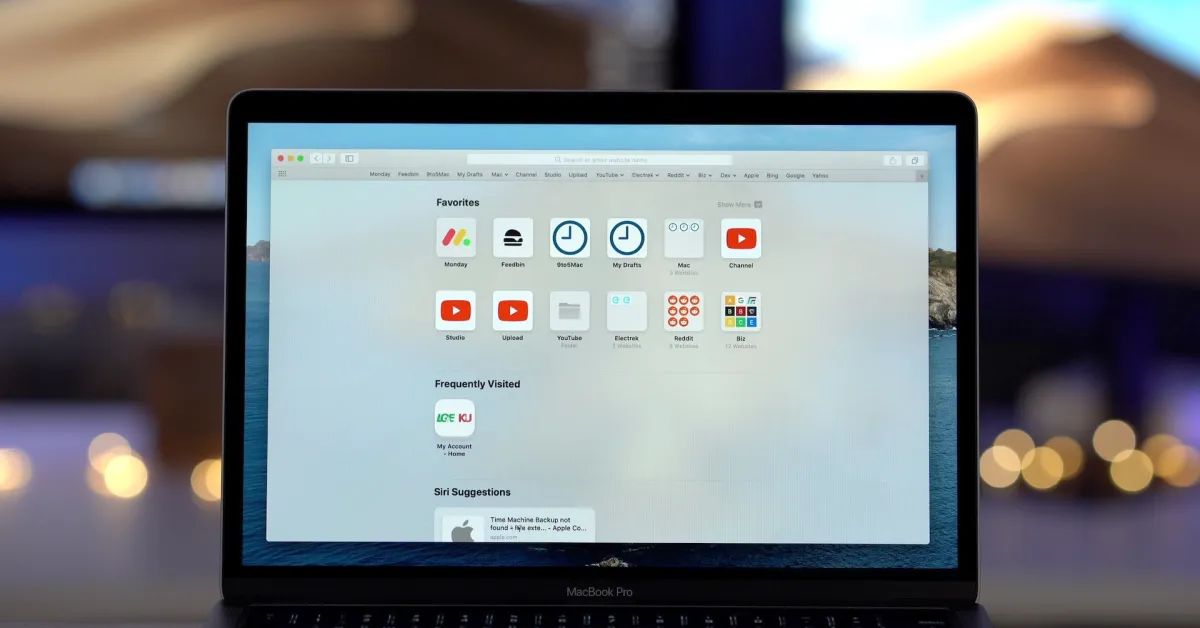
Why Does Safari Not Work On My Mac
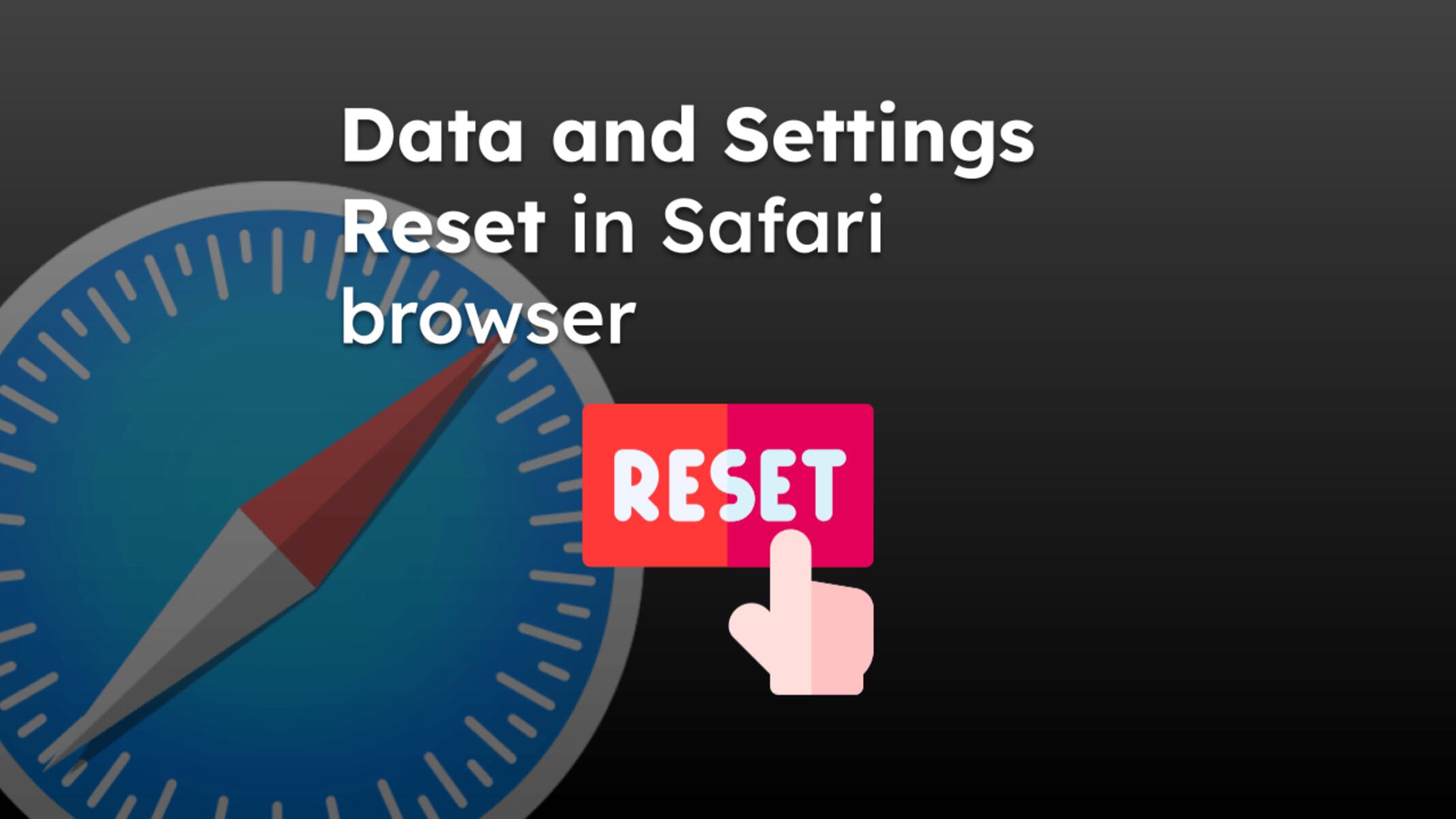
What Is Reset Safari
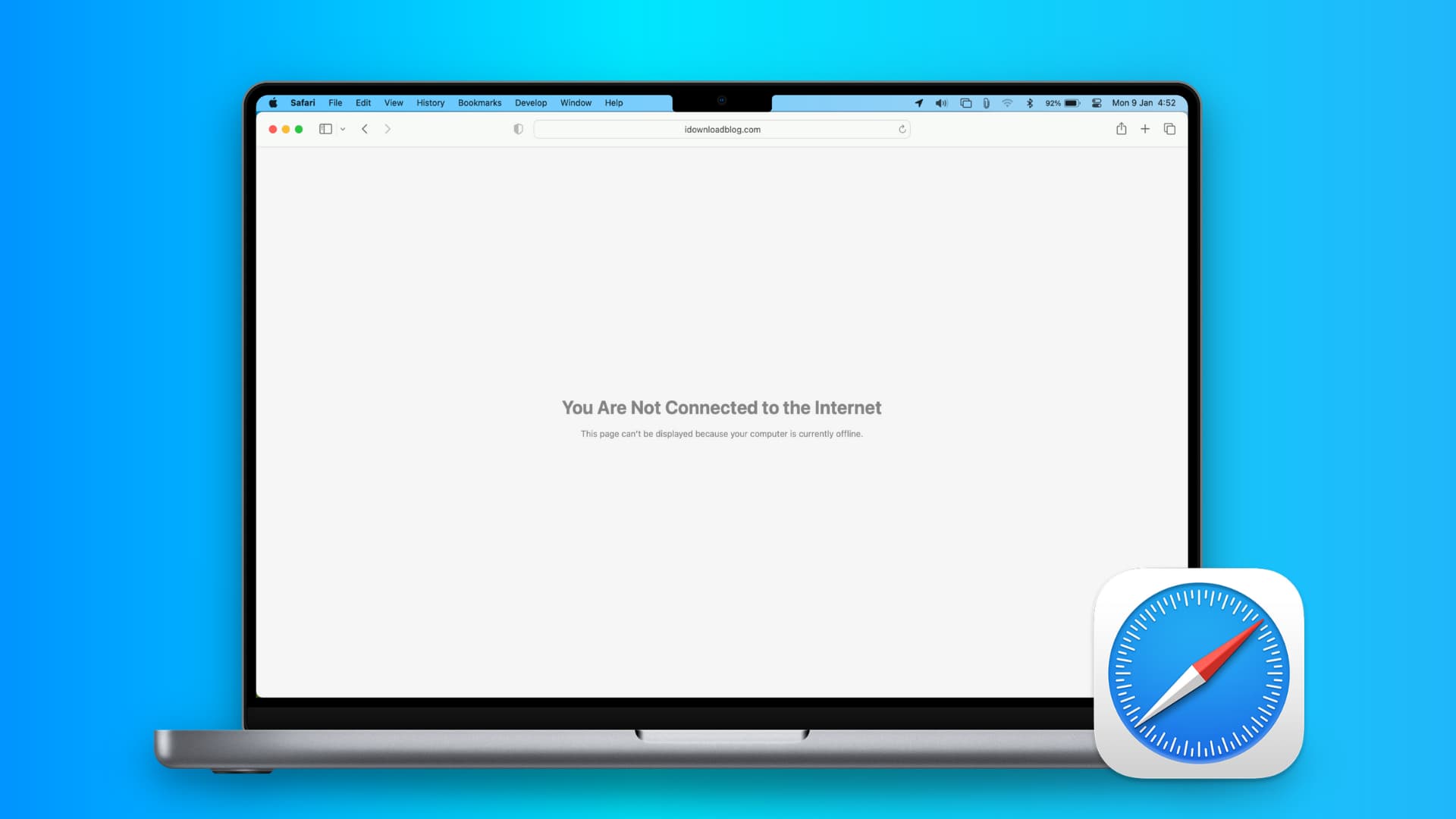
Why Is Safari Not Loading Websites

How To Restart Safari On Macbook
Recent stories.

Fintechs and Traditional Banks: Navigating the Future of Financial Services

AI Writing: How It’s Changing the Way We Create Content

How to Know When it’s the Right Time to Buy Bitcoin

How to Sell Counter-Strike 2 Skins Instantly? A Comprehensive Guide

10 Proven Ways For Online Gamers To Avoid Cyber Attacks And Scams

- Privacy Overview
- Strictly Necessary Cookies
This website uses cookies so that we can provide you with the best user experience possible. Cookie information is stored in your browser and performs functions such as recognising you when you return to our website and helping our team to understand which sections of the website you find most interesting and useful.
Strictly Necessary Cookie should be enabled at all times so that we can save your preferences for cookie settings.
If you disable this cookie, we will not be able to save your preferences. This means that every time you visit this website you will need to enable or disable cookies again.

How To Fully Reset Safari On Mac
This article explains how you can fully reset Safari on your Mac. You might need to do this if Safari on your Mac runs very slowly, crashes often, acts bizarre, or functions incorrectly.
See also: Your System Is Infected With (3) Viruses
Safari is included with the macOS operating system.
How to reset Safari
1-Remove site history
There are two ways to do this. If you want to remove particular web sites (e.g., a web site is giving you problems whenever you visit) then try the second option. Please also note that if you are using other Apple devices (iOS devices or other Macs), if you turn on Safari in iCloud preferences with the same Apple ID, your site browsing history will be removed from all of them.
See also: How To Change Default Search Engine in Safari
When you do this, you will be removing history of web sites you visited, recent searchers, list of download items, frequently visited sites list, web sites that asked to use your located and to send you notifications.
- Open Safari
- Click Safari located in the menu bar in the top left hand corner of your screen
- Click Clear History
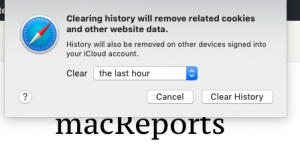
- Click the Clear History button
- Click Preferences
- Click the Privacy tab
- Click the manage Website Data button
- Here you can remove everything, or you can remove specific web sites. You can also search to find a specific web site.
2-Clear web caches
Here is how you can clear Safari’s caches. Caches are images and videos, or the layouts for entire web pages you browsed.
- In the Safari app, click Safari
- Click the Advanced tab
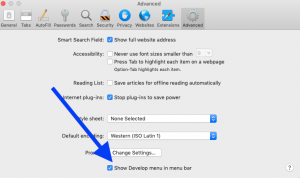
- Close the Preferences window
- Now you will see a new menu bar item called ‘Develop’
- Click Develop
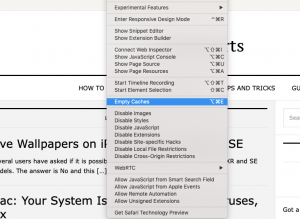
Disable Safari extensions
Extensions are small programs that extends your Safari’s functionalities. They add new features to let you enhance and customize your browsing experience. But some may have bugs and thus cause problems. And you may want to turn them off. Here is how:
- Choose Safari from the Safari menu bar
- Click the Extensions tab
- For each extension, you can use the checkbox to enable or disable that particular extension.
- You can also uninstall extensions.
Disable Safari plugins
Please note that Safari is no longer supporting most plugins. You can however view and manage the plugins you have installed. Here is how:
- Click Safari
- Click the Websites tab
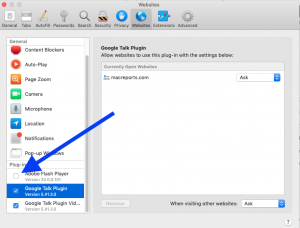
- When you are done, close the window
See also: How To See The Full Web Site Address In Safari URL Bar
Dr. Serhat Kurt worked as a Senior Technology Director specializing in Apple solutions for small and medium-sized educational institutions. He holds a doctoral degree (or doctorate) from the University of Illinois at Urbana / Champaign and a master’s degree from Purdue University. He is a former faculty member. Here is his LinkedIn profile and Google Scholar profile . Email Serhat Kurt .
Similar Posts
Mac spotlight search not working after macos upgrade, fix.
Spotlight Search is a feature that lets you search for apps on your Mac and search your mail, messages and the internet for relevant content. Although Spotlight issues are not a new thing,…
Critical Security Warning! Your Mac is Infected…Fix
An increasing number of users are experiencing issues with Safari. Specifically, a pop-up alert window appears saying that their Mac may have been hijacked or that there is a “suspicious activity” or that their…
How to Find Word Count in Pages on Mac, iPhone, iPad and iCloud.com
In this short article, I explain how you can find and view an accurate count of the number of words in Pages on your Mac, iPhone, iPad, or on iCloud.com on your computer….

How to Use Express Transit Mode with Apple Pay without Face ID, Touch ID, or Passcode
You can pay with Apple Pay in a lot of participating places such as restaurants, retail stores, gas stations, etc. For example, a lot of users use their iPhones and Apple Watches to…
How To Block or Unblock A Number Or Contact On Your iPhone
If you don’t want to get calls from a phone number or contact, you can block it. If you change your mind later, you can always unblock it. This article provides details on…
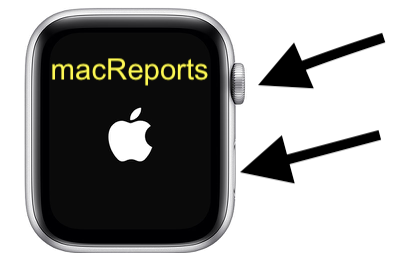
My Apple Watch Won’t Turn On, Fix
It can be very bad if your Apple Watch won’t turn on. You watch may look dead, the screen is black and buttons do not seem to be working. Do not panic. The good news…
I Have been having this for about a week now. I Have tried getting rid of the Cookies and what not, restarted Safari, everything still doesn’t work. Did Apple do something to Safari? Like I Can use Chrome and everything is fine, but I go to Youtube on Safari and login and I get a blank screen. I am not logged in I Can see the page it’s only when I login is when I can’t see anything. Again not the case with Chrome. Does anyone one know what is going on?
I have the same problem
Safari 14 I cannot attach photos into facebook, its takes forever to open any websites, i have cleared the history and still takes forever, its like something is running in the background making my computer run slow. We don’t even use this computer very much as we do most surfing on our iPad, we have att wifi which shows 4 bars on the wifi icon. Can the problem be to many files on the computer or in the iCloud?
No facebook or youtube since updating to Big Sur 11.0 Safari is not working properly.
Safari not working at all…i couldn’t even open http://www.google.com
Hi, I have done all steps recommended, YouTube still does not play on MacBook Air. YouTube opens alright, but when I try playing a video, it won’t play, just that circle on the screen that keeps rotating. Can you please help me solve this problem. I am not computer savvy. Thank you, Liviu
Leave a Reply Cancel reply
Your email address will not be published. Required fields are marked *
Categories:
Tech Guides for Everyone
You are here: Home / Tutorials / Reset Apple Safari to default settings
Reset Apple Safari to default settings
Posted Jul 03, 07:21 AM Comments 0

sponsored link
Since Safari version 9.0 (macOS El Capitan), Apple have removed the menu option to Reset Safari to defaults. Why they’ve done this I’m not entirely sure, but probably to do with data collection and digital fingerprinting. To properly reset Safari, you need to run some code, or download my script for free: ReSaf
Reset Safari to default settings
Further reading.
- Open a Terminal window: Applications > Utilities > Terminal
- Backup your bookmarks (optional). Copy-paste the following code into Terminal: cp ~/Library/Safari/Bookmarks.plist ~/Desktop/Bookmarks.plist;
- Force Safari to quit: killall Safari;
- Clear cache, cookies and Safari folders (copy-paste each line separately): rm -Rf ~/Library/Cookies/*; rm -Rf ~/Library/Cache/*; rm -Rf ~/Library/Safari/*;
- Remove some stubborn files and settings (copy-paste each line separately): rm -Rf ~/Library/Caches/Apple\ -\ Safari\ -\ Safari\ Extensions\ Gallery; rm -Rf ~/Library/Caches/Metadata/Safari; rm -Rf ~/Library/Caches/com.apple.Safari; rm -Rf ~/Library/Caches/com.apple.WebKit.PluginProcess; rm -Rf ~/Library/Cookies/Cookies.binarycookies; rm -Rf ~/Library/Preferences/Apple\ -\ Safari\ -\ Safari\ Extensions\ Gallery; rm -Rf ~/Library/Preferences/com.apple.Safari.LSSharedFileList.plist; rm -Rf ~/Library/Preferences/com.apple.Safari.RSS.plist; rm -Rf ~/Library/Preferences/com.apple.Safari.plist; rm -Rf ~/Library/Preferences/com.apple.WebFoundation.plist; rm -Rf ~/Library/Preferences/com.apple.WebKit.PluginHost.plist; rm -Rf ~/Library/Preferences/com.apple.WebKit.PluginProcess.plist; rm -Rf ~/Library/PubSub/Database; rm -Rf ~/Library/Saved\ Application\ State/com.apple.Safari.savedState;
- Restore your bookmarks (optional). Copy-paste each line separately: rm -Rf ~/Library/Safari/Bookmarks.plist; cp ~/Desktop/Bookmarks.plist ~/Library/Safari/Bookmarks.plist;
You can now open Safari and start fresh!
- Repair macOS File System Errors with Disk Utility
- Reset Safari menu option gone
- Apple Safari version 9.0
- macOS Catalina
Author Richie Brereton Categories Safari , macOS
There are currently no comments on this article.
Enter your comment below. Fields marked * are required. You must preview your comment before submitting it.
PLEASE NOTE: You must preview a comment before submitting
Comments use Textile formatting

- Video Tutorials
Part 1. How to Reset Safari on Mac through Terminal
Part 2. how to reset safari on mac by deleting its data, part 3. how to clear data on safari with fonelab mac sweep, part 4. faqs about how to reset safari on mac.
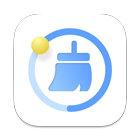
Remove your data from Mac easily.
- Empty Trash
- Delete Mail App
- Clear Cache on Mac
- Get More Storage on Mac
- Make Chrome Use Less RAM
- Where is Disk Utility on Mac
- Check History on Mac
- Control + Alt + Delete on Mac
- Check Memory on Mac
- Delete An App on Mac
- Clear Cache Chrome on Mac
- Check Storage on Mac
- Clear Browser Cache on Mac
- Delete Favorite on Mac
- Check RAM on Mac
- Delete Browsing History on Mac
How to Reset Safari on Mac [Full Guide You Must Know]

Hi, guys! I have noticed that the Safari on my Mac is consuming too much storage. From time to time, the web browser is also lagging whenever there are multiple tabs open. It is my first time experiencing this kind of issue. Can you help me reset Safari Mac? Thank you so much in advance!
Instead of resetting your Mac to bring Safari back to its default settings, why not reset the web browser only? You may be wondering how to do that. But to tell you frankly, it is possible! The right methods will help you achieve that. If so, see the ways of this post below.
![reset safari using terminal How to Reset Safari on Mac [Full Guide You Must Know]](https://www.fonelab.com/images/mac-sweep/reset-safari-on-mac/reset-safari-on-mac.jpg)
The Mac Terminal is a command tool that you can operate for different commands on your Mac. Some of the commands you can perform using it are fixing corrupted data, resetting Mac, deleting folders, and more. Terminal is the right tool to learn how to reset Safari on a Mac without opening it.
The process of this built-in tool is to enter the command codec to execute it. However, for resetting Mac Safari, there are multiple codes to encode. In these numerous codes, you must not forget even a single letter to avoid other errors on your Mac. See them below and how to reset Safari settings on Mac.
Step 1 Please quit the Safari app on your Mac. Go to the Finder tool by clicking its icon on the Mac Dock. Click the Application folder on the left side of the main interface. Later, choose the Utilities folder on the right. Select the Terminal tool afterward to launch it.
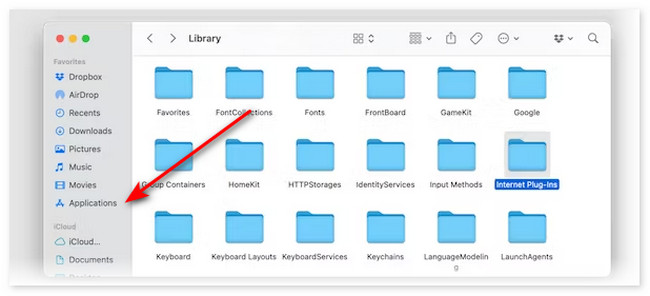
Step 2 Enter the codes below one at a time. Copy and paste them to Terminal for a safe and quick process.
- mv ~/Library/Safari ~/Desktop/Safari-`date +%Y%m%d%H%M%S`
- rm -Rf ~/Library/Caches/Apple\ -\ Safari\ -\ Safari\ Extensions\ Gallery
- rm -Rf ~/Library/Caches/Metadata/Safari
- rm -Rf ~/Library/Preferences/com.apple.Safari.LSSharedFileList.plist
- rm -Rf ~/Library/Preferences/com.apple.Safari.RSS.plist
- rm -Rf ~/Library/Preferences/com.apple.Safari.plist
- rm -Rf ~/Library/Preferences/com.apple.WebFoundation.plist
- rm -Rf ~/Library/Preferences/com.apple.WebKit.PluginHost.plist
- rm -Rf ~/Library/Preferences/com.apple.WebKit.PluginProcess.plist
- rm -Rf ~/Library/PubSub/Database
- rm -Rf ~/Library/Saved\ Application\ State/com.apple.Safari.savedState
- rm -Rf ~/Library/Caches/com.apple.Safari
- rm -Rf ~/Library/Caches/com.apple.WebKit.PluginProcess
- rm -Rf ~/Library/Cookies/Cookies.binarycookies
- rm -Rf ~/Library/Preferences/Apple\ -\ Safari\ -\ Safari\ Extensions\ Gallery
The method above is difficult to perform for a beginner like you. As an alternative, deleting the data of Safari from their original locations will work to reset Safari to default settings on Mac. See the 5 methods below on how to do that. Move on.
Method 1. Delete Safari History
Deleting Safari history can be done through the Main Menu. all you have to do is Launch Safari . After that, click the Safari button and choose the History button at the top. Later, select the Clear History button. Select the Time and Date of the history that you want to delete. In your case, it is recommended to choose the All History button. Click the Clear History button to start deleting them.
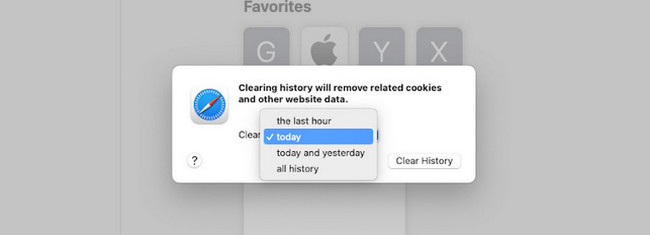
With FoneLab Mac Sweep, you will Clear system, email, photo, iTunes junk files to free up space on Mac.
- Manage similar photos and dulplicate files.
- Show you the detailed status of Mac with ease.
- Empty trash bin to get more storage.
Method 2. Clear Caches on Safari
Clearing Safari caches can also help you reset Safari on Mac. If so, Launch Safari. After that, click the Safari button and choose the Preferences icon. Later, click the Advanced tab at the top and activate the Show Develop Menu in Menu Bar box. Click the icon at the top afterward and click the Empty Caches button.

Method 3. Delete Extensions on Safari
Safari also contains extensions. Delete them to help the Mac Safari to be reset. Launch Safari and click its button at the top left. After that, click the Preferences button and select the Extensions tab. Later, choose all the extensions on the left and click the Uninstall button under their names to delete them.
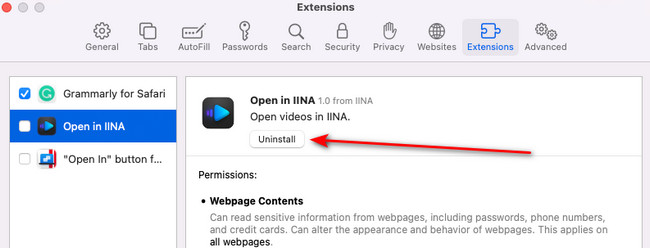
Method 4. Clear Safari Bookmarks
You may be saving websites from Safari by marking them with bookmarks. Delete also these bookmark data to reset Mac Safari. Launch Safari and click the Bookmarks tab at the top. Later, choose the Show Bookmarks button to see all of them. Control-click the bookmarks and select the Delete button to eliminate them.
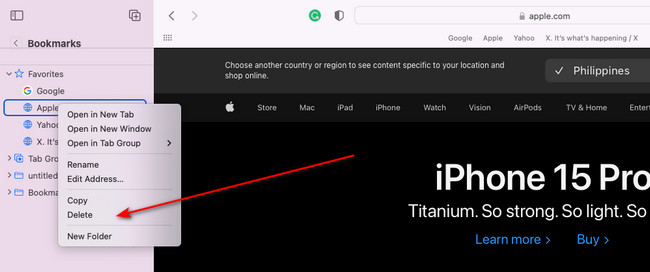
There’s also an existing tool that you can use to clear all the data on your Mac Safari. The tool is called FoneLab Mac Sweep . Let us see below the data it can delete on your Mac Safari. We listed them below.
- Autofill Entries
- Downloaded Files
- Downloads History
- HTML5 Local Storage
- Login History
- Search History
- Browsing History
Aside from this, it contains 10+ more features for cleaning your Mac. It includes the Uninstall , Optimize , Privacy, and more tools. Additionally, the software offers its Status main function to check the current state of your Mac. So convenient, right? If you want to use FoneLab Mac Sweep , please imitate the detailed steps below about its process. Move on.
Step 1 Download the software on your Mac by clicking the Free Download button on this article. After that, please set it up. Double-click its icon afterward to launch it.

Step 2 Please choose the Toolkit icon on the right. After that, you will be directed to the new interface. Select the Privacy button afterward.
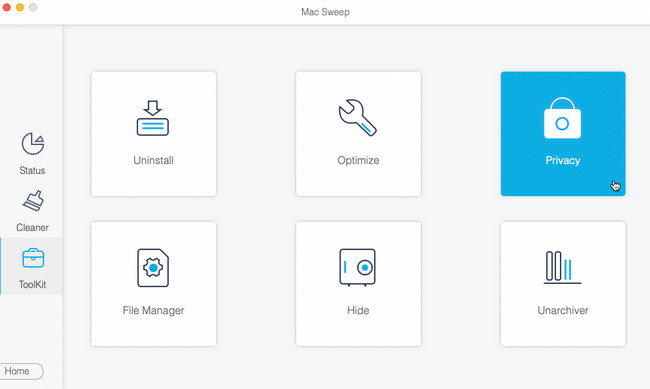
Step 3 Click the Scan button to locate files. After that, click the View button to see the results.
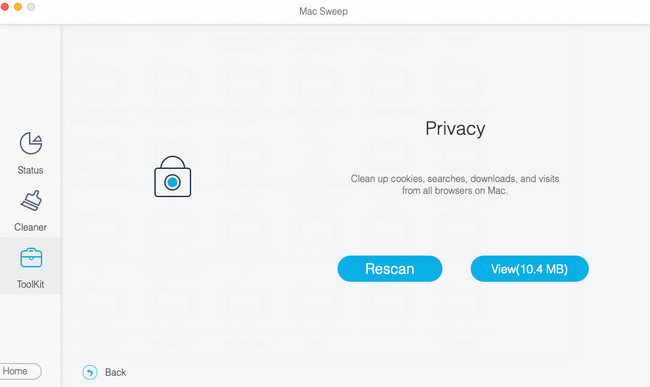
Step 4 Please select the Safari icon on the left. After that, choose all the data on the right. Click the Clean button afterward to start eliminating them on your Mac.
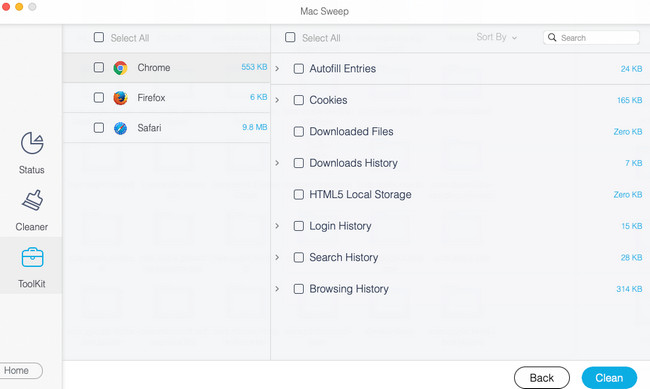
1. Can I delete and reinstall Safari?
No. You cannot delete or reinstall Safari from all of your Apple devices. The reason is that it is the built-in web browser Apple offers. If so, resetting your Mac Safari cannot be performed by reinstalling and deleting it.
2. Is it bad to clear Safari cache?
No. There's nothing wrong with clearing Safari caches. In fact, you will free up space on your Mac and avoid it from being infected by viruses and malware. However, the websites that you often visit will load slower.
Did you learn how to reset Safari Mac? That's great! We hope that you also test the other tools of FoneLab Mac Sweep . It is to free up storage space on your Mac. It contains 10+ deleting features for your Mac data. Do you have more questions? Please leave them in the comment section below. Join our future discussions. Thank you!
Below is a video tutorial for reference.
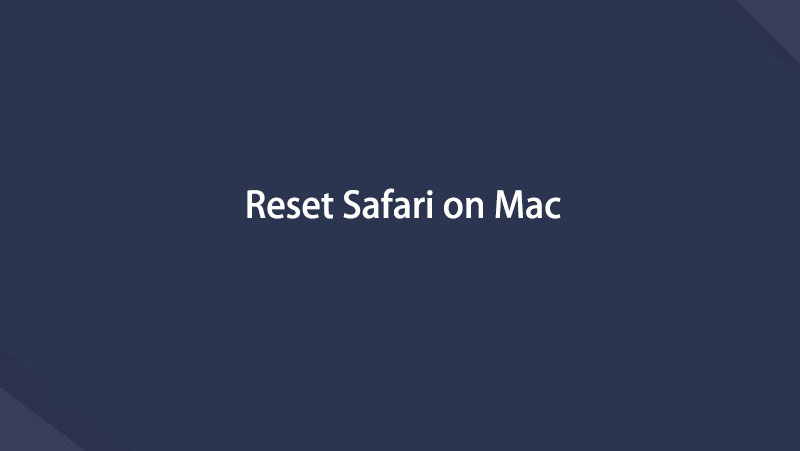
- How to Delete Mail App on Mac Effortlessly
- How to Clear Cache on Mac with Easy Methods
- Easy Methods How to Get More Storage on Mac
FoneLab > Resource > How to Reset Safari on Mac [Full Guide You Must Know]
Copyright © 2024 FoneLab Studio. All rights reserved.
How to Reset Safari to Default Settings on Mac/iPhone?
Want to change the settings in the Safari browser? Want to reset Safari to default settings on Desktop or mobile? Then you are at the right place and this article is all about how to Reset Safari to Default Settings on Mac/iPhone.
We have included all the possible and simple methods that help you to reset Safari Browser to Default settings. So, read this article till the end to get the complete information regarding the Safari Browser and reset it to default settings.
What is a Safari Browser?
Safari Browser is an in-built browser available in the iPhone and macOS. This is similar to all other browsers like Google Chrome, Mozilla Firefox, Opera, etc., This provides all the similar options available in an internet browser. It comes with a blazing-fast JavaScript engine and is known as the fastest browser.
How to Reset Safari To Default Settings on Mac?
Video tutorial.
We Provided this article in the form of a Video Tutorial for our reader’s convenience. If you are interested in reading, skip the video for now and watch it after the completion of reading this article.
Resetting Safari Browser to Default is nothing but making the Safari Browser as you opened it for the first time. When you open the Safari Browser, there won’t be any history, cache, and temporary files. So, removing or erasing the data will make the safari to default settings.
1. Clear Browsing History
- Launch the Safari Browser and click on the “History” Option available in the top menu. A drop down menu will open. Choose the “Clear History” option from that list.
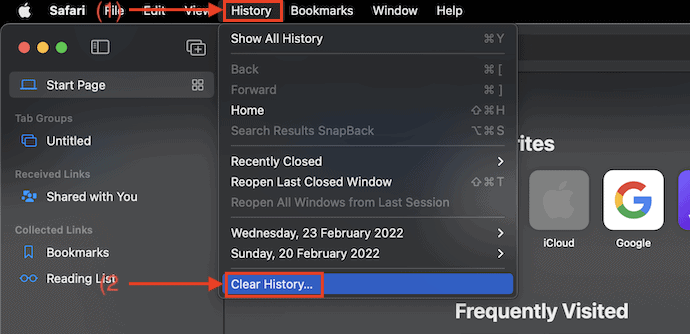
- A small window will pop-up. In that window, it provides time range options like the last hour, Today, Today & Yesterday, and all time. Choose the “All Time” option and click on “Clear” .
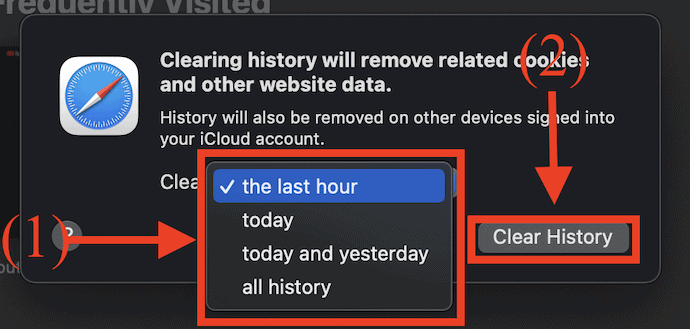
- That’s it, all the history of safari browser will be cleared.
2. Clear Temporary Files and Cache
- Launch the Safari Browser. Click on the “Safari” option available on the top menu and click on the “Preferences” option.
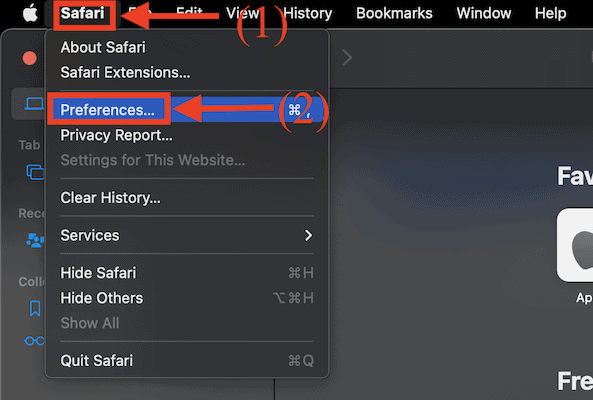
- A window will pop-up. Click on the “Advanced” option and check-in the “Show Develop menu in menu bar” option.
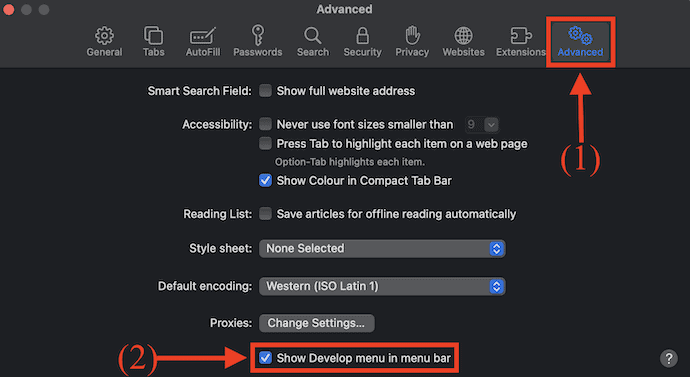
- Then the Develop option will be shown in the top menu bar. Click the “Develop” option and a options list will open. Choose the “Empty Caches” option from that options list. You can also use the keyboard control “Option + Command + E” .
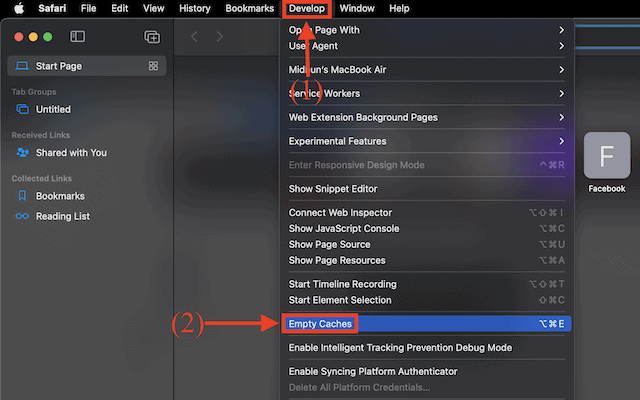
- Also Read: Best Anti-malware Softwares for Mac
- 5 Best free anti-virus for Mac in 2020
3. Clear All Cookies
- Launch the Safari Browser and click on the “Safari” option available in the top menu bar. Then a options list will open. Choose the “Preference” option from the options list.
- Then a window will pop-up. Move to the “Privacy” section by clicking on it and click on the “Manage Website Data” option.
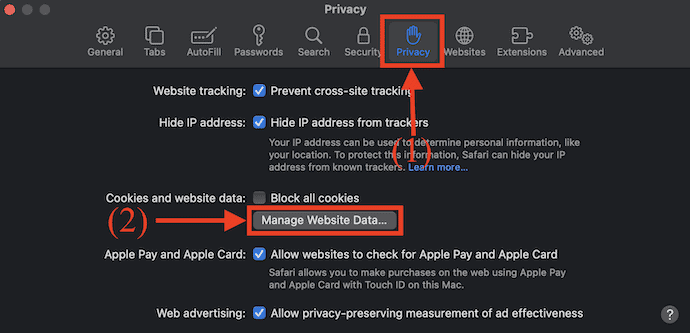
- Another window will pop-up showing all the cookies present in the safari browser. Click on the “Remove All” option. A small window will popup and choose the “Remove Now” option. Later, click on “Done” .
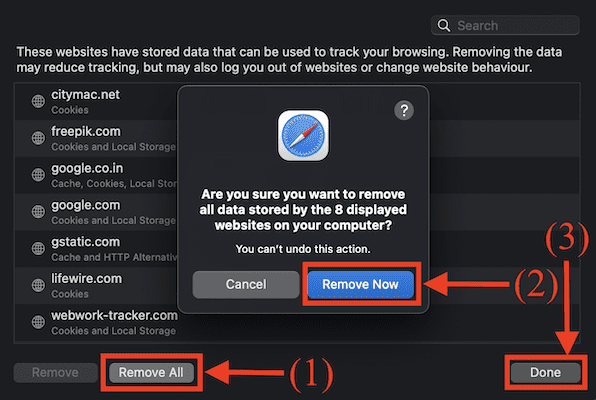
4. Disable/Delete Plugins and Extensions
- Launch the Safari Browser. Click on the “Safari” option available at the top menu bar and a options list will open. Choose the “Preference” option from the top down list.
- A window will pop-up. Head to the “Websites” option and there you will find all the plugins installed on Safari Browser and permissions access like Camera, Microphone, etc., that are allowed on Safari Browser. Delete all the installed plugins and disable the permissions.
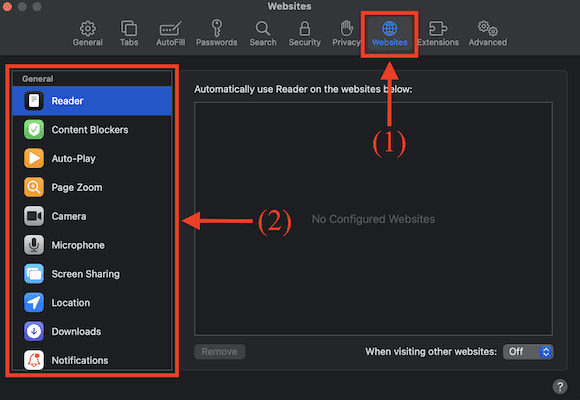
- Likewise, Choose the “Extension” option in the Preference window. There, you will find all the installed extensions. Remove all those extensions.
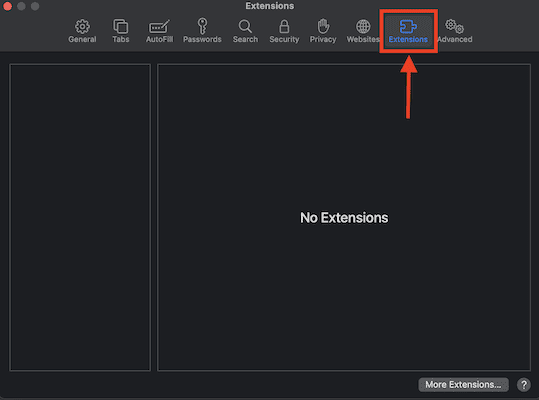
5. Reset Safari To Default setting using Terminal
Even though after trying the above-stated methods, there might be some traces of safari browser. To remove the data completely and reset Safari to default settings, you can try the “Terminal” option.
To Try this Terminal method, you have to be careful as the simple mistake in the code leads to your Mac crash. So carefully enter the code and execute each line at a time.
- Go To “All Apps” and choose the Terminal Application to launch. Or Else, you can also launch terminal using the Spotlight. Press “Command + Space” and search for “Terminal” .
- mv ~/Library/Safari ~/Desktop/Safari- `date +%Y%m%d%H%M%S` ;
- rm -Rf ~/Library/Cache/*;
- rm -Rf ~/Library/Caches/Apple\ -\ Safari\ -\ Safari\ Extensions\ Gallery;
- rm -Rf ~/Library/Caches/Metadata/Safari;
- rm -Rf ~/Library/Caches/com.apple.Safari;
- rm -Rf ~/Library/Caches/com.apple.WebKit.PluginProcess;
- rm -Rf ~/Library/Cookies/*;
- rm -Rf ~/Library/Cookies/Cookies.binarycookies;
- rm -Rf ~/Library/Preferences/Apple\ -\ Safari\ -\ Safari\ Extensions\ Gallery;
- rm -Rf ~/Library/Preferences/com.apple.Safari.LSSharedFileList.plist;
- rm -Rf ~/Library/Preferences/com.apple.Safari.RSS.plist;
- rm -Rf ~/Library/Preferences/com.apple.Safari.plist;
- rm -Rf ~/Library/Preferences/com.apple.WebFoundation.plist;
- rm -Rf ~/Library/Preferences/com.apple.WebKit.PluginHost.plist;
- rm -Rf ~/Library/Preferences/com.apple.WebKit.PluginProcess.plist;
- rm -Rf ~/Library/PubSub/Database;
- rm -Rf ~/Library/Safari/*;
- rm -Rf ~/Library/Safari/Bookmarks.plist;
- rm -Rf ~/Library/Saved\ Application\ State/com.apple.Safari.savedState;
- After executing the above code, the data will be cleared completely.
By trying all the above-stated methods, you can reset Safari to the default setting on Mac.
How to Reset Safari to default Settings on iPhone?
Now, Let’s see the process to reset Safari to default settings on iPhone.
- Go To “Settings” . Scroll down to find the “Safari” browser option and tap on it to select.
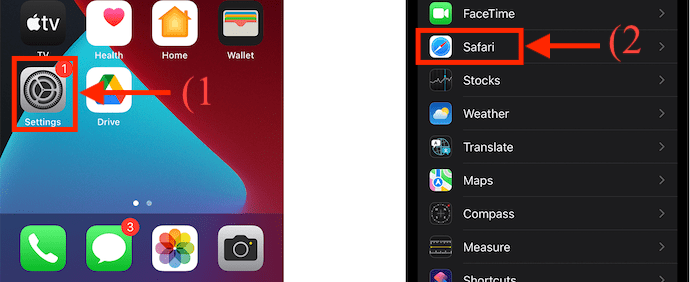
- In the safari browser setting, scroll down and there you will find “Clear History and Website Data” option. Tap on it and then a small confirmation window will open. Tap on “Clear History and Data” option. That’s it, the history of Safari browser will be cleared.
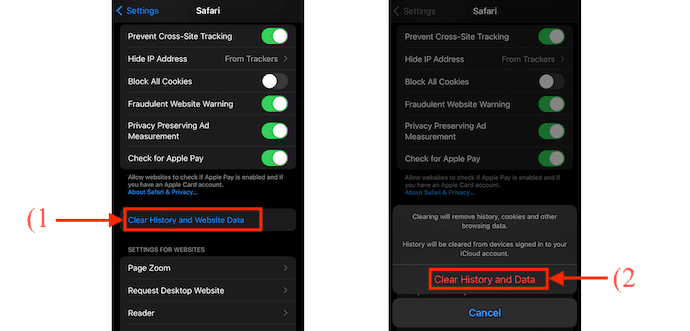
2. Remove Website Data
- Move to “Settings” and choose the “Safari” application from the list.

- Scroll down to the bottom and there you will find “Advanced” option. Tap on it. Choose the “Website Data” option by tapping on it.
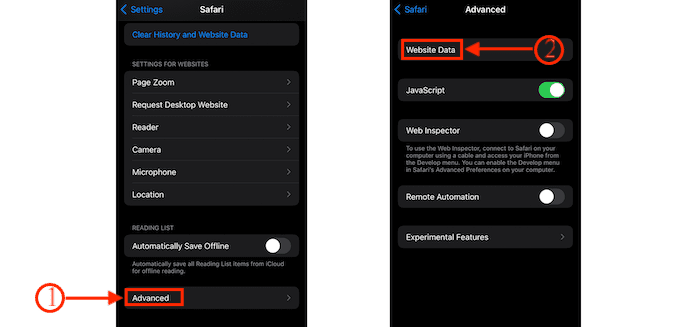
- Then you will find the list of website data. Scroll down to find the “Remove All Website Data” option. Tap on it and a confirmation notification will open. Click on the “Remove Now” option to remove the data completely.
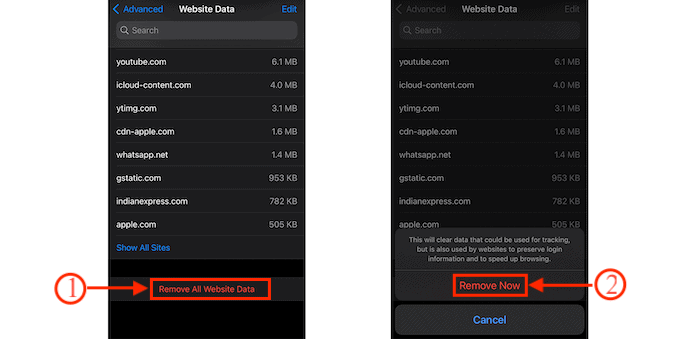
- This is how you can remove all the data and reset Safari to Default Settings on iPhone.
- Also Read: The disk you inserted was not readable by this computer fix in mac
- 4 useful tips to keep your mac clean and healthy
By following the above-stated methods, you can easily reset Safari to default settings on both Mac and iPhone. All the methods are very easy to try but you have to be very careful while trying to reset Safari to default settings. Because making a single error in writing and executing the code will lead to more damage.
I hope this tutorial helped you to know about How To Reset Safari To Default Settings on Mac and iPhone . If you want to say anything, let us know through the comment sections. If you like this article, please share it and follow WhatVwant on Facebook , Twitter , and YouTube for more Technical tips.
How To Reset Safari To Default Settings on Mac and iPhone – FAQs
Can Safari be uninstalled and reinstalled?
Safari is part of the macOS and hence can’t be uninstalled or reinstalled.
What happens if I uninstall Safari?
On new macOS versions, you can’t completely uninstall Safari. The binary file of the app will remain, even if you remove every associated file and history.
Is the Safari browser still available?
Although, after a while, Apple decided to develop the Safari version for Windows as well, but eventually disconnected. Safari is still the default browser for all Apple devices like iPhones, Mac,iPad, and MacBook
Does Safari use Google?
Operating System Compatibility: Safari can be used natively only on Mac and iOS devices (and Android with some not-recommended emulating).
Does Safari work on Windows 10?
You can now enjoy using Safari with all of its features, on your Windows 10 computer. Keep in mind that Apple no longer offers Safari updates for Windows.
Leave a Comment Cancel reply
PDF Editing Tricks
-------------------
How to Convert PDF to Editable PDF How to Add a signature to PDF Adobe Reader Vs Acrobat DC How to Convert PDF to Word How to Merge Multiple PDF files in to One 8 Best PDF Editor Software How to remove password from PDF How to Compress PDF file How to Convert Word to PDF >>> View All >>>
Facebook Tricks
How to acceps/reject all friend requests at once on Facebook How to download all Facebook photos at once How to create album How to block some one on Messenger How to recover deleted Facebook messages How to upload HD videos to Facebook How to delete Facebook chat history How to get Facebook notifications on Desktop >>> View All >>>
Popular Topics
How to Download and Save YouTube videos to Phone Gallery How to Fix - "0% available plugged in charging" Error How to Download Viki videos How to download Udemy videos How to Edit EPS file How to share a WiFi password How to convert Word to PDF with hyperlinks How to unblock blocked website How to Speed up USB file transfer How to remove watermark from PDF
Stack Exchange Network
Stack Exchange network consists of 183 Q&A communities including Stack Overflow , the largest, most trusted online community for developers to learn, share their knowledge, and build their careers.
Q&A for work
Connect and share knowledge within a single location that is structured and easy to search.
Run Safari from terminal with given URL address without open command
I'm having trouble with opening Safari from terminal. Command I tried is
Safari opens and tries to navigate to the url:
I know, I could do it using open :
But I can't. The bigger picture is quite complicated: I'm actually trying to run the browser from command-line .NET application (which is running using mono). I use System.Process .NET class to run the command and I have to be able to control the process (get process Id, check if it's active, kill it if necessary, etc.). Using open command does not return correct process Id (I tried using open with -W switch - does not help either).
- command-line
One solution would doing this in 2 times
- Open safari
- Using AppleScript to open the url tell application "Safari" to open location "http://www.google.com"
Here is a oneliner :
NB: you need to wait before running the AppleScript because Safari is not started yet. The sleep 1 might not work in every case since it will really depend on how much time Safari will need to start.
- It get's a little more tricky because I'm trying to fire it from Process .NET class, but I was able to work problems around using your solution, and that's why I'm setting it as accepted. Thanks! – MarcinJuraszek Dec 17, 2013 at 21:05
You must log in to answer this question.
Not the answer you're looking for browse other questions tagged macos command-line terminal safari ..
- The Overflow Blog
- Is GenAI the next dot-com bubble?
- Featured on Meta
- New Focus Styles & Updated Styling for Button Groups
- Upcoming initiatives on Stack Overflow and across the Stack Exchange network
- Google Cloud will be Sponsoring Super User SE
Hot Network Questions
- Select elements from a list based on alphabetical order criteria
- Bismarck urged not to hinder Russia from going deeper into the "oriental dead end." What did he mean by "oriental dead end?"
- Why would two different sized bikes not arrive at the same time starting from rest on the same slope?
- Can an undergraduate student be penalized for exceeding what is expected of a work?
- How can I identify the material of this mystery gear?
- Is Batman's utility belt ever missing something he needs?
- Latin minimal pairs, distinguished only by the length of the vowel in an unstressed non-last syllable
- Can I enter the US with a Canadian passport, without my green card?
- Jawohl answer when someone knocks at the door
- PhD supervisor wants to assume my apartment lease and buy my improvements to the apartment when I move out
- Questioning why LVM for the OS Disks in cloud environments is not recommended
- What would be the grounds for the US Chamber of Commerce to sue the FTC over its new rule concerning noncompetes?
- What is the advantage of log file rotation?
- Unable to Understand How Current Divides in Parallel Circuits
- Any possible exceptions/ways to (code compliant) put communication wire in same EMT as line voltage?
- Why is "creating jobs" seen as good and "destroying jobs" seen as bad, even when there are major labour shortages?
- Disintegrating grout
- What copyleft license could I use for a program that depends on non-free libraries?
- How do flyback converters operating in CCM regulate their output?
- Can the Sunburst spell kill a vampire?
- CUPED vs Diff-in-Diff
- Apex (de)serialize JSON with Map<String, Object> properties
- What strategies can a fighter implement to shield the outer knee from injuries caused by opponents’ strikes?
- Why don't they use guns or lasers on Arrakis?

IMAGES
VIDEO
COMMENTS
1. Quit Safari>Click on GO in finder> go to Folder> ~/Library/> rename folder named Safari to Safari1. Reopen Safari, it will start new and a new Safari Folder will be created in Library. Bring back some files like Bookmark etc one at a time.
Refer to our beginner's guide to the Mac Terminal for using it effectively. To reset Safari using Terminal: Open the Terminal app (you can find it easily using Spotlight with Cmd + Space ). Next, open the Apple menu at the top-left corner of your screen. Click Force Quit and select Safari to completely close it.
Resetting Safari. #1. Open the Terminal application, like so: Finder > Applications > Utilities. #2. The next step requires users to copy a series of commands and paste it onto the Terminal window . The codes must be identical to the ones given below. Any modification is likely to damage the system beyond repair.
Step 1: From the Launchpad, open the Safari browser. Step 2: From the Menu bar, select the History tab. Clear History Options in Safari Mac. Step 3: Choose the Clear History option from the drop-down menu that appears. Step 4: Now select the time frame to clear, it is advisable to clear all history .
Reset Safari for Mac via Terminal. Open the Terminal app (you can find it easily using Spotlight with Cmd + Space ). Next, open the Apple menu at the top-left corner of your screen. Click Force Quit and select Safari to completely close it. Enter the below commands, one line at a time.
How to easily reset Safari bookmarks, history with Terminal in macOS. Copy and paste text from this note in Terminal https://drive.google.com/file/d/1HlgHetm...
How to Reset Safari on Mac Using Terminal. If you know Terminal well, you can use it to reset your Safari browser. Here's what you need to do. Quit your Safari browser. If your Safari browser is still in use, use the Force Quit feature in the Finder to quit it. Just click Apple menu > Force Quit. Launch Terminal via Spotlight or Launchpad.
This article explains how to reset Safari to default settings by removing Safari's history and cookies, clearing the cache, and disabling extensions. Instructions apply to Safari versions 11 through 14 and iOS.
Clear your Safari cache. 1. With Safari open, go up to the top toolbar. 2. Select "Safari" and then "Preferences." 3. Toggle over to the "Advanced" tab and tick the box next to "Show Develop menu ...
To factory reset your browser on Mac, you must follow specific steps for each browser. Resetting Safari involves clearing history, cache, and cookies, removing extensions, deleting bookmarks, and removing plug-ins. Advanced users can also use Terminal commands to reset Safari. To reset Chrome, click the three dots > Settings > Reset settings ...
Part 8: Reset Safari with Terminal. Access the Terminal app (use Cmd + Space in Spotlight to locate it). Close Safari from the Apple menu on the top-left corner by choosing Force Quit, then select Safari. Type in each of the following commands line by line. The terminal will prompt to confirm the deletion of each file, enter 'y' to confirm ...
B Reset Safari on Mac using Terminal [Fast & Risky] If you use Terminal frequently and are a professional computer user, you can run several Terminal commands to reset Safari. Please be careful, as incorrect terminal commands may cause the system to crash. Go to Applications > Utilities > Terminal > Paste the following commands.
Remove the Safari Preferences File. First, go into Finder, then select 'Go' and 'Go to Folder' from the Apple menu. Type ~/Library/Preferences/ and press Enter. Find the file named com.apple.Safari.plist and move it to the Trash. This will reset your Safari preferences to default.
Step 1: Open Safari Preferences. To initiate the process of resetting Safari on your Mac, the first step is to access the Safari Preferences. This can be done by launching the Safari browser and locating the "Safari" option in the top menu bar. Upon clicking on "Safari," a drop-down menu will appear, and you should select "Preferences" from the ...
How to reset Safari. 1-Remove site history. There are two ways to do this. If you want to remove particular web sites (e.g., a web site is giving you problems whenever you visit) then try the second option. Please also note that if you are using other Apple devices (iOS devices or other Macs), if you turn on Safari in iCloud preferences with ...
Reset Safari does more than just erasing the cookies: Basically I want to the "Reset Safari" item from the menu using the Terminal. If you would want to completely reset Safari from the terminal, you would use (depending on the Safari version the commands may vary):
6. One of the very first things to try when Safari is "behaving poorly" is to launch it in Safe Mode. Quit out of Safari then just hold down ⇧ Shift while you launch it. That turns off all third party extensions and often lets you do some cleanup when you have stuff installed in Safari that is resistant to being turned off. Share.
To properly reset Safari, you need to run some code, or download my script for free: ReSaf. Contents. Reset Safari to default settings; See Also; Further Reading; Reset Safari to default settings. Open a Terminal window: Applications > Utilities > Terminal; Backup your bookmarks (optional). Copy-paste the following code into Terminal:
How to Reset Safari on Mac through Terminal. The Mac Terminal is a command tool that you can operate for different commands on your Mac. Some of the commands you can perform using it are fixing corrupted data, resetting Mac, deleting folders, and more. Terminal is the right tool to learn how to reset Safari on a Mac without opening it.
There is a new version of Safari and I'm trying to update just Safari on my machine using a terminal command. I have Big Sur 11.6.3. I've done Softwareupdate -l and I see the Safari update there. I try softwareupdate -i --product-types Safari but it never works. I'm trying to avoid using the Label name.. On my Monterey device, I know softwareupdate -i -safari-only works.
Choose the "All Time" option and click on "Clear". That's it, all the history of safari browser will be cleared. 2. Clear Temporary Files and Cache. Launch the Safari Browser. Click on the "Safari" option available on the top menu and click on the "Preferences" option. A window will pop-up.
Tour Start here for a quick overview of the site Help Center Detailed answers to any questions you might have Meta Discuss the workings and policies of this site